Best mattress 2025 – I've tried over 100 mattresses and these are the 10 I'd recommend
Top recommendations for all budgets and sleepers, from Simba, Emma, Tempur, Hypnos, and more
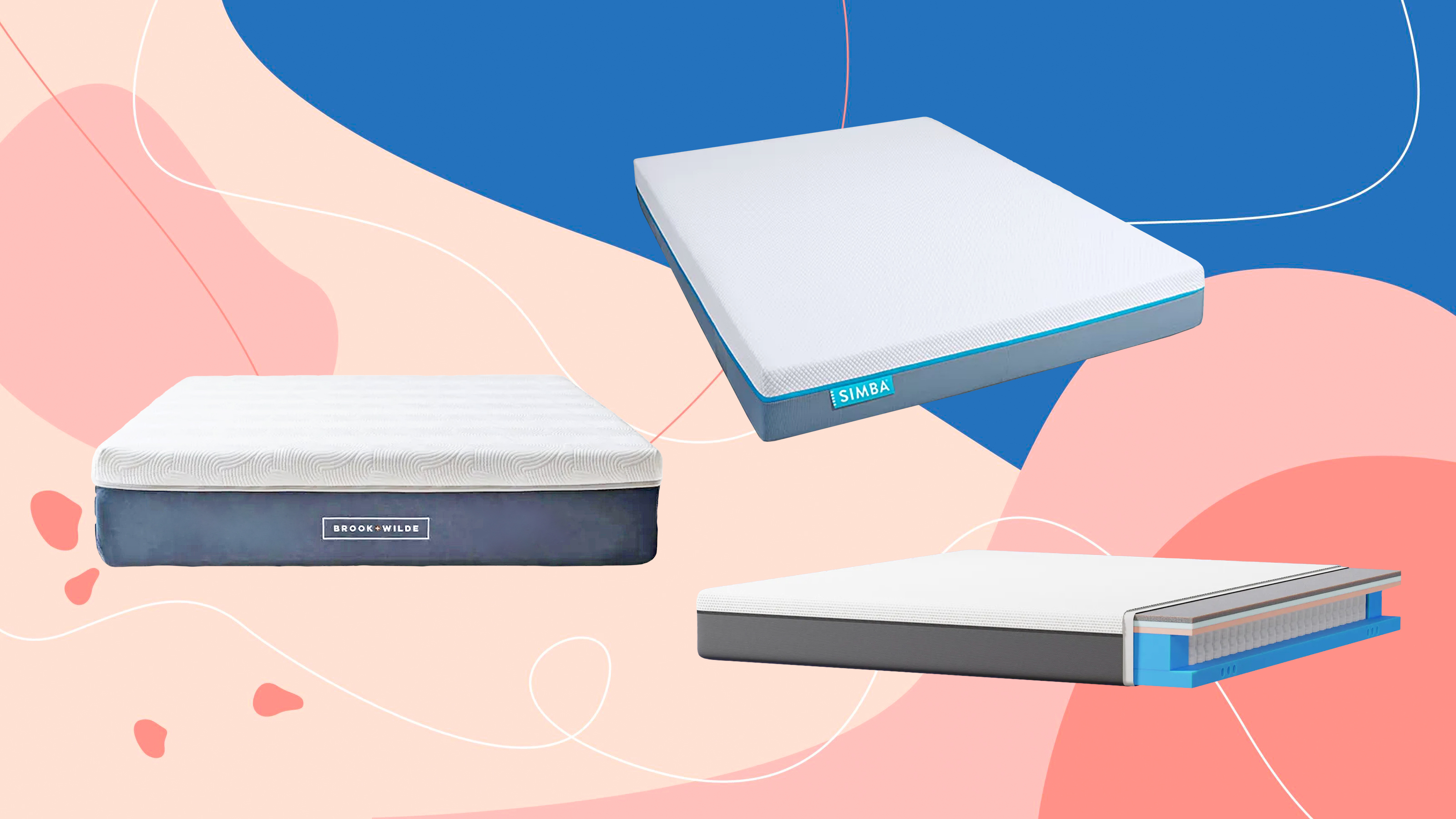

Recent updates
This article was updated on 04.04.25 to reflect the testing of eight more mattresses, and the inclusion of the Simba Hybrid Essential mattress and IKEA VALEVÅG Pocket Sprung mattress in the guide.
Why you can trust Ideal Home
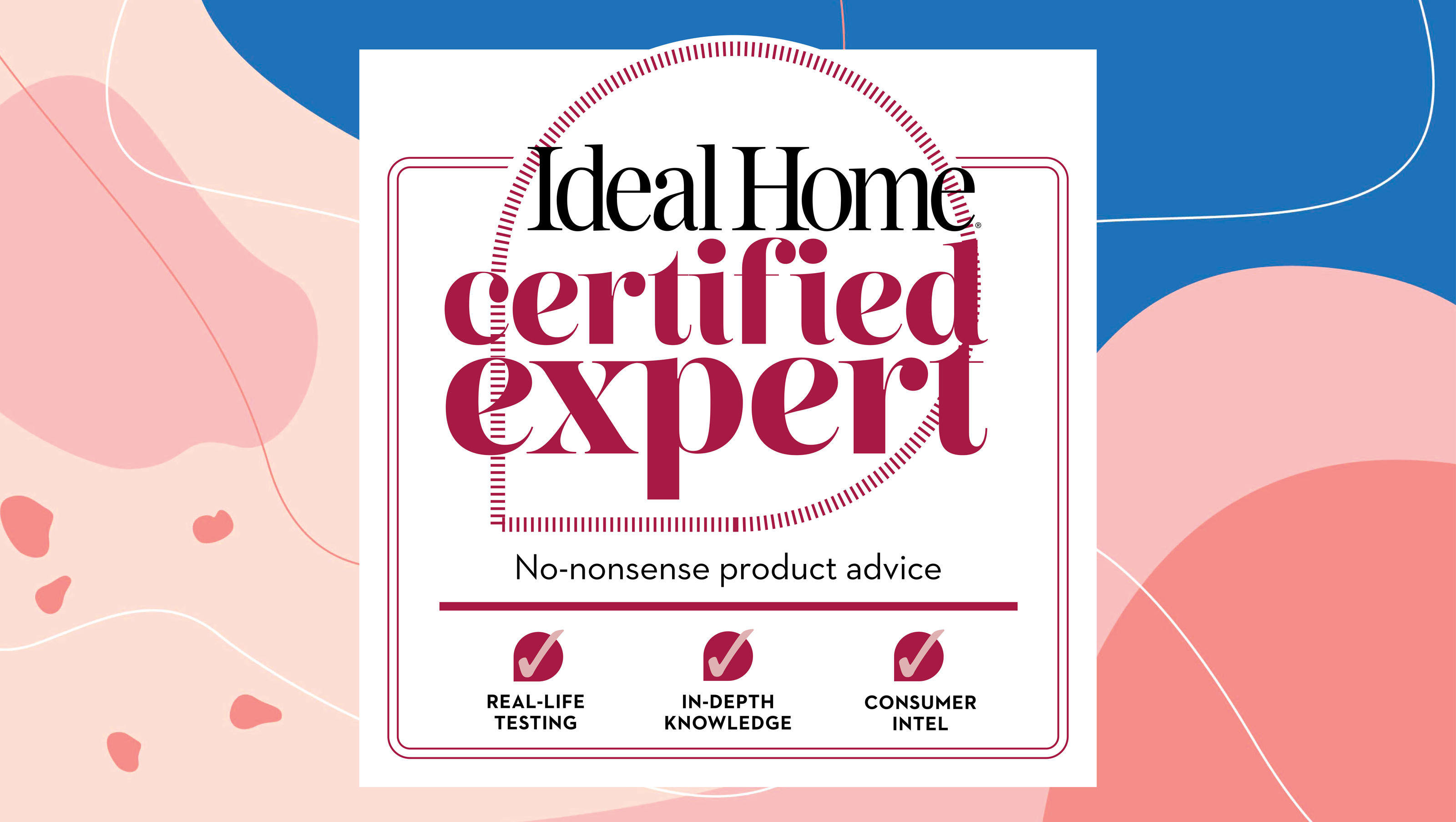
- 100 years of industry expertise
- 10,000+ hours of sleep product testing
- 100+ mattresses showroom-tested
- 38 mattresses reviewed at home
Finding the best mattress for your individual sleep needs can make a huge difference to the quality of your sleep.
I should know, I spent years considering myself a 'bad sleeper', tossing and turning and reliably overheating at 3am before I realised it was my too-soft, heat-trapping memory foam mattress to blame. I switched to a firmer pocket-spring mattress packed with breathable natural materials, and suddenly my body could regulate its temperature better and I slept through the night. I'm living proof that the right mattress works wonders.
However, what I've learned as Ideal Home’s Sleep Editor, is that one-size-definitely-does-not-fit-all when it comes to finding the right mattress. What suits my preferred sleep position and internal thermostat, won't necessarily suit you. That's why this guide aims to offer you our review team's top suggestions for all types of sleepers, from side sleepers, to back sleepers, overheaters, and those of us on a tight budget.
Along with our team of expert mattress reviewers, I’ve spent the last four years testing the comfort of over 100 mattresses, including bestsellers from Simba, Emma, Silentnight, Hypnos, Tempur, and many more. So far, I’ve put 38 of those mattresses through Ideal Home's mattress testing process. That means our reviewers sleep on each mattress at home for at least four weeks to assess its cushioning, support, temperature regulation, motion isolation, and edge support. Only our top-rated mattresses are then included in this guide.
Overall, the Simba Hybrid Original mattress has proven to be one of the best mattresses we’ve tested, thanks to its winning formula of comfort, support, and value for money. However, our other choices all have their own unique features and benefits. This guide will help you narrow down the best fit for you.
The quick list
Short on time? This quick list is an overview of the very best mattresses myself and the Ideal Home review team have tested. You'll find more information on each mattress and why we recommend it if you keep on scrolling.
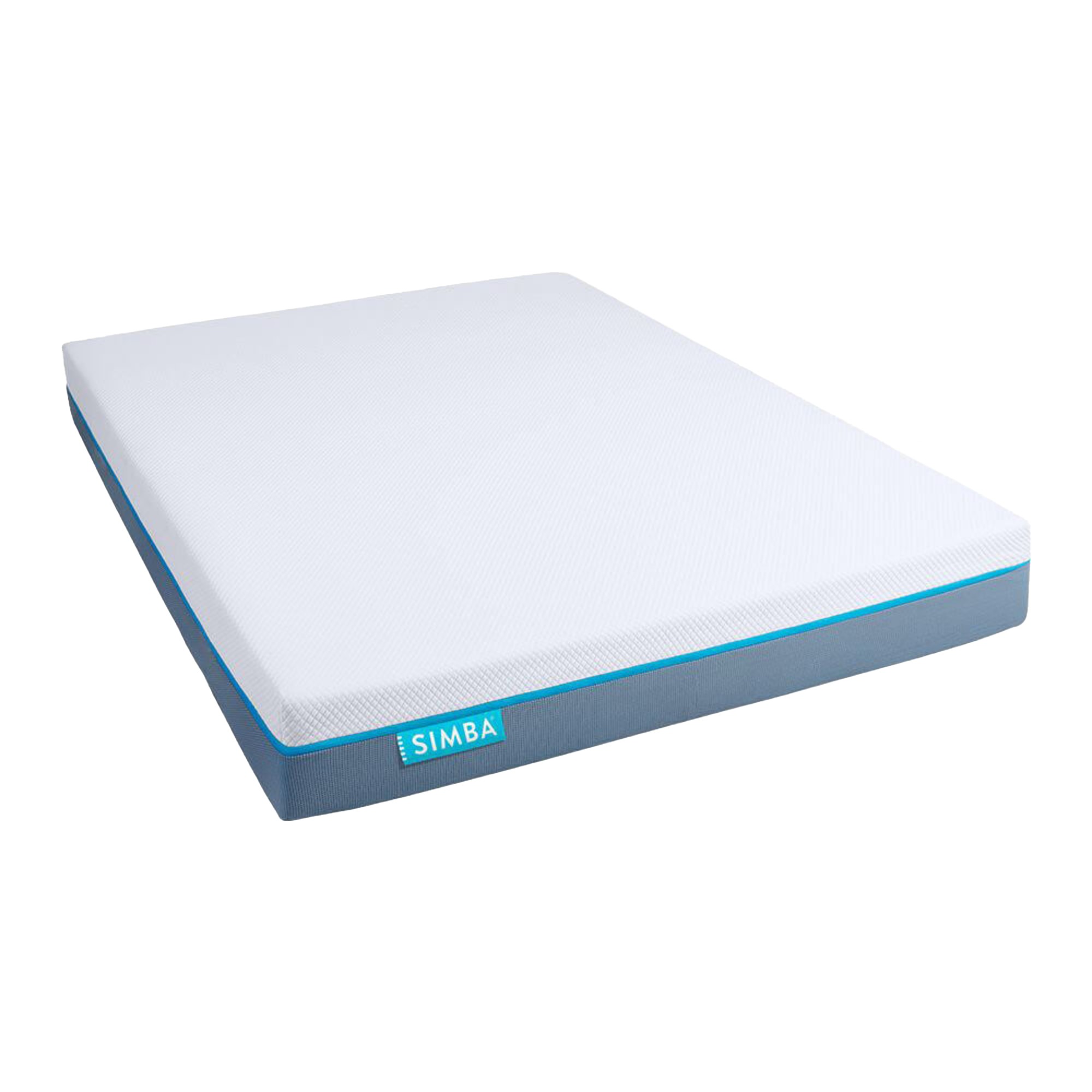
Best mattress overall
Our reviewer Linda describes this as the 'Goldilocks' of the mattress world – a sleep surface that's not too soft or too firm. A mattress-in-a-box that employs pocket springs for support with a cushioned memory foam top layer, it's particularly comfortable for side and back sleeping, and its hybrid construction means it's a good all-rounder for sleepers of various weights. It is a crowd-pleaser that's also great value.
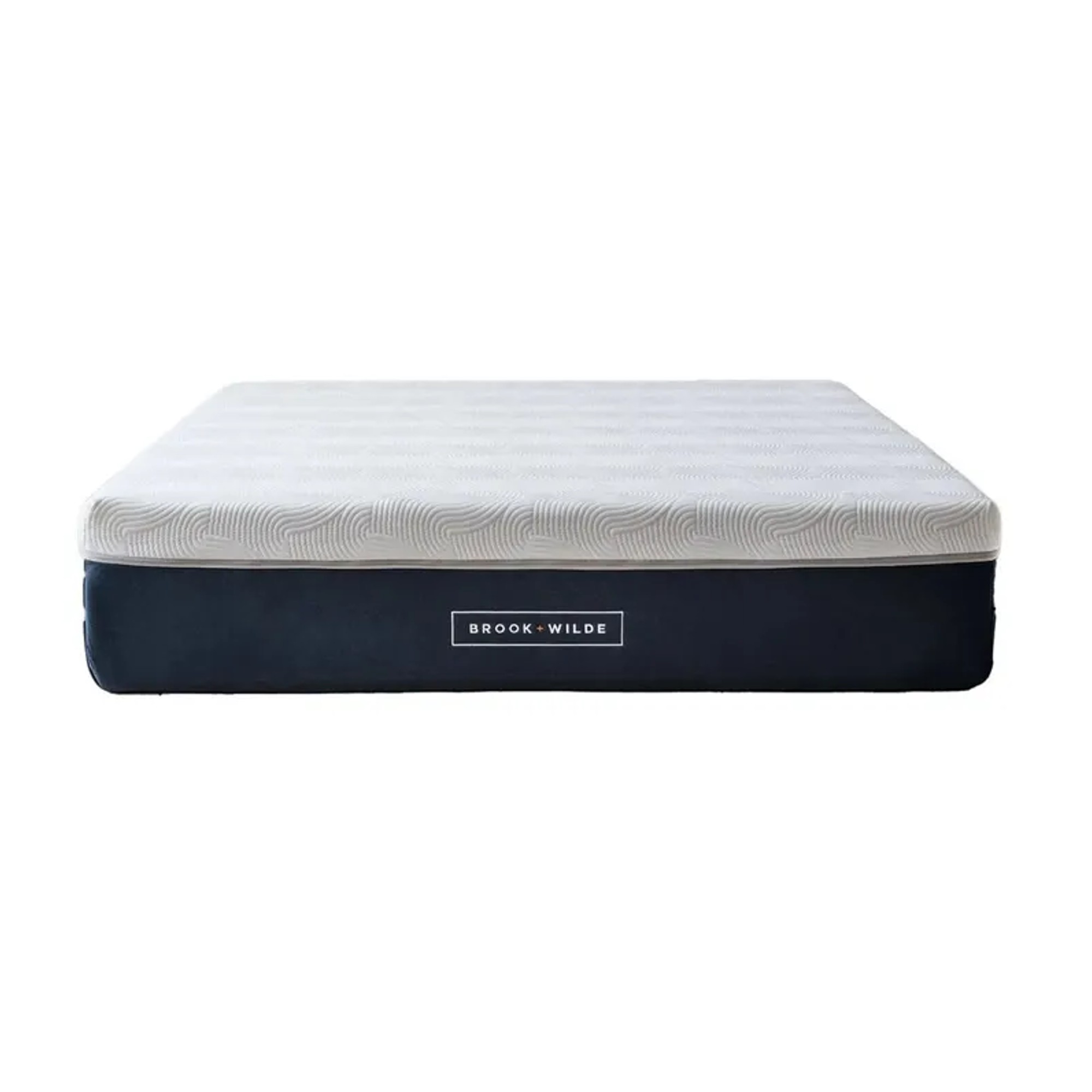
Best for back pain
Experts agree that a medium-firm mattress is the best option for reducing back pain at night. However, finding a mattress with medium-firm tension isn't easy as our body weight plays a huge part in how soft or firm we find a mattress. This hybrid memory foam mattress is available with four tension options, all with a 200 night sleep trial, that make it far easier to find the right firmness level to ease your aches and pains.
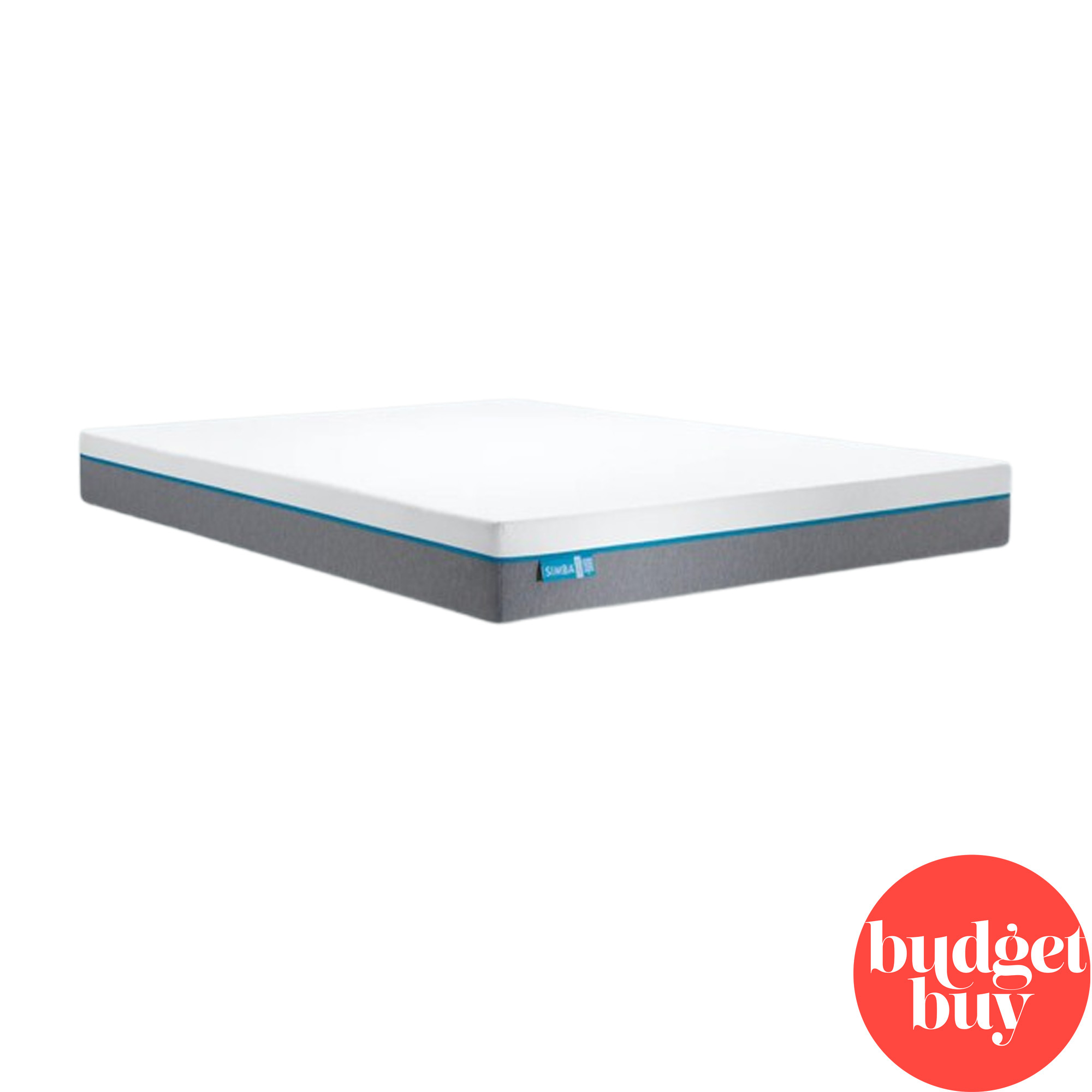
Best budget buy
We've slept on a lot of under £500 mattresses, and although the price of the Simba Hybrid Essential just creeps over the £500 mark if you're buying a double, it's the best budget mattress we've tested. It just lacks edge support and is thinner than the Hybrid Original, so it's less suitable for heavier-weight sleepers.
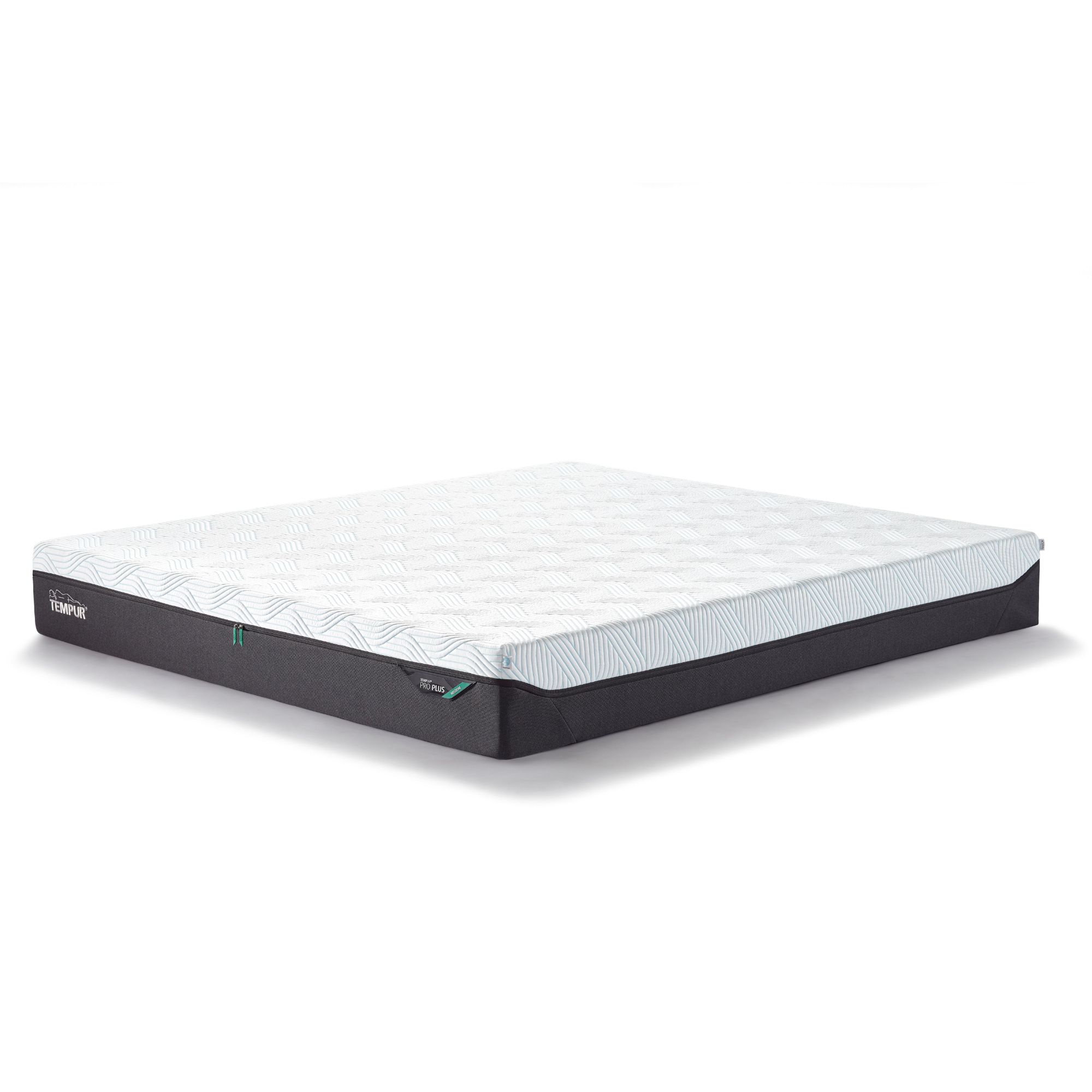
Best memory foam mattress
Unlike most pure memory foam mattresses which take a one-size-fits-all approach to firmness, Tempur's memory foam mattresses come in four different tension options to enable you to find just the right feel for you. This mattress is everything you would expect from a first-class memory foam mattress – it cushions, cocoons, offers brilliant pressure relief for the joints, and delivers excellent motion isolation that dampens any movement from a sleep partner.
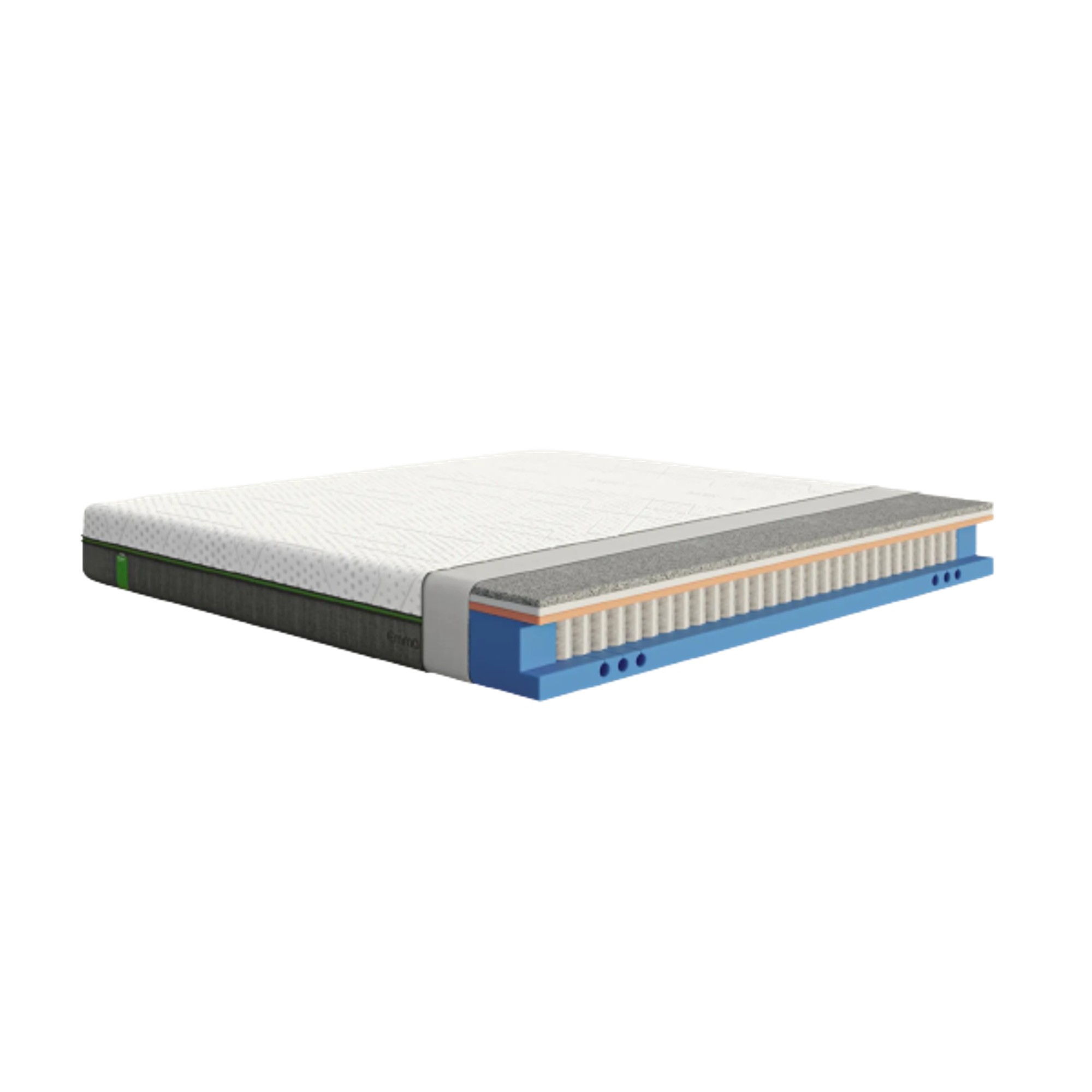
Best mattress for side sleepers
If you're a side sleeper then a hybrid memory foam mattress can be a good choice as the cushioning top layer allows shoulders and hips to sink into the mattress a little to keep the spine in natural alignment. Like the Simba Hybrid Original mattress, the Emma Luxe Cooling mattress was a hit with our side sleeping testers, and its slightly softer surface may be better suited to those of a lighter body weight.
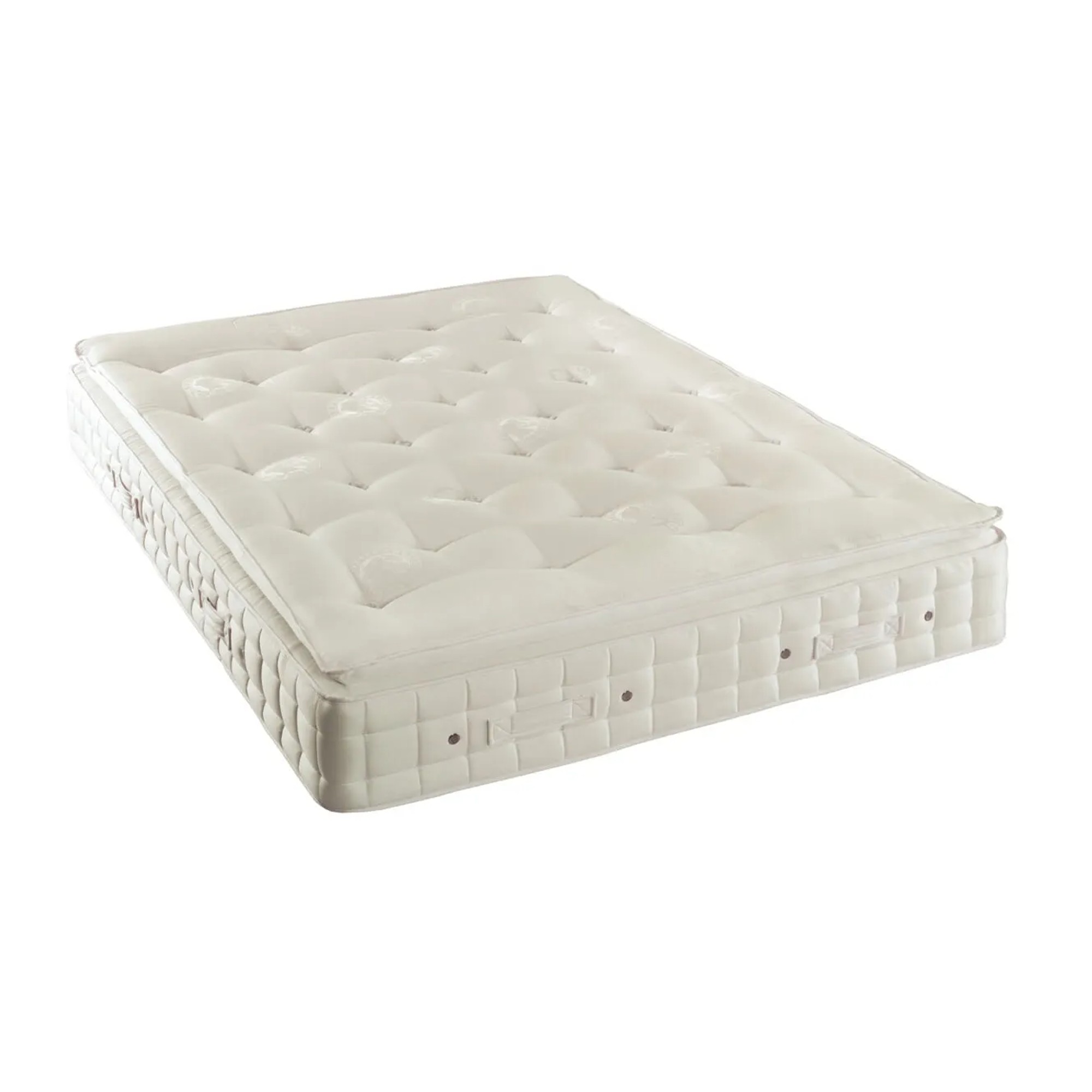
Best pocket-sprung mattress
This is the mattress I have on my own bed, and love. As a hot sleeper, it's the most breathable mattress I've slept on, and because it combines pocket spring support with a soft pillow top layer, it's highly comfortable too. Packed full of natural materials such as wool, cotton, and kapok, it's also a mattress with a low environmental impact and Hypnos' commitment to sustainable manufacture is second to none.
Best mattresses 2025 – tried and tested
Best mattress overall
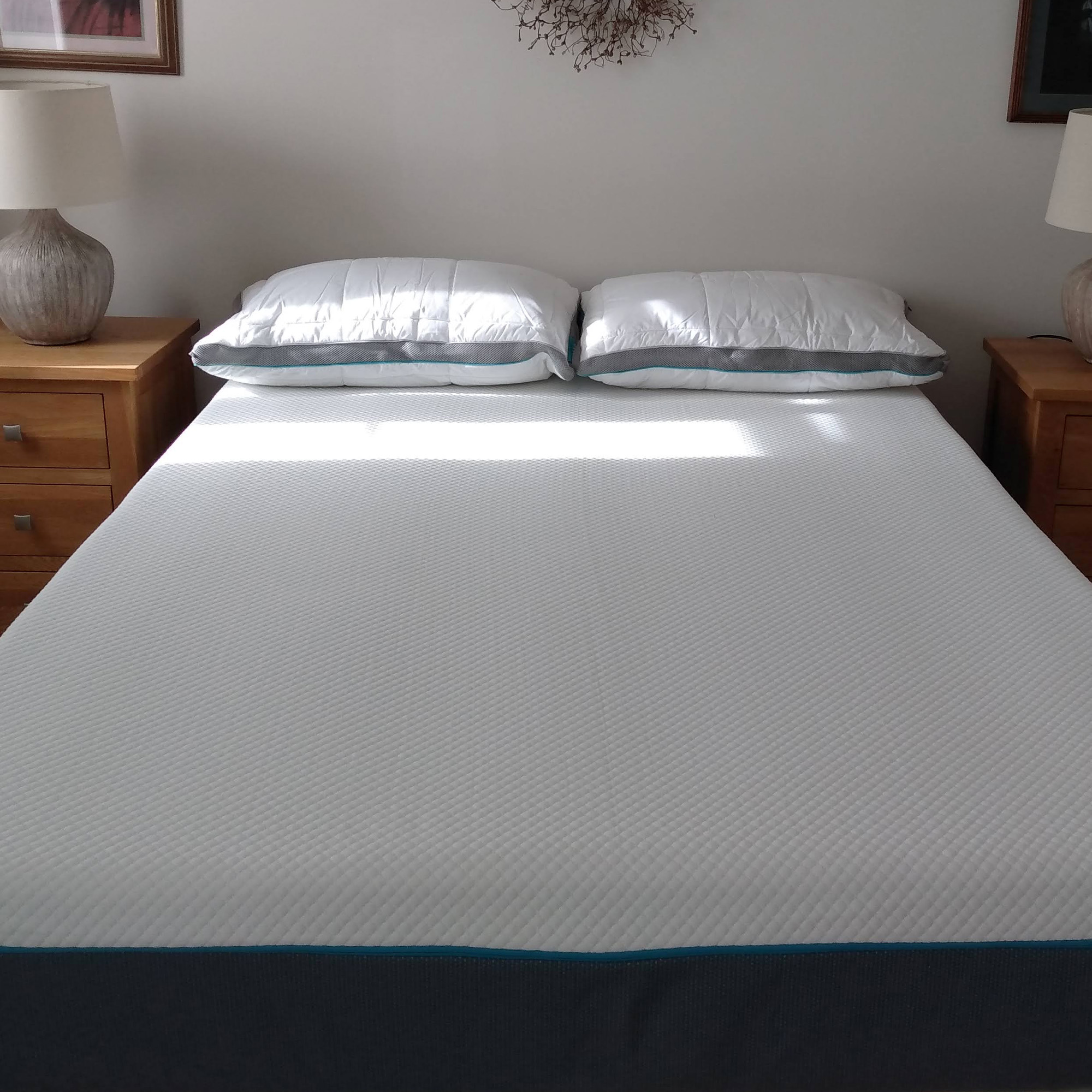
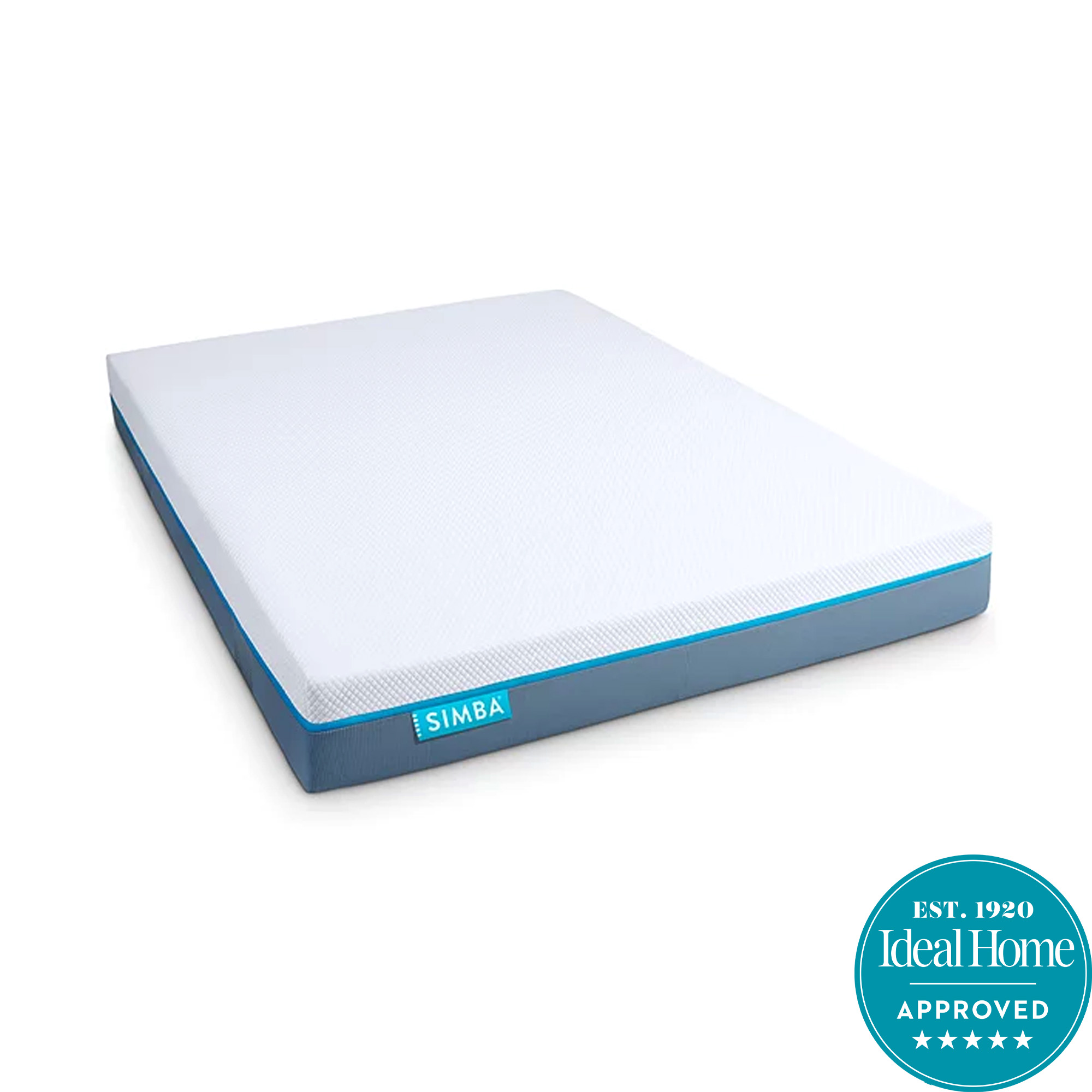
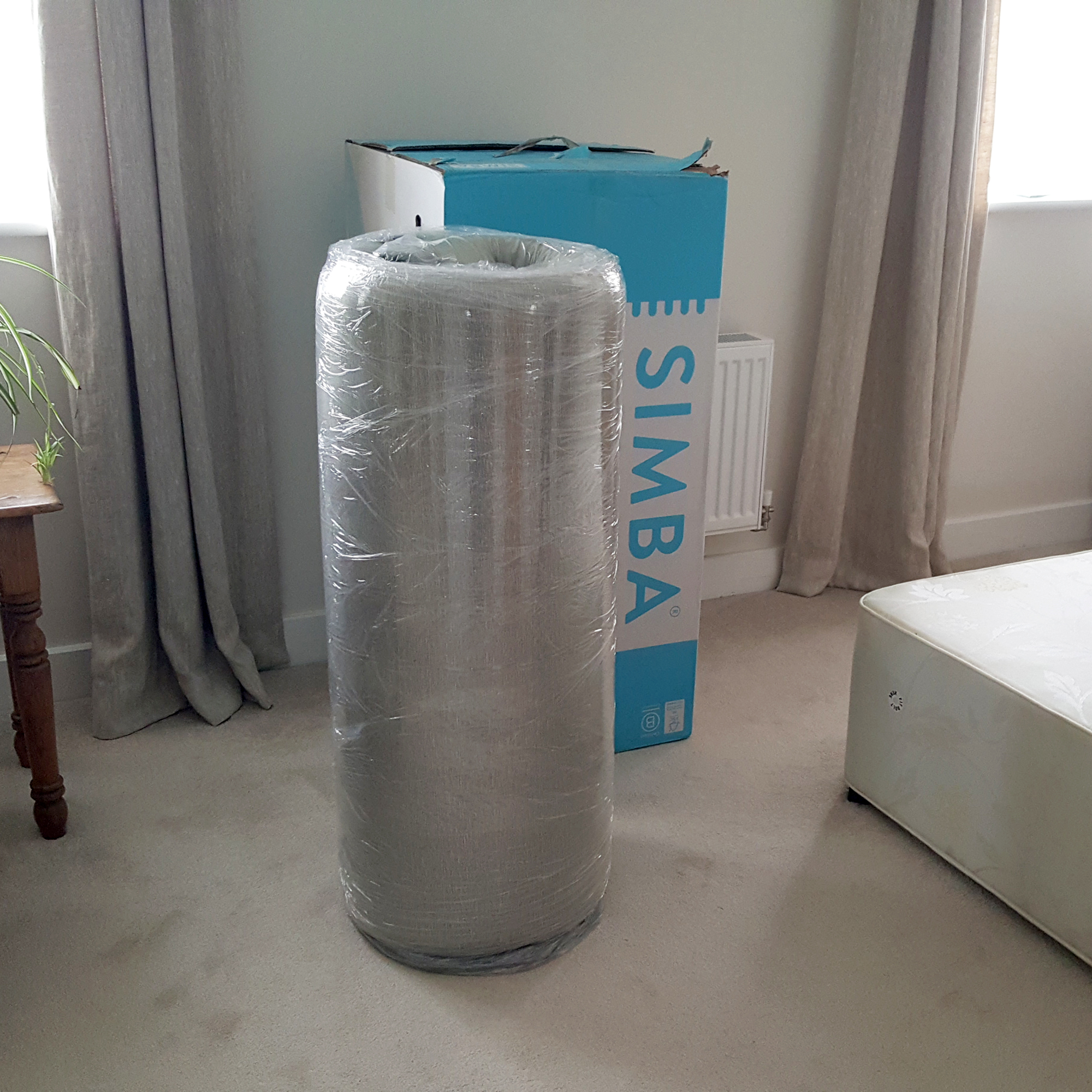
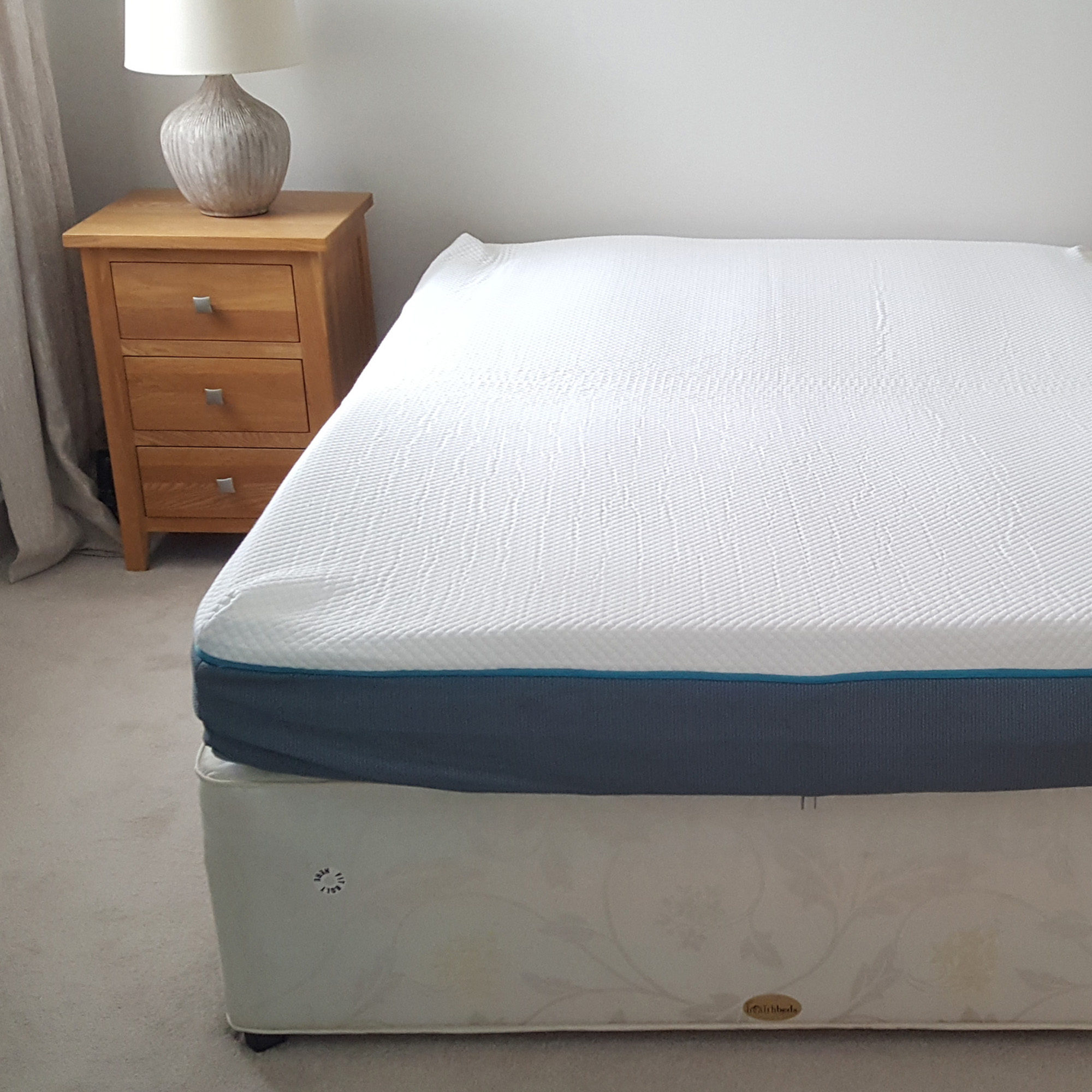
Specifications
Reasons to buy
Reasons to avoid
The Simba Hybrid Original mattress ticks all the boxes to deliver a good night's sleep and all for a reasonable price point, which is why, after testing numerous other contenders, we still rate it as the best value mattress you can buy.
This is a hybrid mattress with memory foam cushioning and spring support, and, for most of us, its medium-firm tension should prove 'just right' comfort-wise. Our testing team describe it as 'the Goldilocks of the mattress world – not too soft or too firm'. When sleeping on their sides our testers appreciated the cradling of the memory foam top layer around their hips and shoulders, and when laying on their backs they found the mattress offered plenty of support.
Simba's graphite-infused open-cell memory foam also offers better breathability and temperature regulation than most memory foam mattresses, so our usually warm sleepers didn't overheat. Our testers found the Hybrid Original's edge support, motion isolation, and responsiveness decent, welcoming the extra bit of bounce the hybrid design provided.
This mattress in a box makes is easy to negotiate tricky access or narrow staircases on delivery day, plus you can opt for delivery to your room of choice or 'white glove' delivery where the mattress is unboxed and packaging removed. Add to that a sleep trial that allows you to test out the mattress for 200 nights in your own home, great customer reviews, good value for money, and Simba's ongoing commitment to lowering its environmental impact, and we think this mattress rightly deserves its 5-star Ideal Home rating.
The only caveat is that if you sleep on your front, or are heavier or lighter than average you may need a mattress with a firmer or softer tension. In this case, it could be worth paying more for Brook + Wilde's Ultima mattress or opt for the firmer feel Sealy Newton Posturepedic mattress.
Our full Simba Hybrid Original mattress review has more detail.
Best mattress for back pain
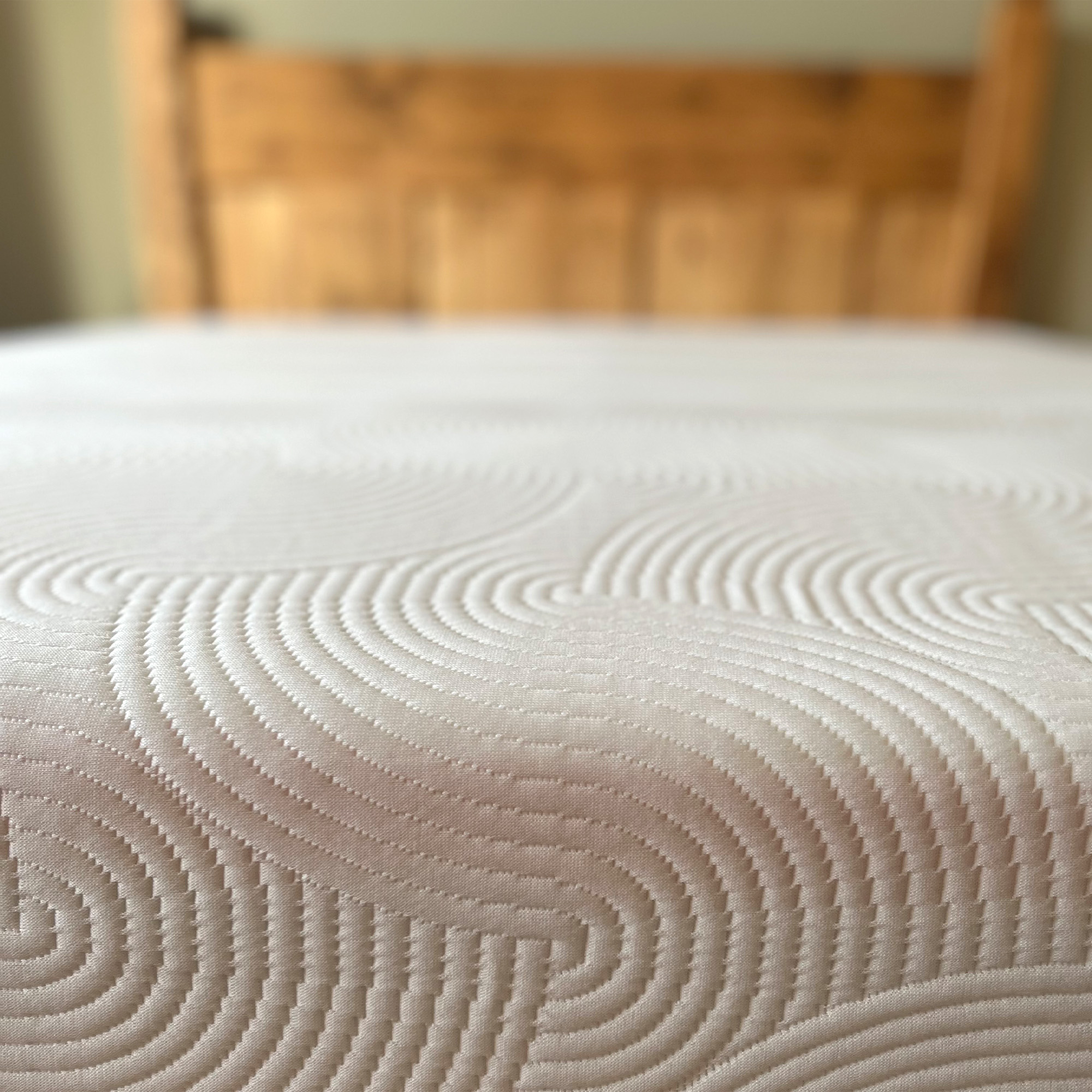
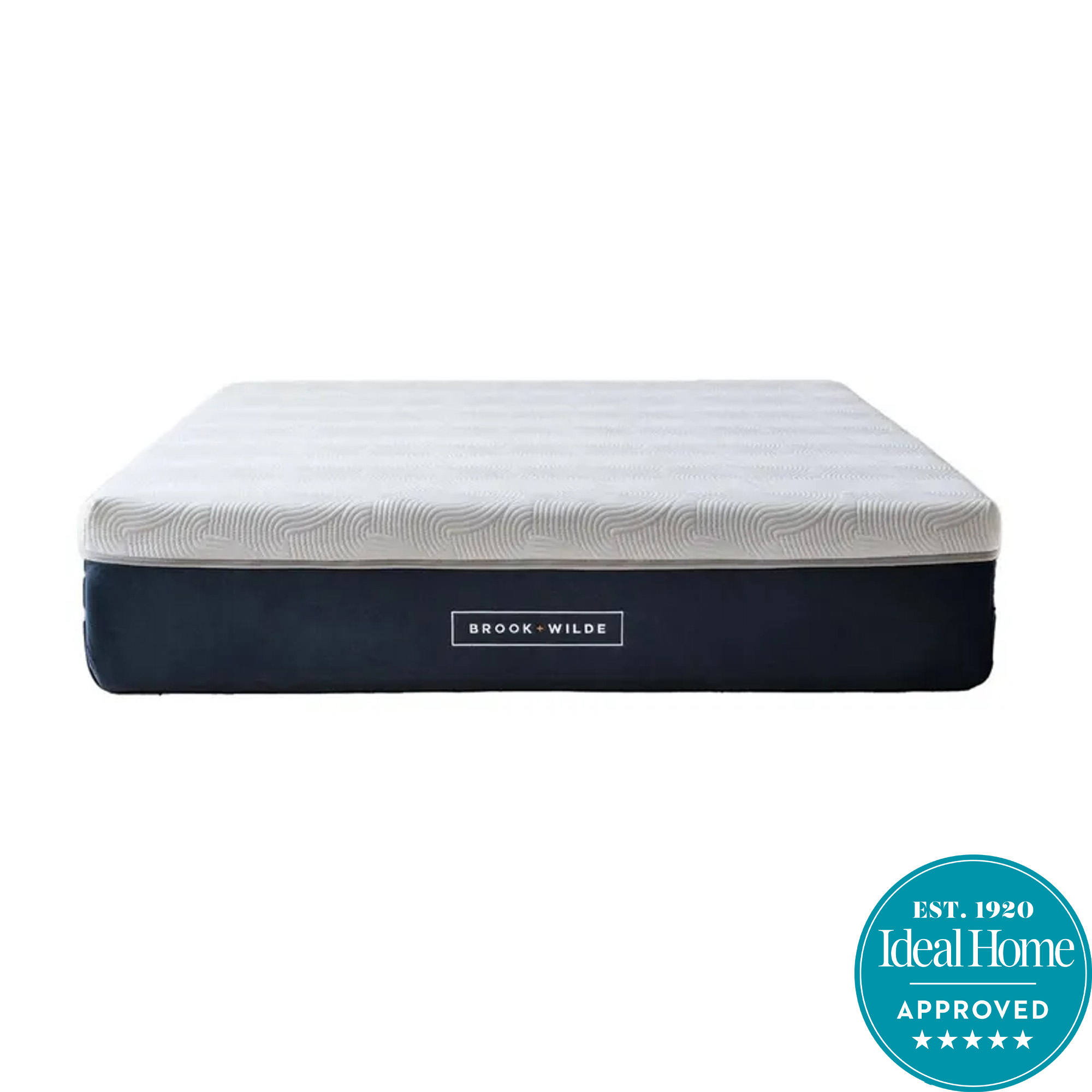
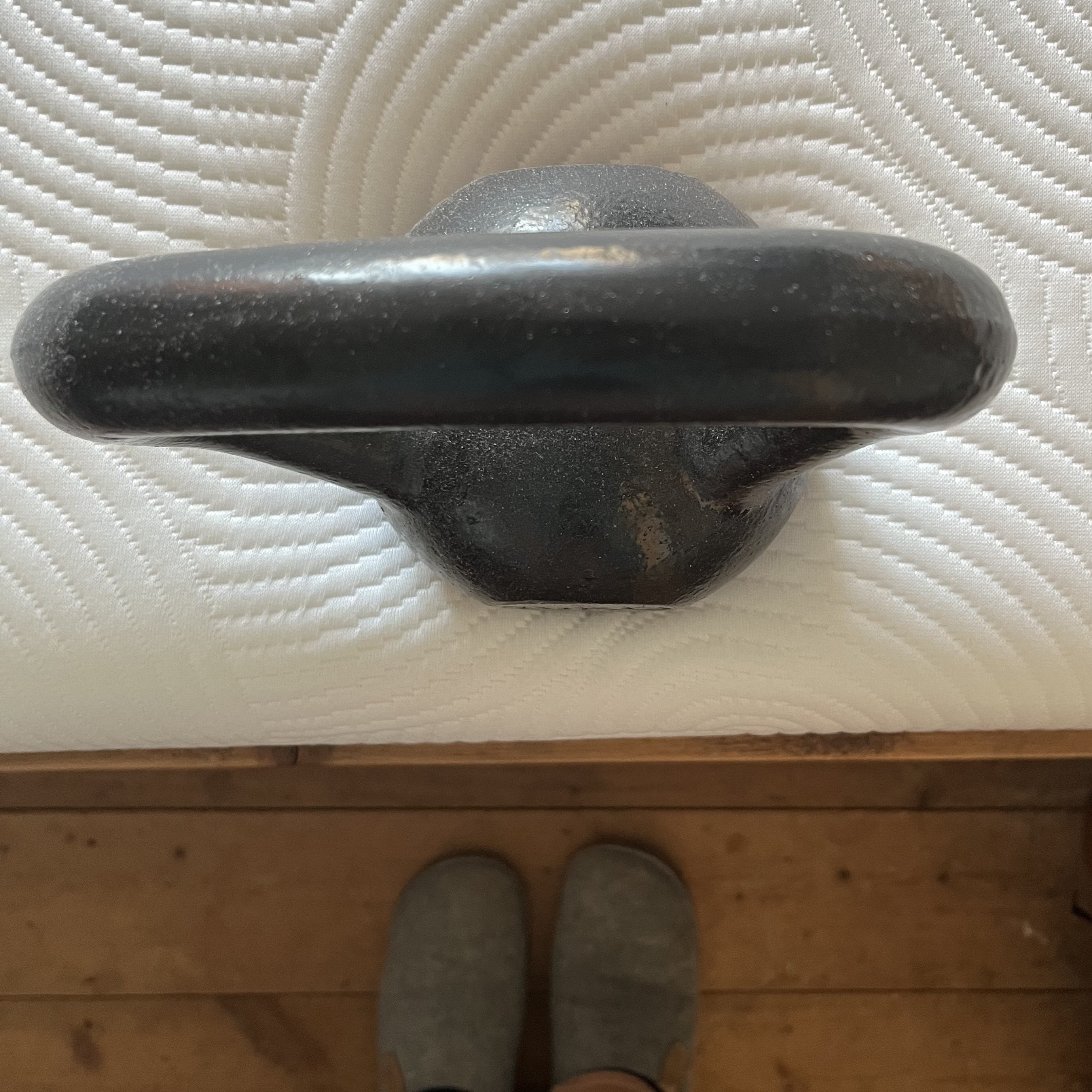
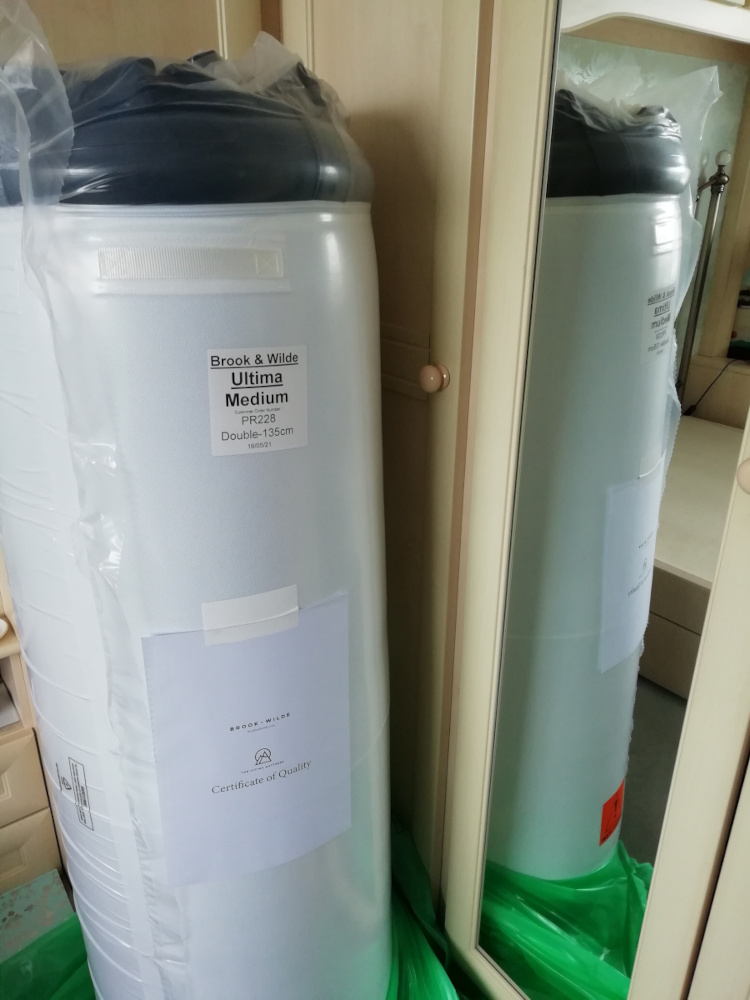
Specifications
Reasons to buy
Reasons to avoid
The Journal of Orthopaedics and Traumatology found that the best mattress for back pain is a medium-firm mattress. If you're looking for a medium-firm mattress to ease back pain then the Brook + Wilde Ultima mattress is for you.
This type of mattress can be tricky to find, because your body weight plays a big part in how a mattress's tension feels. Heavier sleepers usually need a firmer tension to nail that 'medium-firm' feel, whereas lighter-weight sleepers require a softer mattress. Thankfully, this is exactly what the Brook + Wilde Ultima mattress delivers.
A hybrid memory foam and pocket spring mattress, the Ultima is available in three tension options – soft, medium, and firm. Add to this a 200-night sleep trial that allows you to test out the mattress in your own home, and it's far easier to find exactly the right tension for your body, which can help to alleviate back pain. It certainly worked for our tester who rated this mattress 5-stars for comfort, saying 'I often suffer from lower back pain but after sleeping on the Ultima I woke up with no pain whatsoever'.
The open-cell memory foam also offers decent breathability, and our tester rated it highly for motion isolation, even when her partner tossed and turned dramatically by her side, as well as for responsiveness and edge support. The rolled delivery is also useful for homes with awkward access, and Brook + Wilde offers both delivery to your room of choice and 'white glove' delivery where the mattress is unpacked and installed for you.
The only potential downside is that this mattress is made to order, so it may take a few weeks to arrive, and, its luxurious design is matched by a luxury price tag. However, if you want to tailor your mattress' comfort to your exact specifications, the Ultima is well worth the investment.
Our full Brook + Wilde Ultima mattress review has more detail.
Best budget mattress
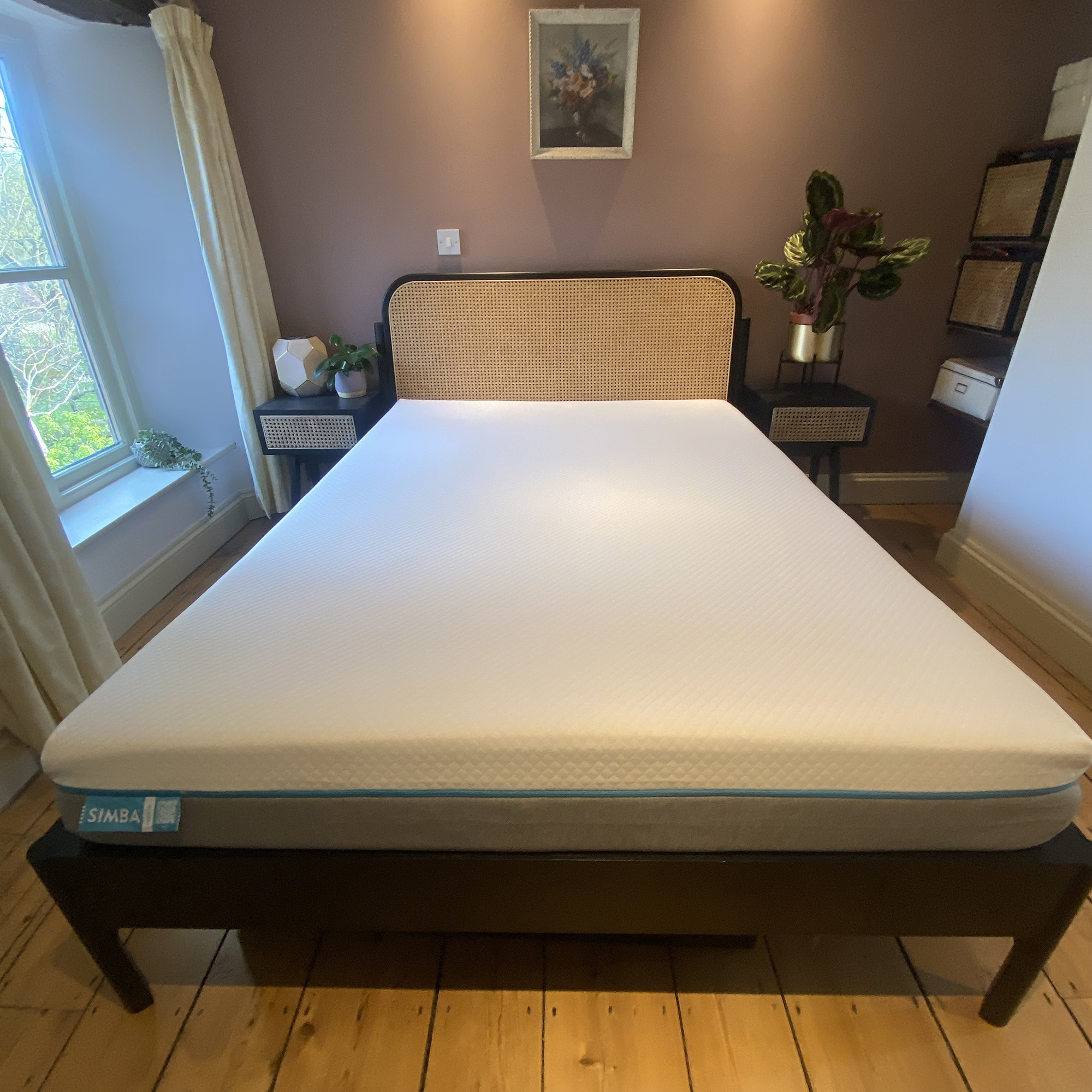

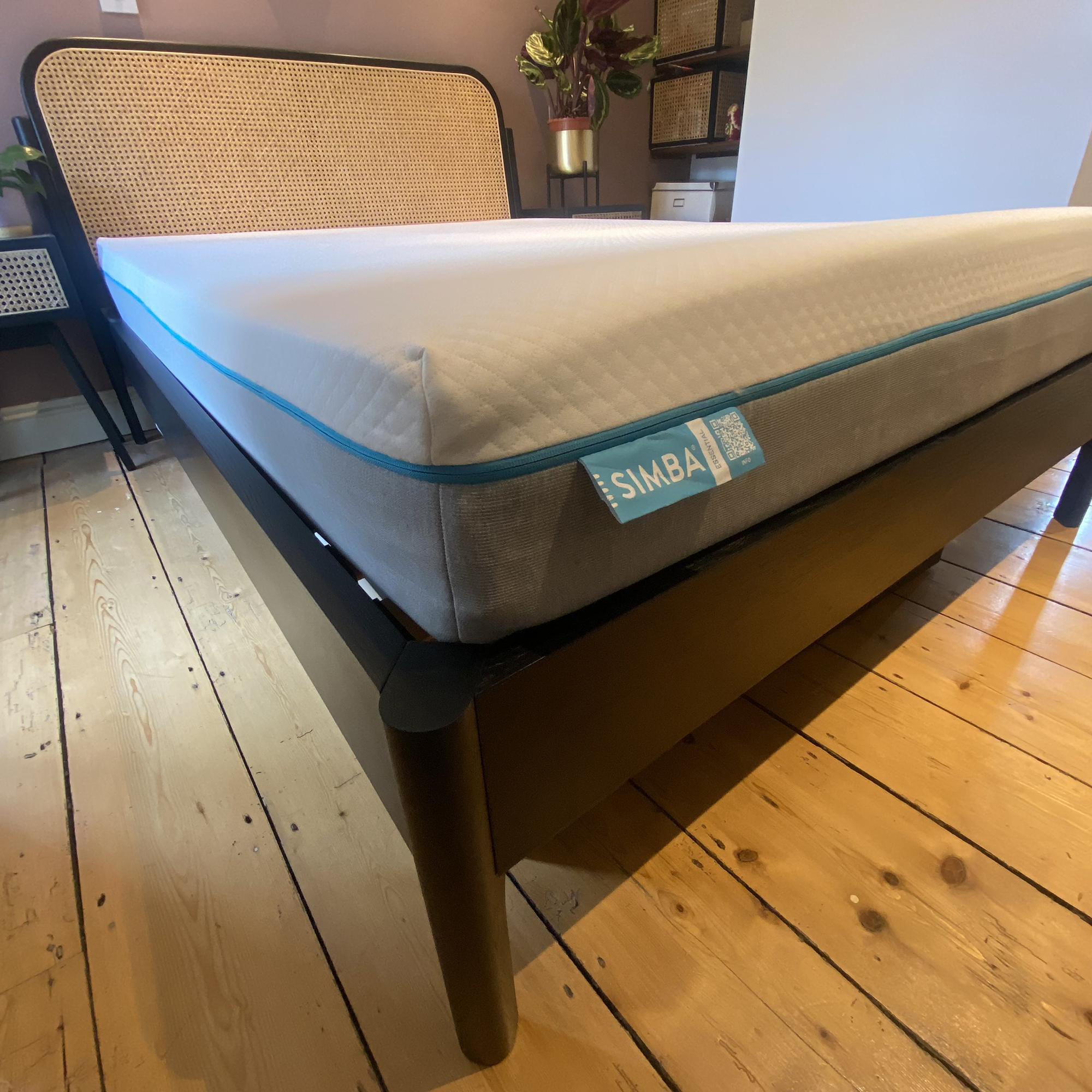
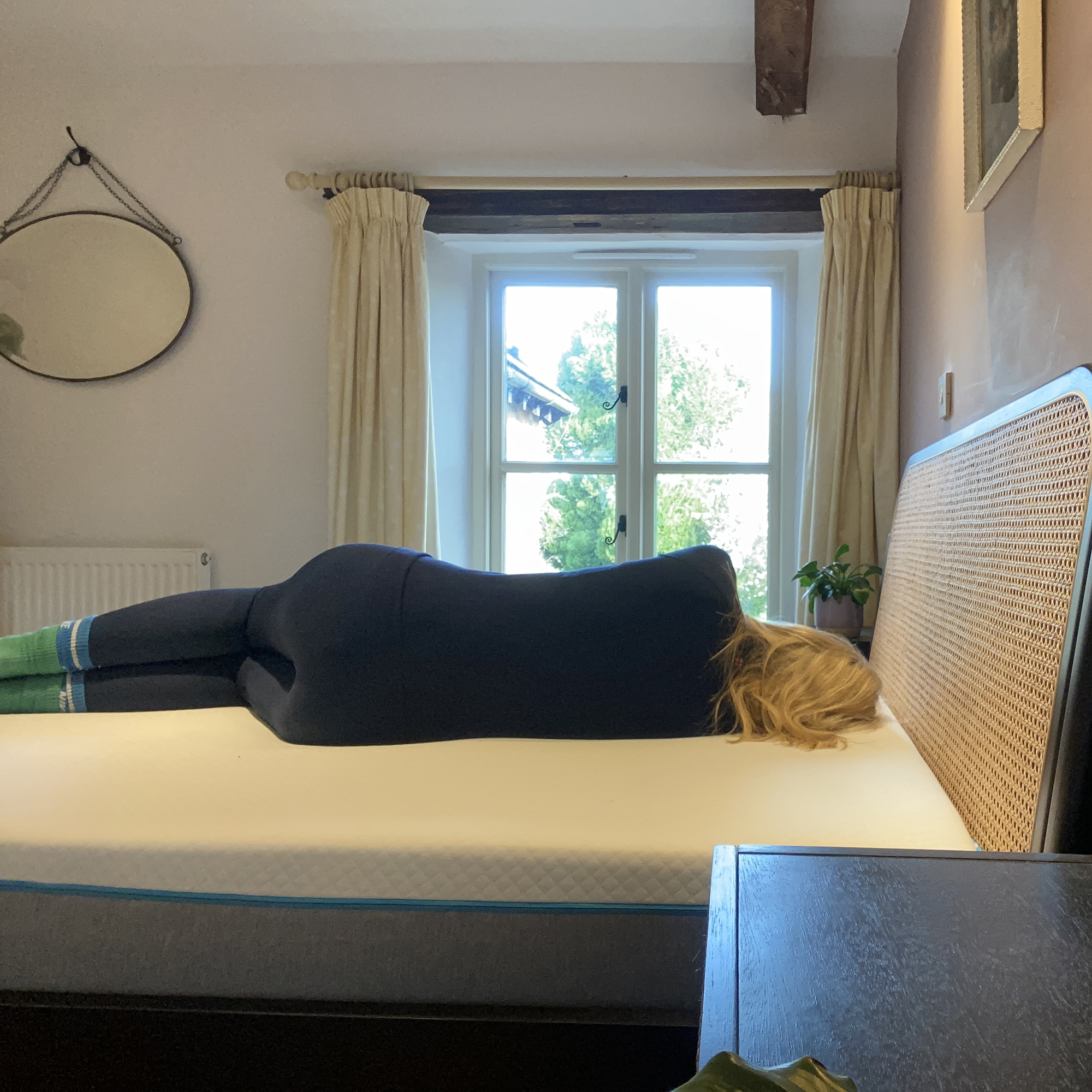
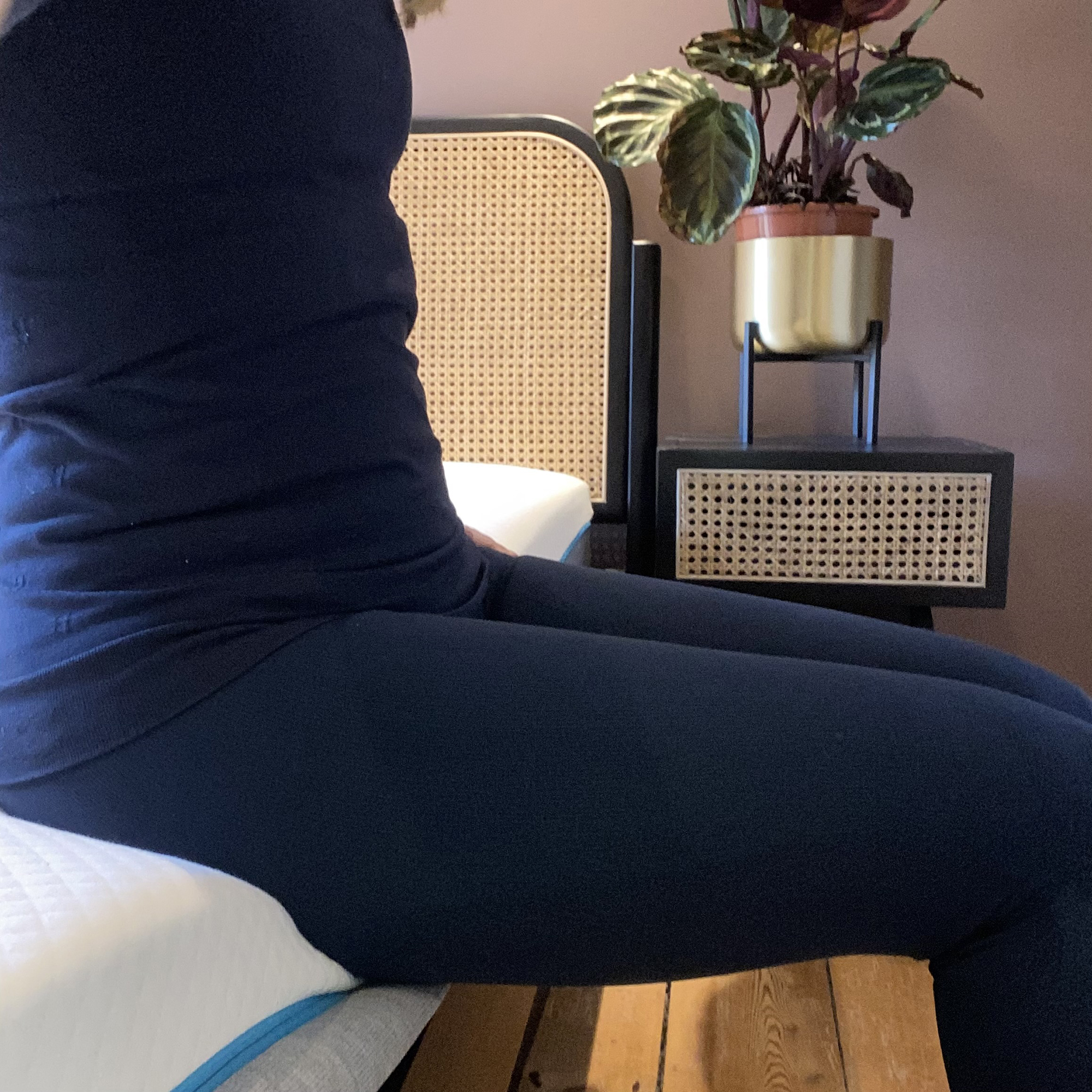

Specifications
Reasons to buy
Reasons to avoid
In our hunt to find the best budget mattress, I tasked our reviewer Rachel with sleeping on a whole host of affordable mattresses. We were aiming to find the best double mattress under £500, but in the end we had to stretch our budget just a little to crown the Simba Hybrid Essential – with its retail price of £599 for a double – our top affordable mattress.
'Having slept on budget mattresses from Emma, IKEA, Dreams, Origins, and plenty more, I think this mattress is worth the extra investment,' says Rachel. 'It offers brilliant motion isolation – my husband couldn't praise its lack of bounce enough after a few months testing mattresses where we both felt each other's every move – as well as good cushioning for joints, and a medium-firm tension that offered great support for spine alignment when I slept on my side and back.'
As ever, we were also impressed by Simba's customer service and delivery options. The mattress-in-a-box was carried to our room of choice on delivery day, and there's the option to have it unboxed and your old mattress removed if you pay a little extra.
The downsides of its budget price tag are that Rachel and her hubby both noted a lack of edge support. 'When I sat on the edge of the mattress, my bottom sank straight to the bottom of the bed frame,' Rachel reported. Like many budget-friendly mattresses, the Hybrid Essential is also thin; 20cm deep compared to the more substantial Simba Hybrid Original's 25cm depth. That makes it less suitable for heavier-weight sleepers, but if you're after a good all-rounder at a budget-friendly price point, we think this is it.
Our Simba Hybrid Essential Mattress review has the full lowdown.
Best memory foam mattress
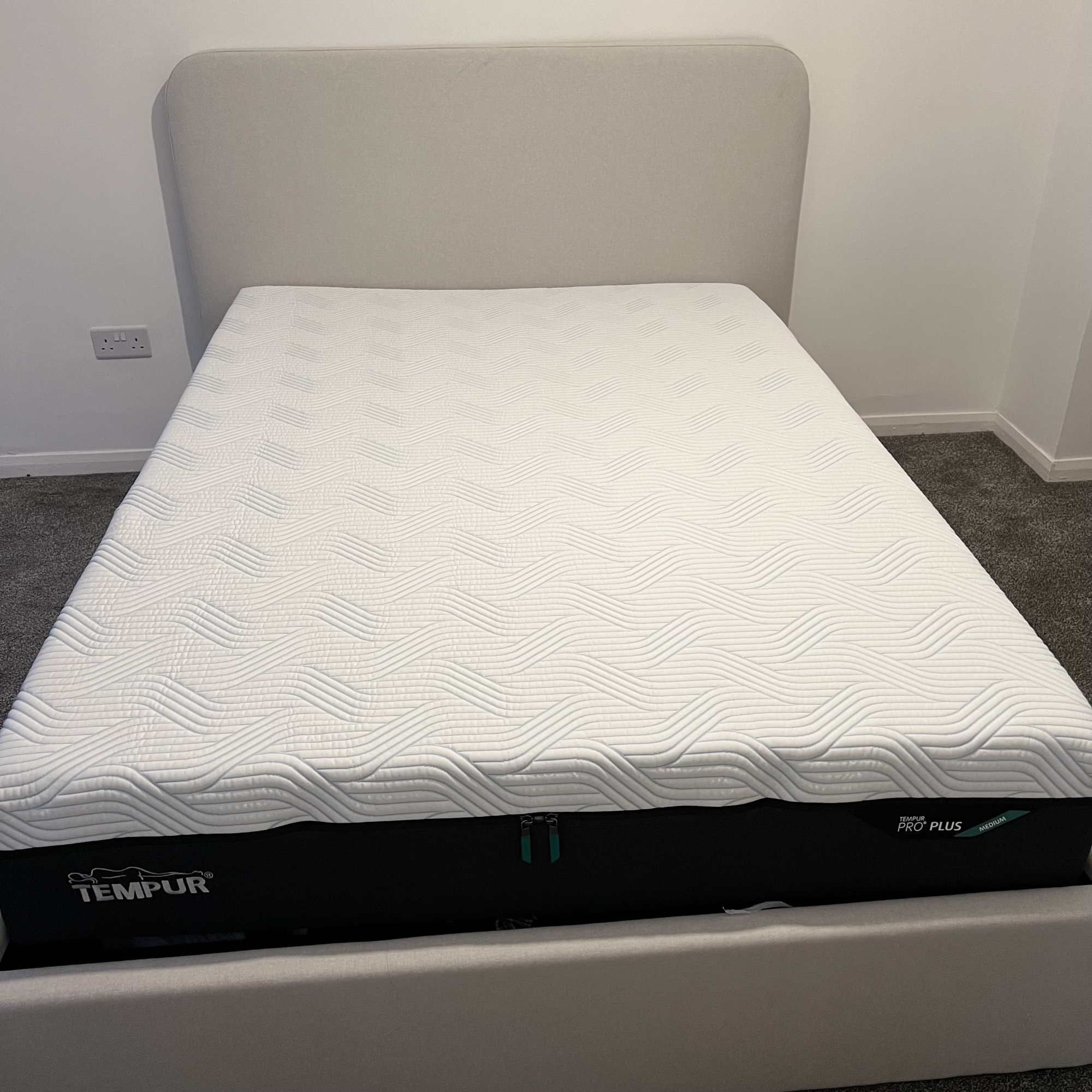
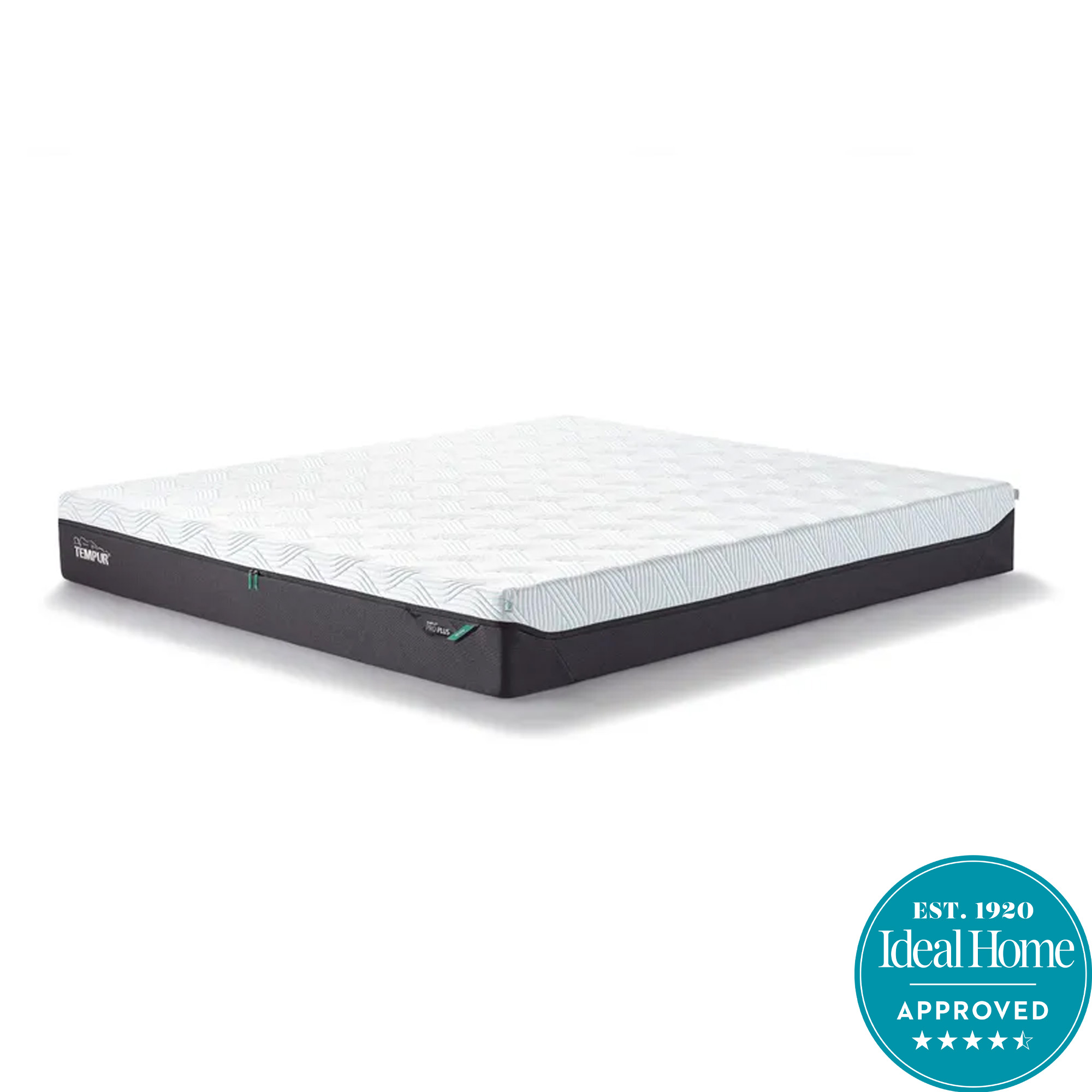
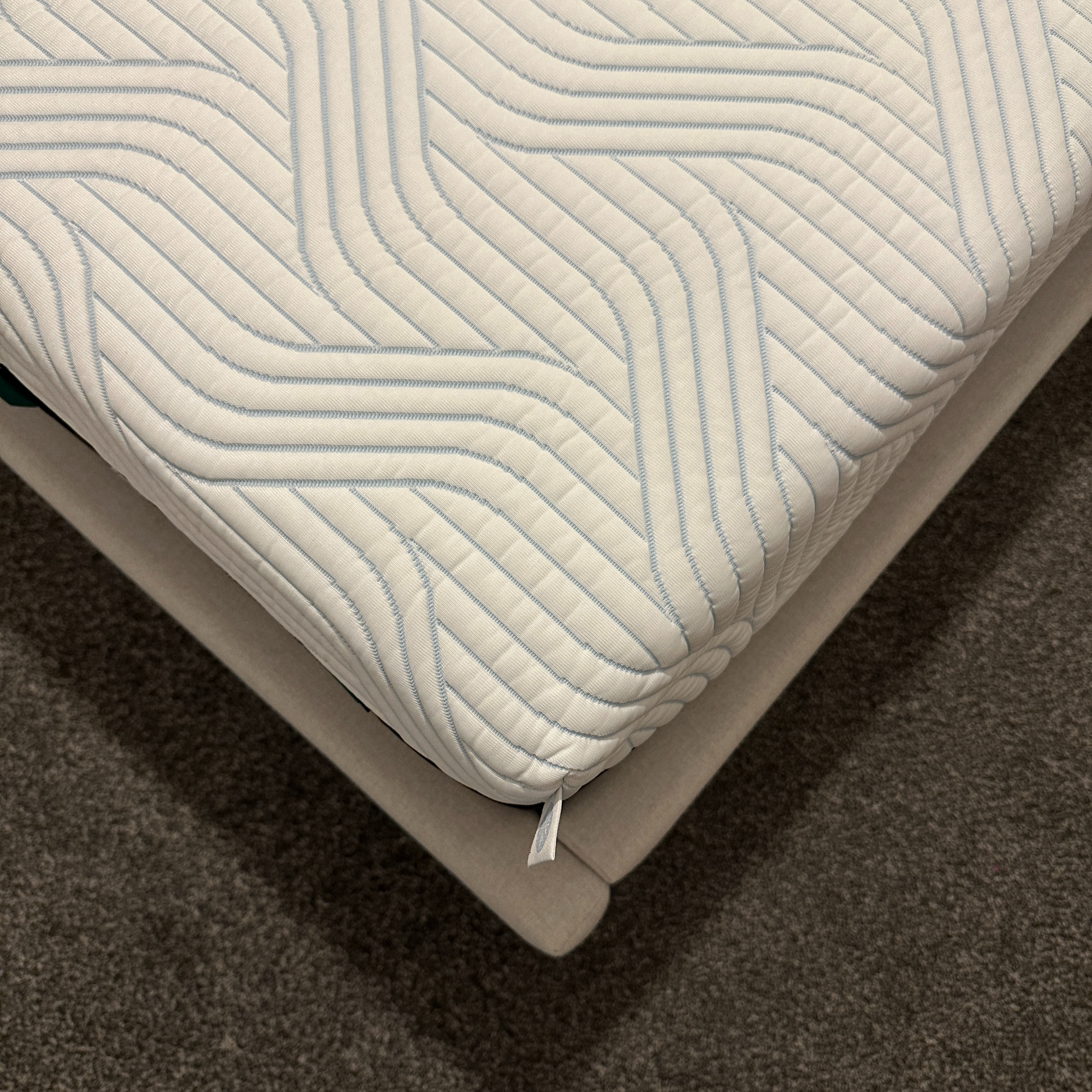
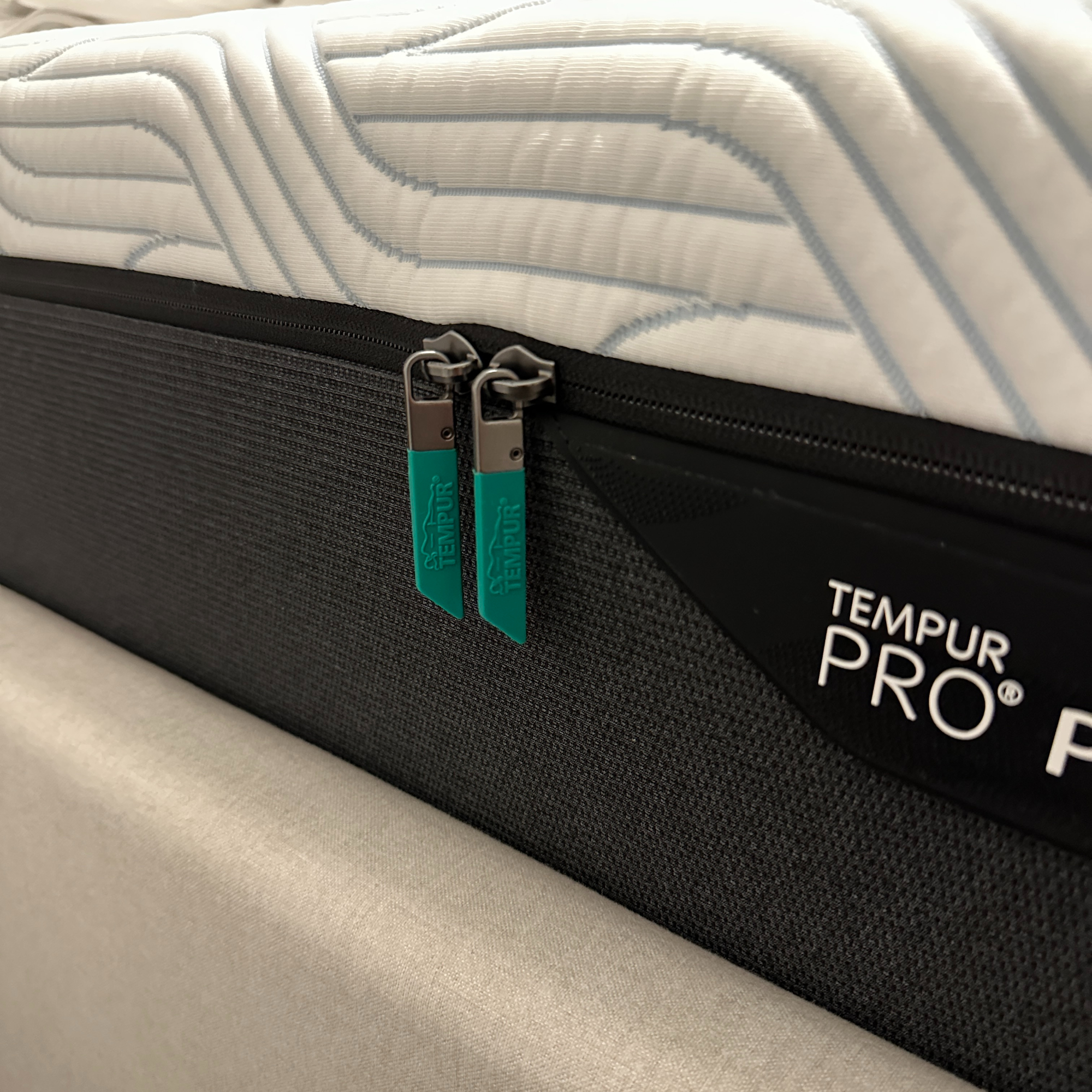
Specifications
Reasons to buy
Reasons to avoid
It may be an investment, but we think the Tempur Pro Plus SmartCool mattress is the best memory foam mattress overall.
That's because, unlike most all-foam mattresses which take a one-size-fits-all approach to tension, this mattress comes in four tension options – soft, medium, medium-firm, and firm – making it much easier to find the right tension option for you, no matter your body weight.
Our tester found this mattress elicited a sigh of contentment from every tester who lay down on its surface, with the memory foam rapidly cocooning around the body to cushion all joints and support every inch of the spine. It was a particular favourite amongst our side sleeping testers because the deep memory foam allowed enough space for their shoulder and hip to sink in, but in the firmer options, our back sleeping testers also found they benefited from enough support. The mattress also scored brilliantly for motion isolation, eliminating virtually any motion transfer even when we got a co-tester to toss and turn close by.
The SmartCool also lived up to its name and delivered in the breathability stakes. Not once did our testers overheat whilst sleeping on this mattress that employs Tempur's latest temperature-regulating technology.
However, our tester did encounter some downsides, namely that the edge support was lacking, so if you need a firm surface to push up from in the mornings or you tend to sleep close to the edge of the mattress, this could be a problem. If you're an active sleeper who changes position a lot at night, this can also be a little tricky, as the memory foam cradles you so fully that it can be difficult to climb out of the depression that's formed around you.
Plus, that thick layer of memory foam makes this mattress very heavy, so it's tough work to rotate, especially as Tempur hasn't fitted it with any side handles. Our tester Jullia found it a struggle even to lift the corner of the mattress to change her fitted sheet. The mattress' flat (rather than rolled or boxed) delivery may also be unsuitable for homes with awkward access, although the 'white-glove' delivery options are first-rate, as is the 100-night manufacturer sleep trial.
Would we forgive these niggles for the comfort it offers? The majority of our testers voted, yes.
Our full Tempur Pro Plus SmartCool mattress review has more detail.
Best mattress for side sleepers
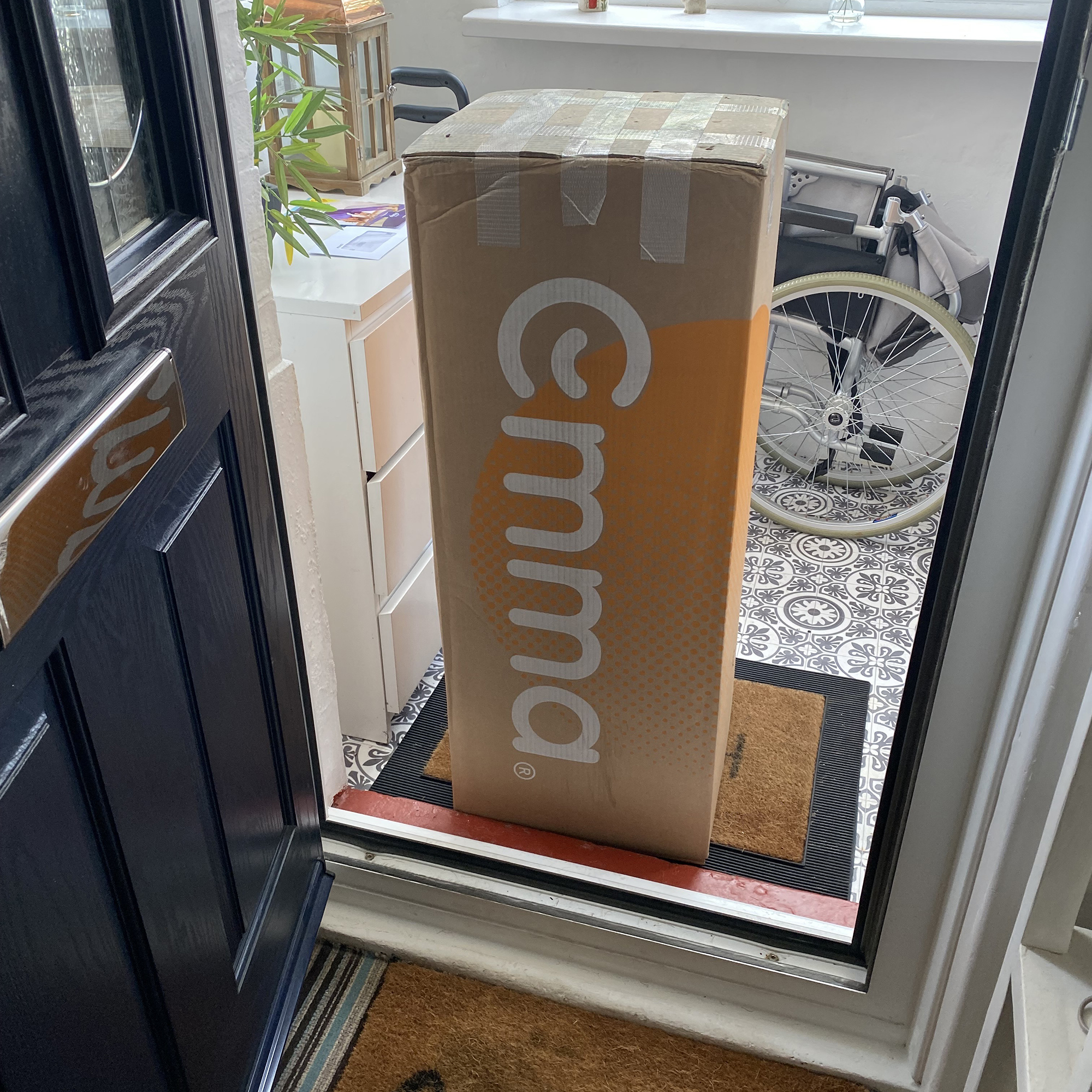

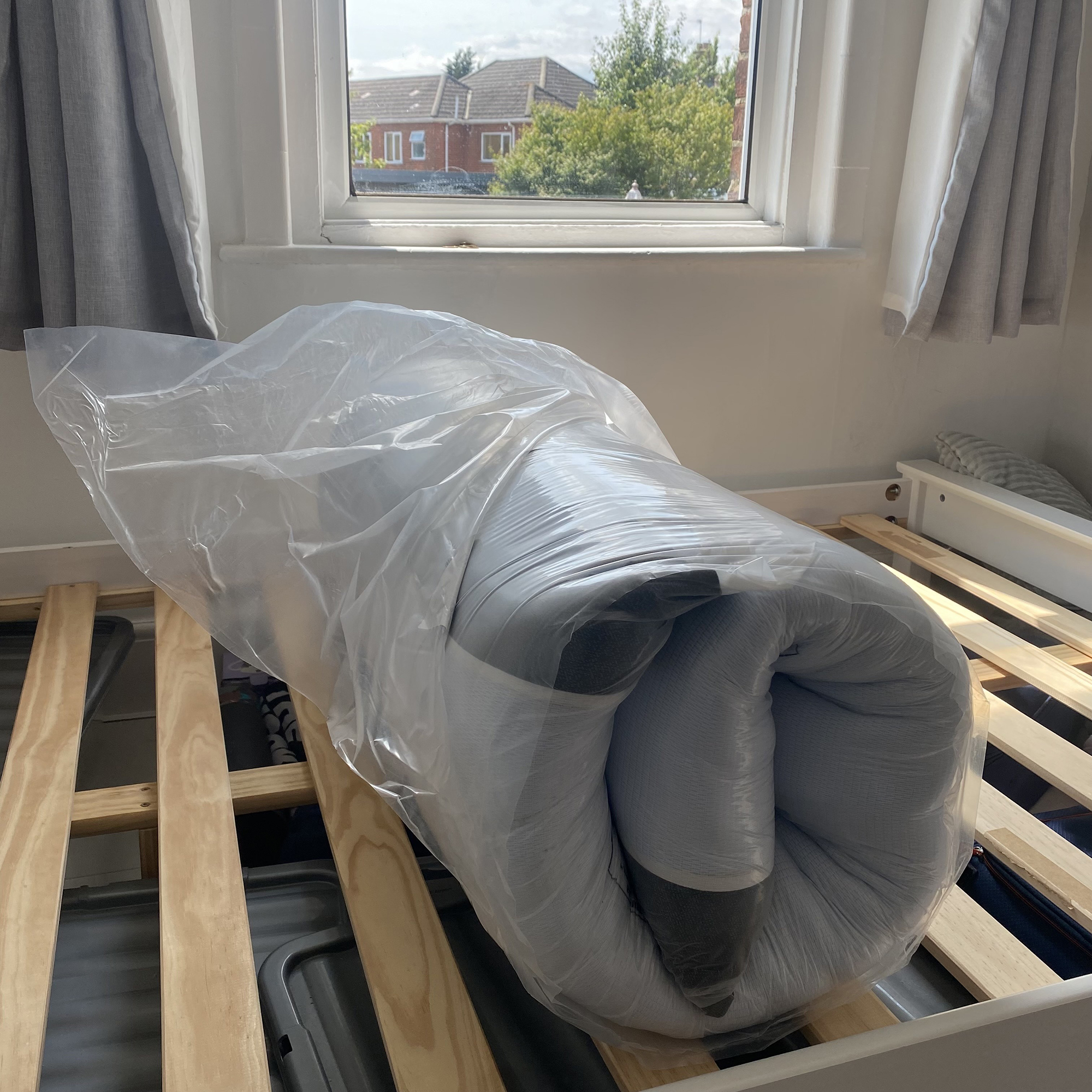
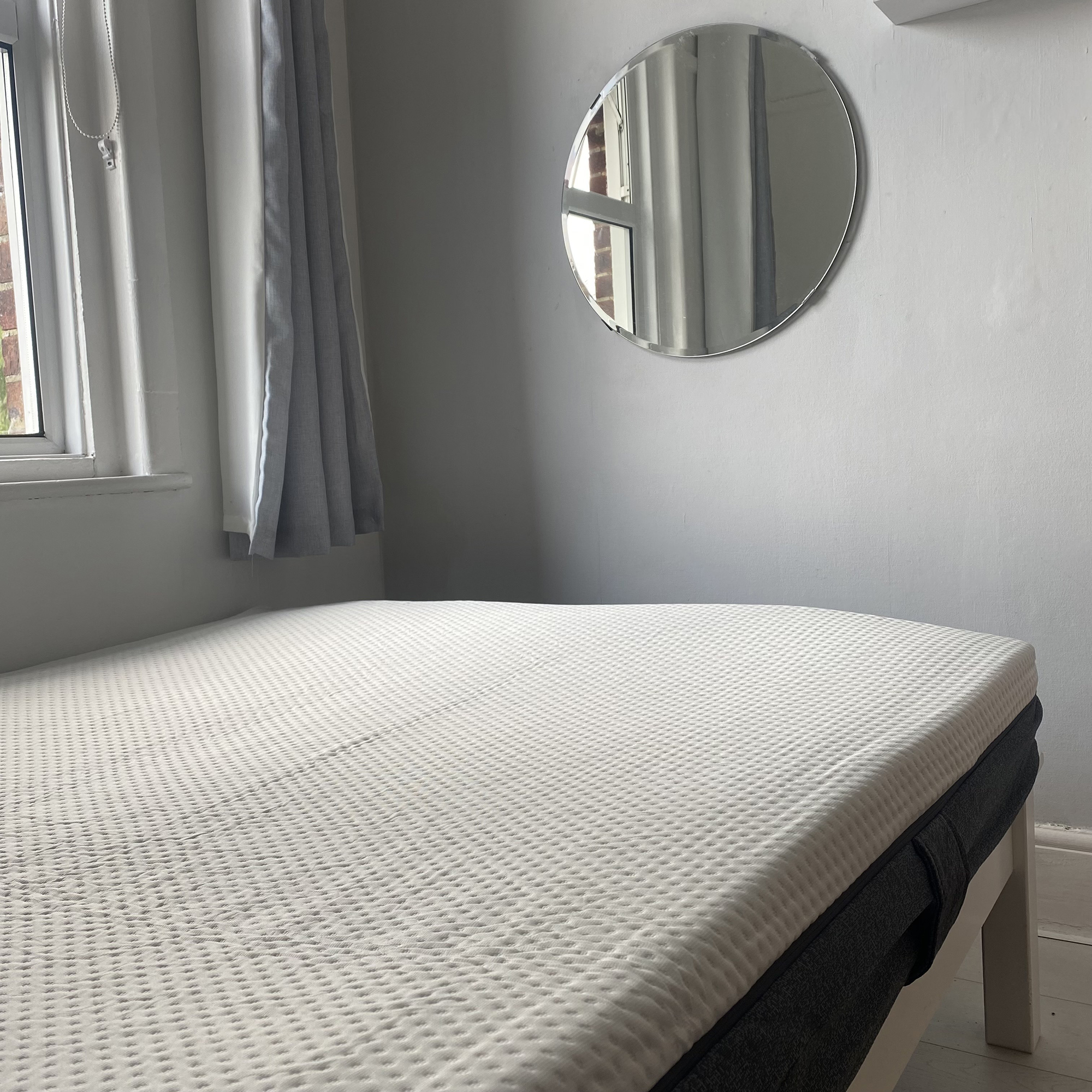
Specifications
Reasons to buy
Reasons to avoid
Research shows that the majority of us sleep on our sides. As a result, there are many mattresses designed with side sleepers in mind, such as the Simba Hybrid Original and Brook + Wilde Ultima mattress higher up this list.
However, we found the Emma Luxe Cooling mattress to be the best mattress for side sleepers. It is best suited to lightweight side sleepers, the Luxe Cooling's softer surface tension allows shoulders and hips to sink down a little deeper for good spinal alignment. Heavier side sleepers will sink into any mattress a little deeper, so a slightly firmer surface like the Simba Hybrid Original might be a better choice comfort-wise.
Our reviewers also found the Luxe Cooling does exactly what its name promises, with its extra graphite-infused foam layer offering a far more breathable sleep surface than the brand's Emma Original mattress, making it on a par with the Simba and Brook +Wilde options in this regard. It also offers decent motion isolation, responsiveness and edge support, plus a 200-night sleep trial.
The downside is that although the Luxe Cooling is delivered vacuum-packed and rolled into a box, Emma only offers doorstep delivery, which won't be suitable for everyone. Plus, the brand is less vocal about any efforts to lower its environmental impact than many of its competitors, which means it lost a few marks in our scoring criteria.
Our full Emma Luxe Cooling mattress review has more detail.
Best pocket sprung mattress
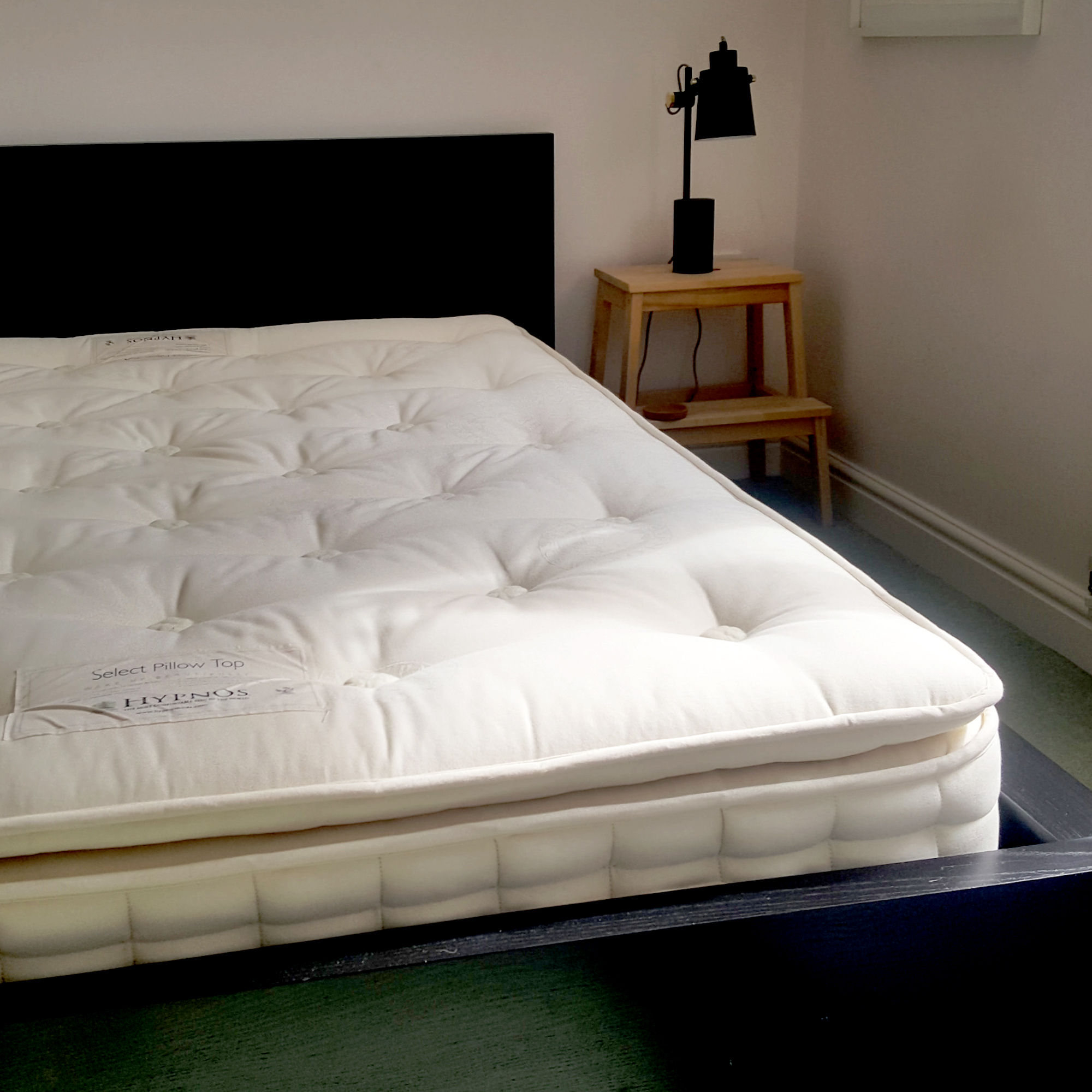
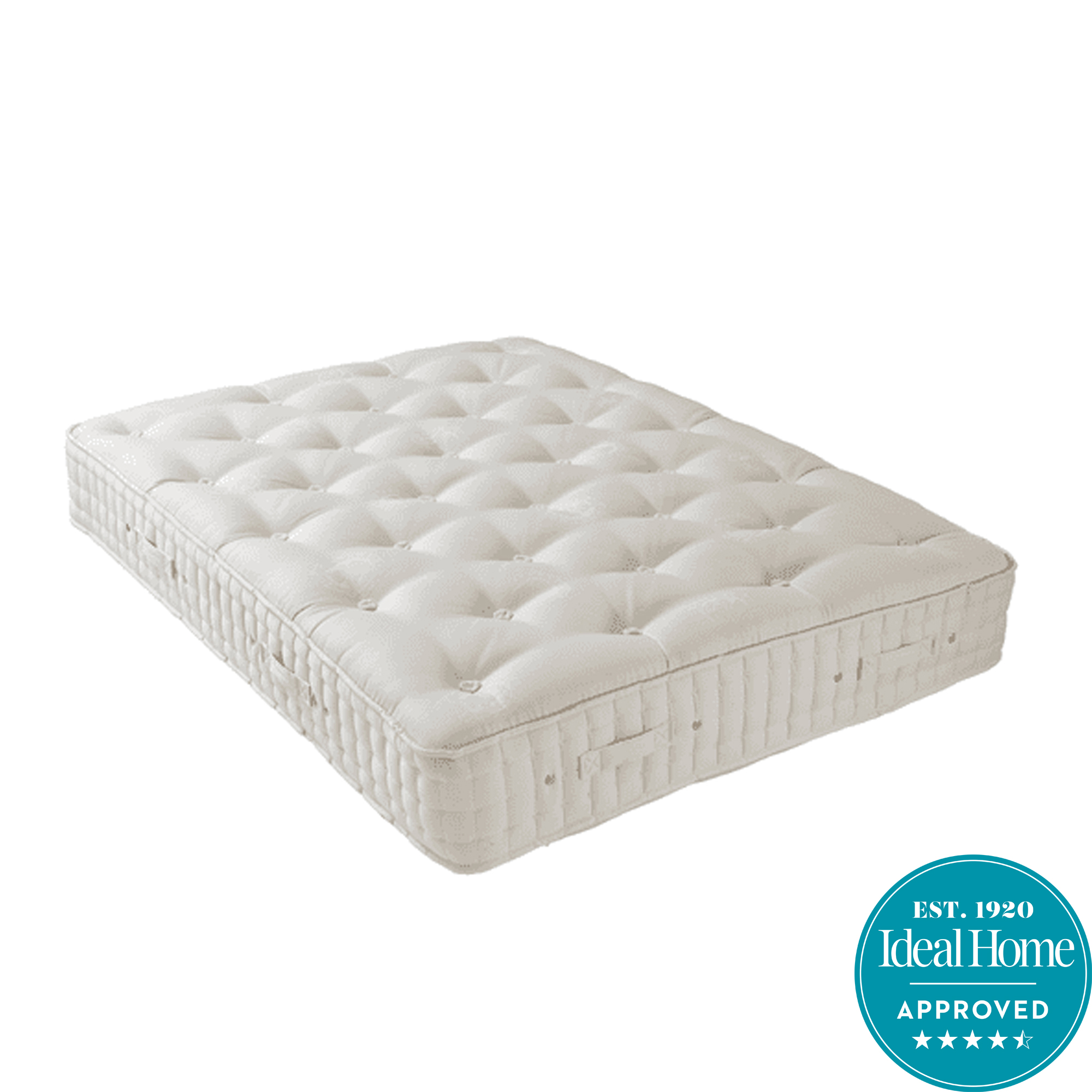
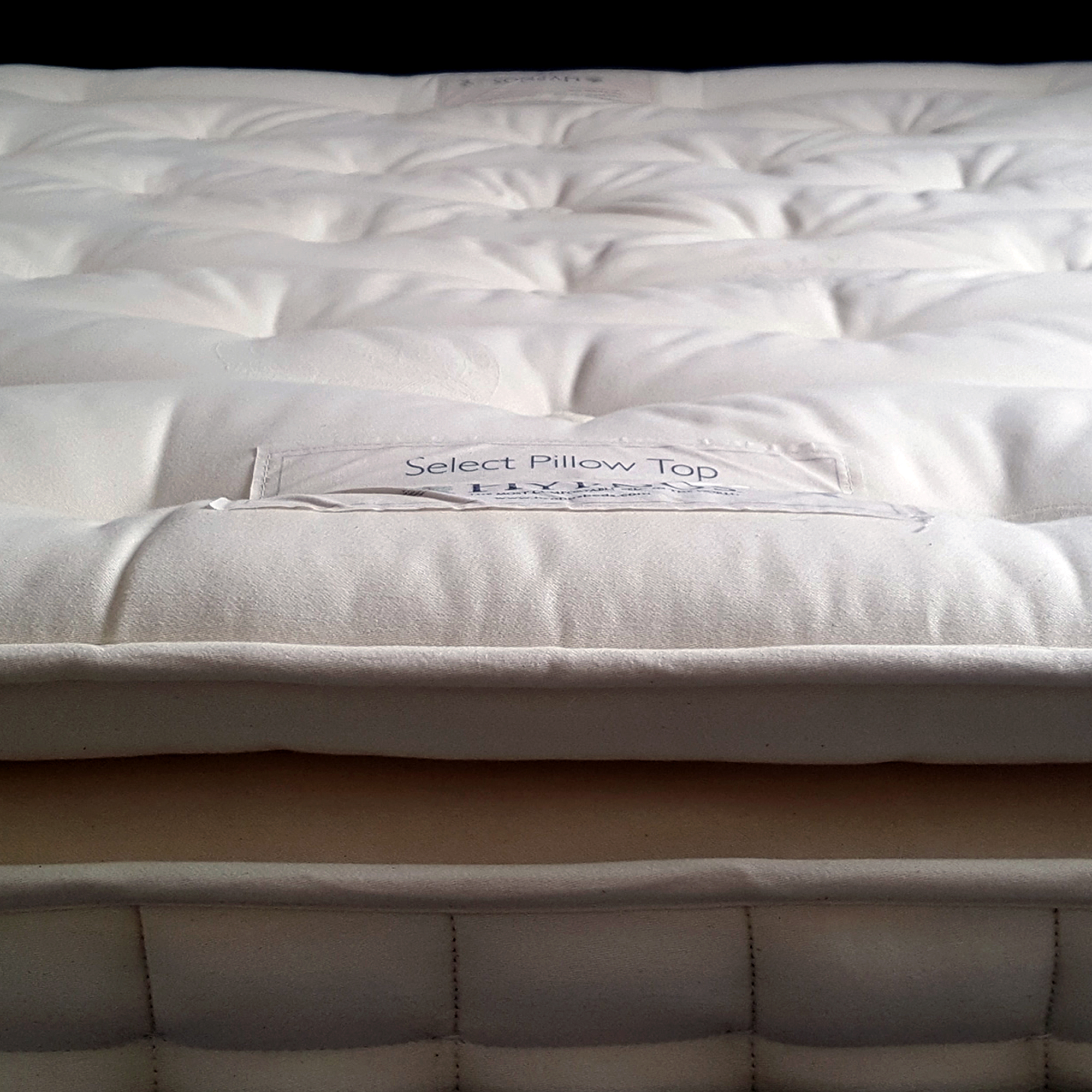

Specifications
Reasons to buy
Reasons to avoid
Thanks to a pillow top comfort layer that's packed with breathable natural fibres, the Hypnos Select Pillow Top is the best pocket sprung mattress we've tested.
The sewn-on pillow top layer means this pocket spring mattress feels far more luxurious than most pocket sprung designs, and whilst that pillowed comfort layer doesn't offer quite the same sink-in cushioning as memory foam, many of our testers preferred the less enveloping feel, finding it made for a more responsive sleep surface that was easier to change position on.
Because this mattress doesn't feature foam or memory foam, it's also extremely highly rated by our hot sleeping testers. Our tester usually most prone to waking up hot and sticky on a synthetic mattress found it offered fantastic breathability, meaning she didn't overheat, even during summer heatwaves.
The Pillow Top Select also scores highly for edge support, only losing a few marks in our motion isolation tests. When our tester's partner tossed and turned there was a little more motion transfer through the matttress than they encountered whilst sleeping on the all-foam or hybrid mattresses in our round up. As a mattress that's made from predominantly natural, renewable, and biodegradable materials – that pillow top layer is packed with wool, kapok, and cotton – this is also one of the most environmentally friendly mattresses we've tested.
It may not be the most affordable option available, but in our tests this Hypnos mattress proved itself worthy of the investment.
Our full Hypnos Pillow Top mattress review has more detail.
Best hybrid mattress
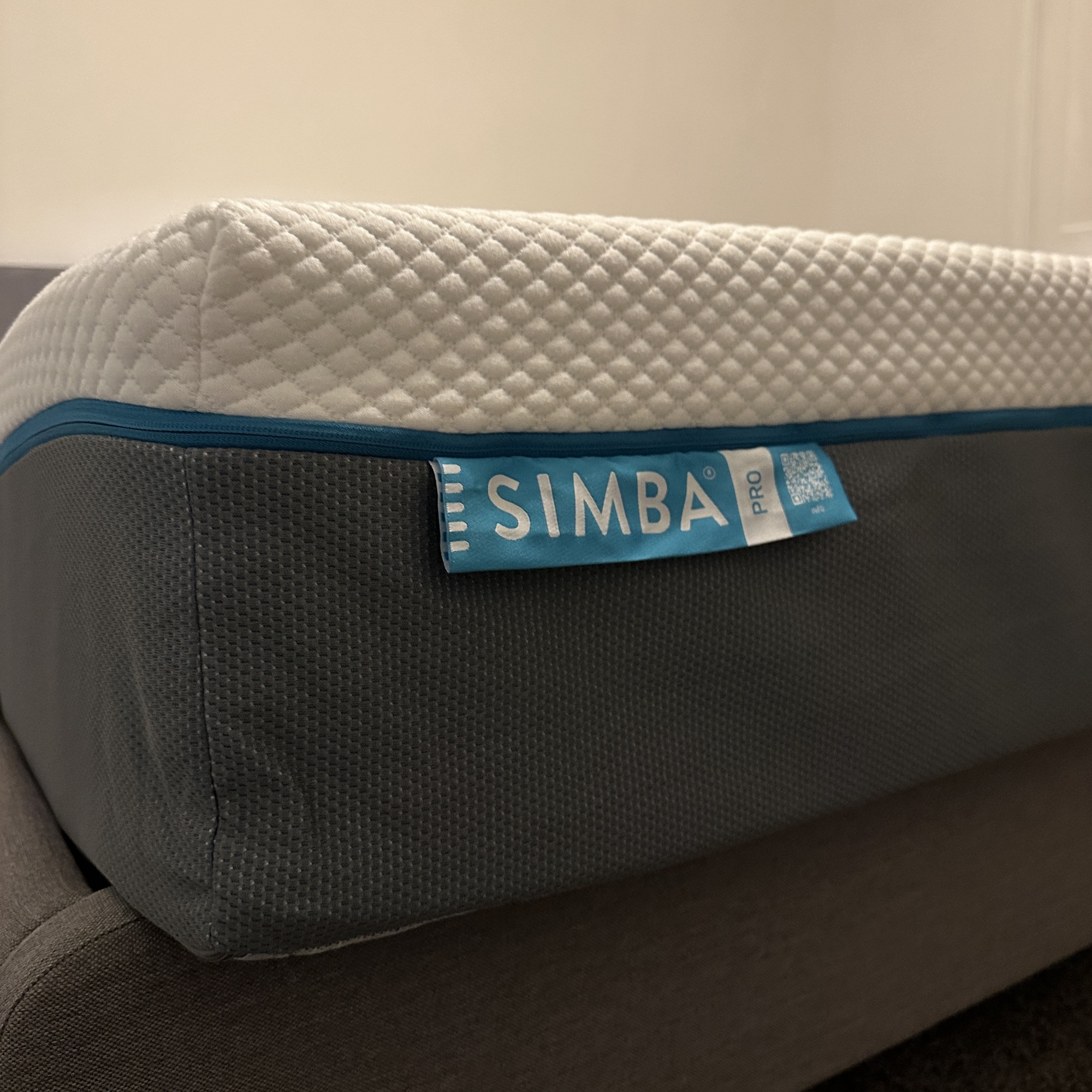
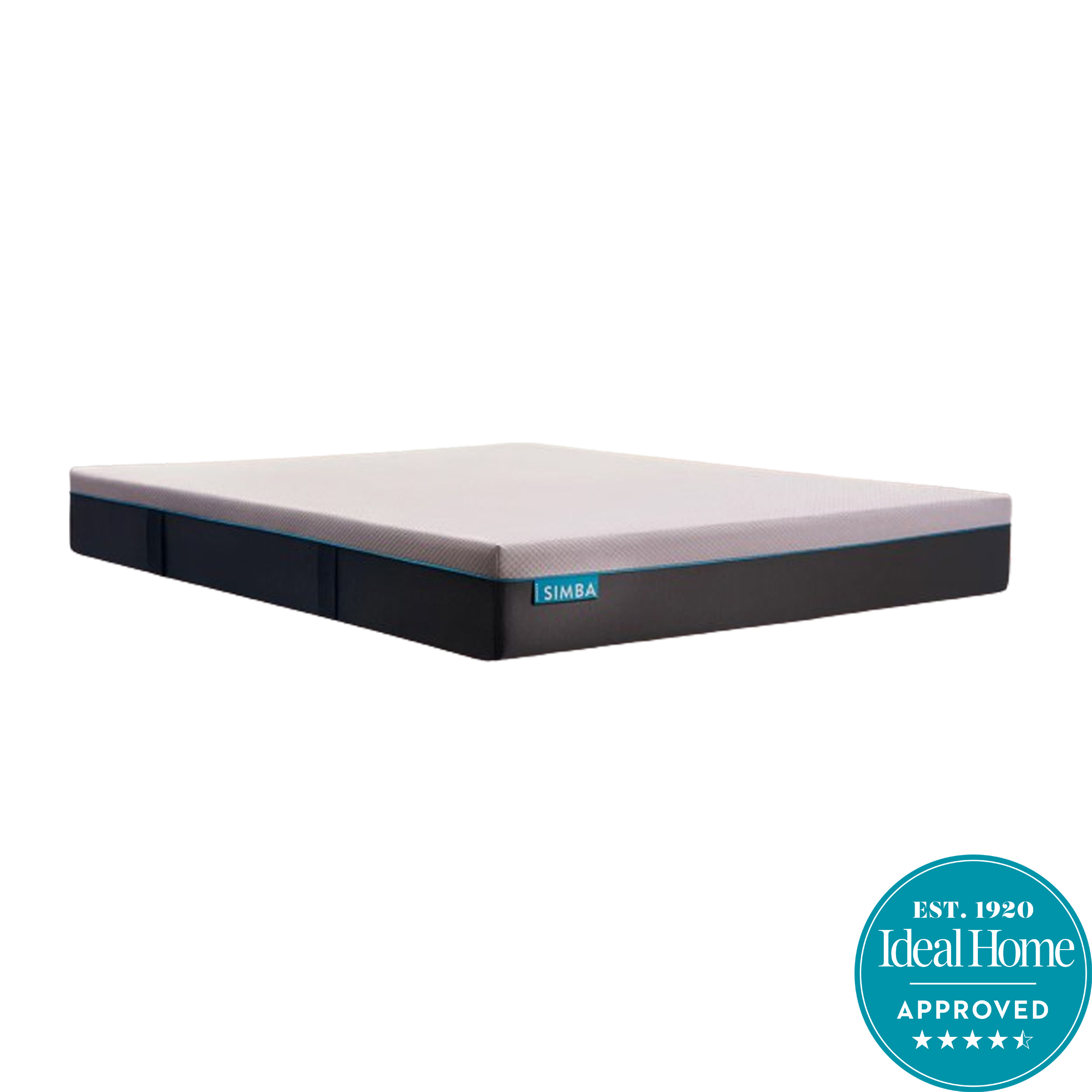
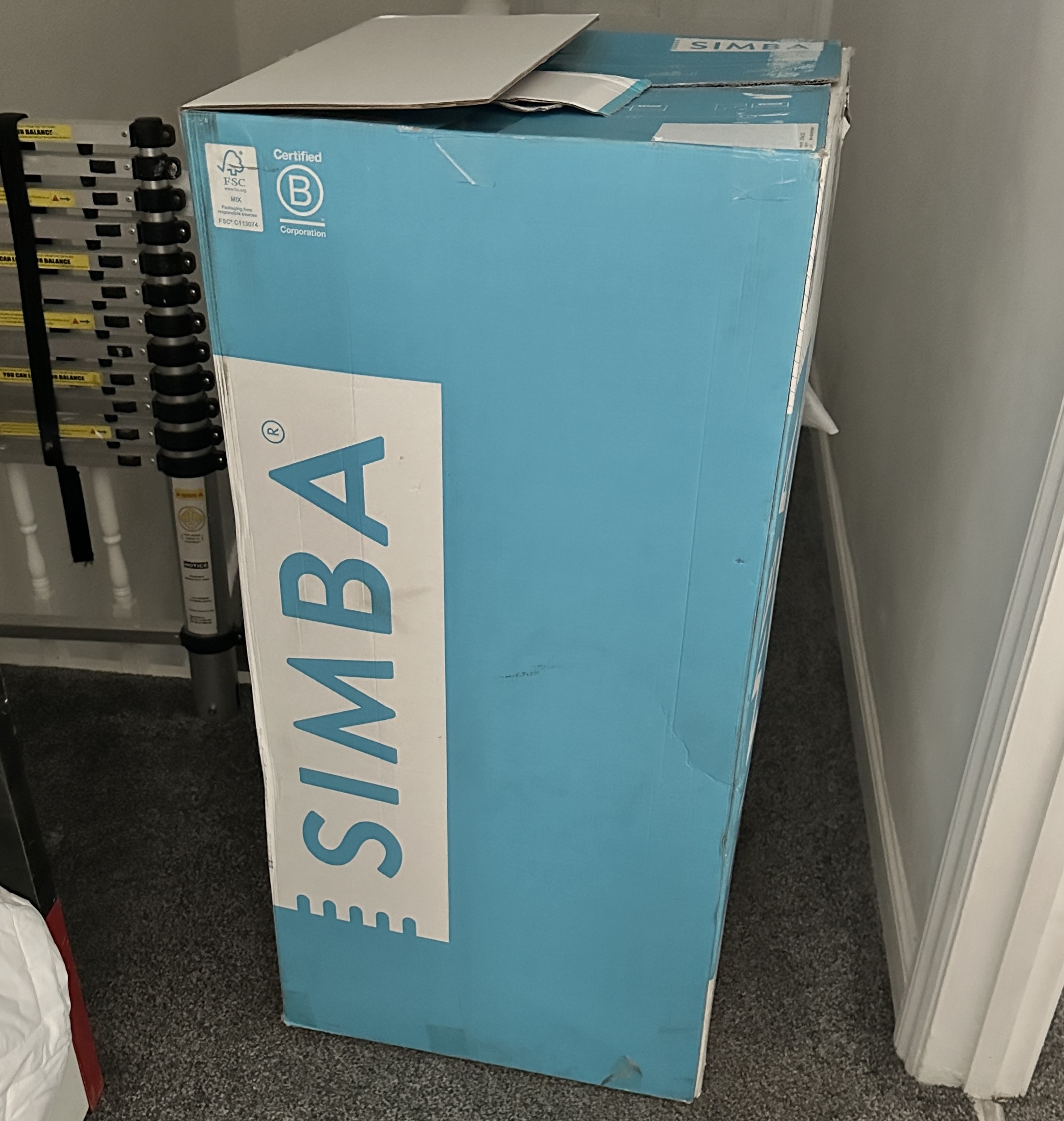
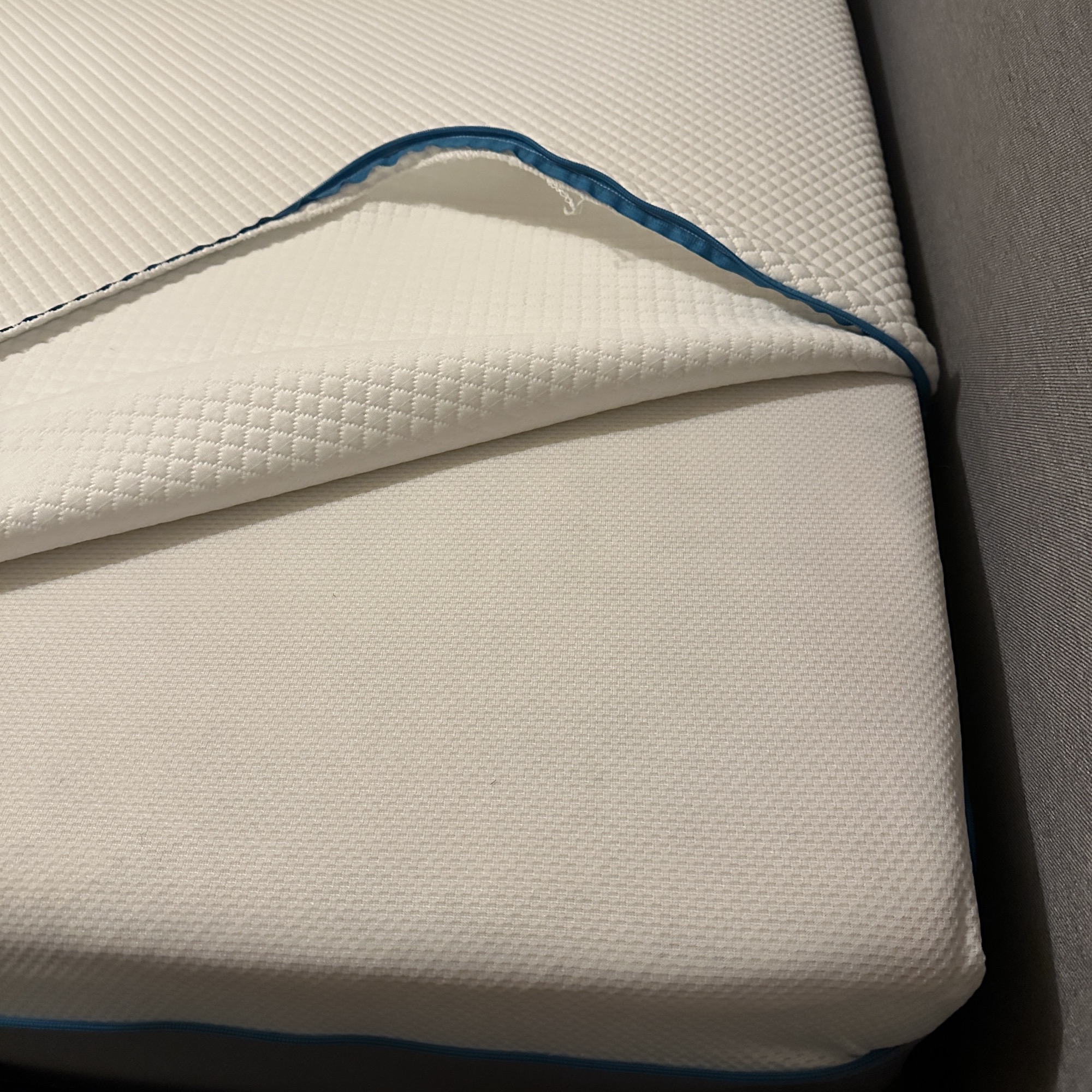
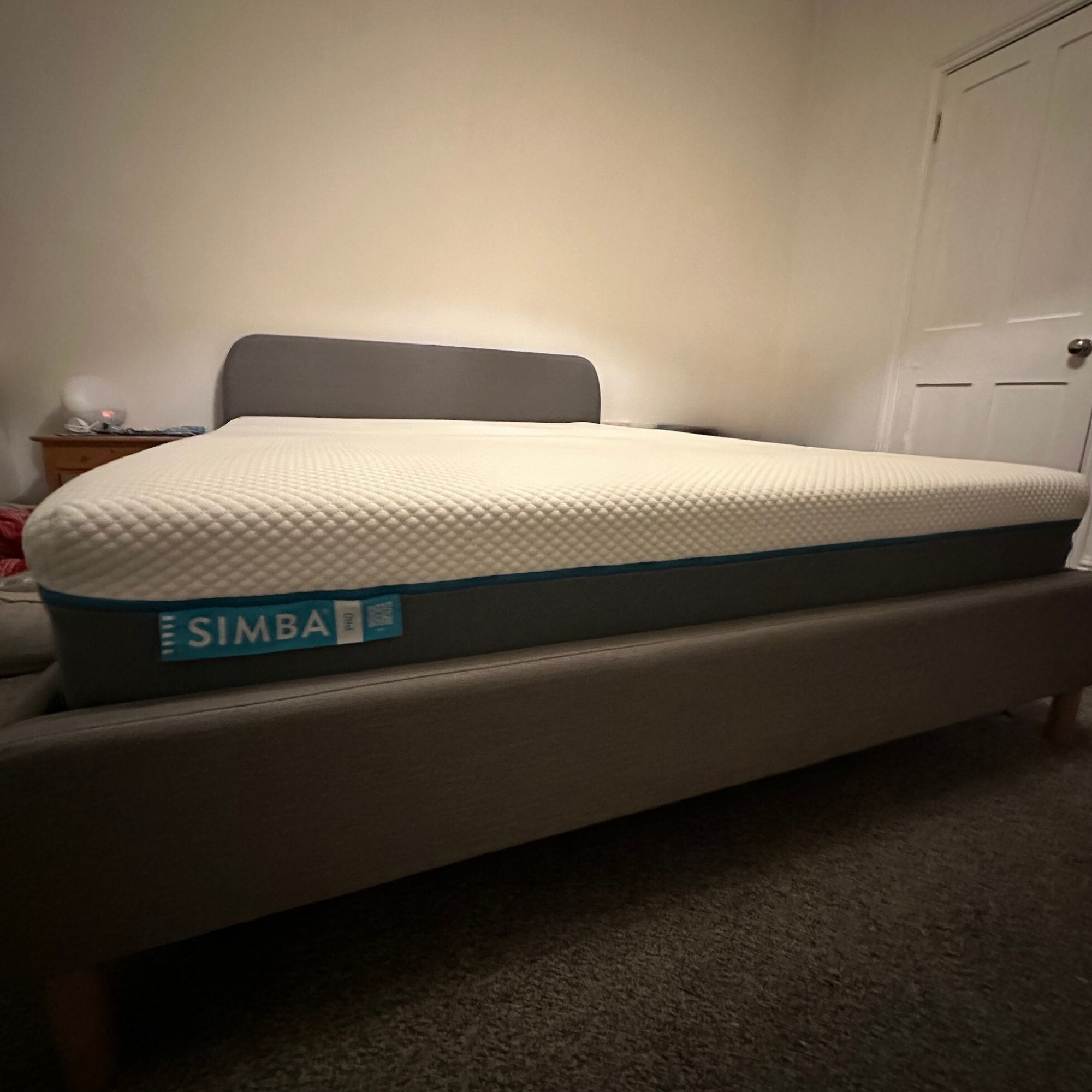
Specifications
Reasons to buy
There are a lot of hybrid mattresses on the market, so crowning the best-in-class can be a tricky business. However, our reviewer loved the Simba Hybrid Pro mattress. Comfort-wise she found this mattress gave her all the right support in all the right places, easing the back and neck pain she had been suffering from after sleeping on an all-foam mattress without any spring support. And, as a hot sleeper, it also kept her cool at night.
That improved temperature regulation is the main reason why you might consider investing some more cash and upgrading from the Simba Hybrid Original mattress (which still takes the top spot in our round-up thanks to its lower price point) to the Simba Hybrid Pro. If you don't have a problem with sleeping warm, then the lower-priced Hybrid Original could still be the best hybrid mattress for you.
The Hybrid Pro also offers slightly better edge support than many of its competitors (important if you tend to gravitate towards sleeping on the edge of the mattress, or if sleeping space is at a premium), along with decent responsiveness and motion isolation.
And, as with the Simba Hybrid Original, this mattress benefits from Simba's market-leading customer care, with several delivery options including a 'white glove' service, a 200 night sleep trial, and the option to have your old mattress taken away and recycled when your new one is delivered. Plus, alongside naturalmat, Simba is one of the few UK mattress manufacturers to attain B Corp status, with its Environmental Impact Report showing the brand's ongoing commitment to more sustainable manufacture.
Our Simba Hybrid Pro mattress review has the full lowdown.
Best firm mattress
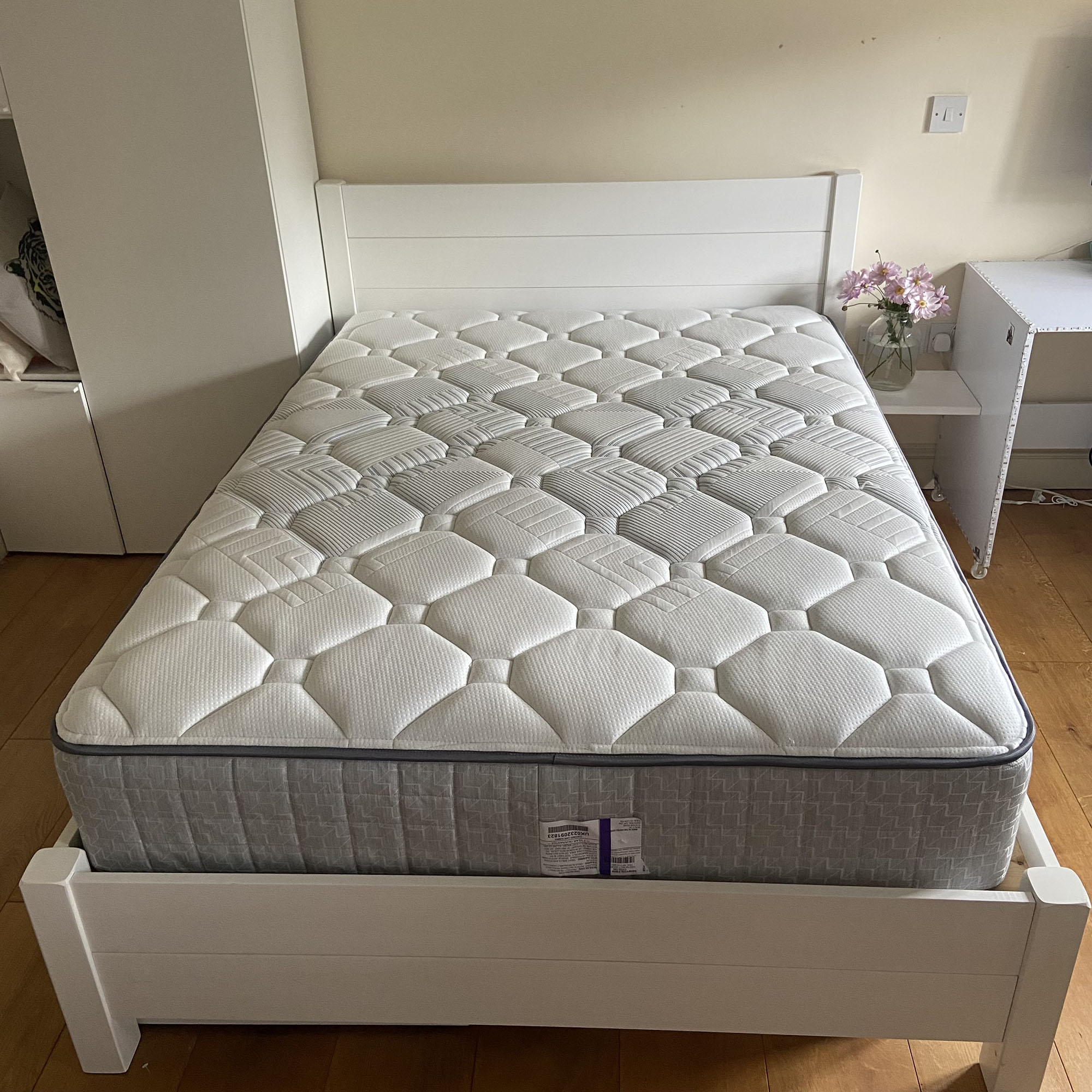
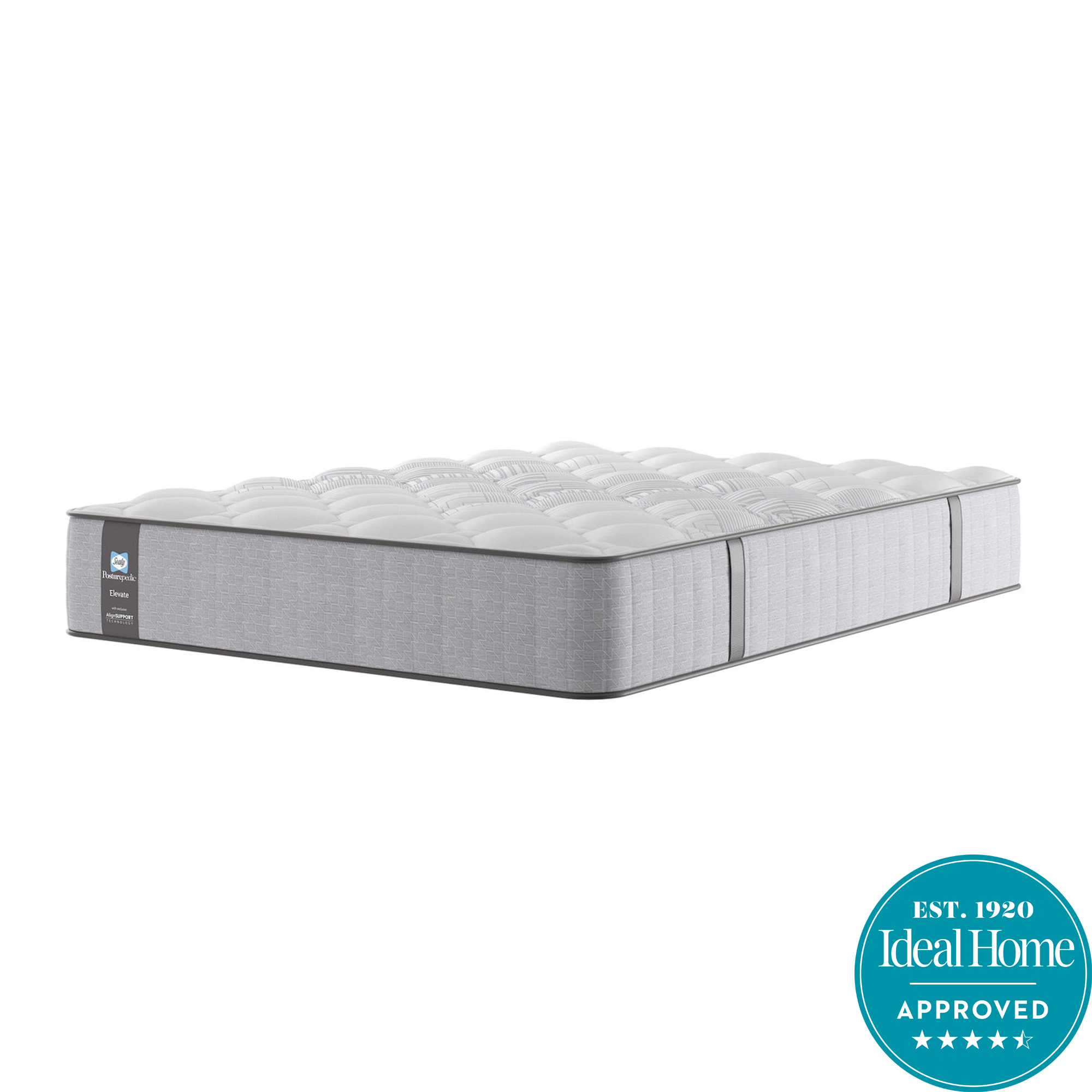
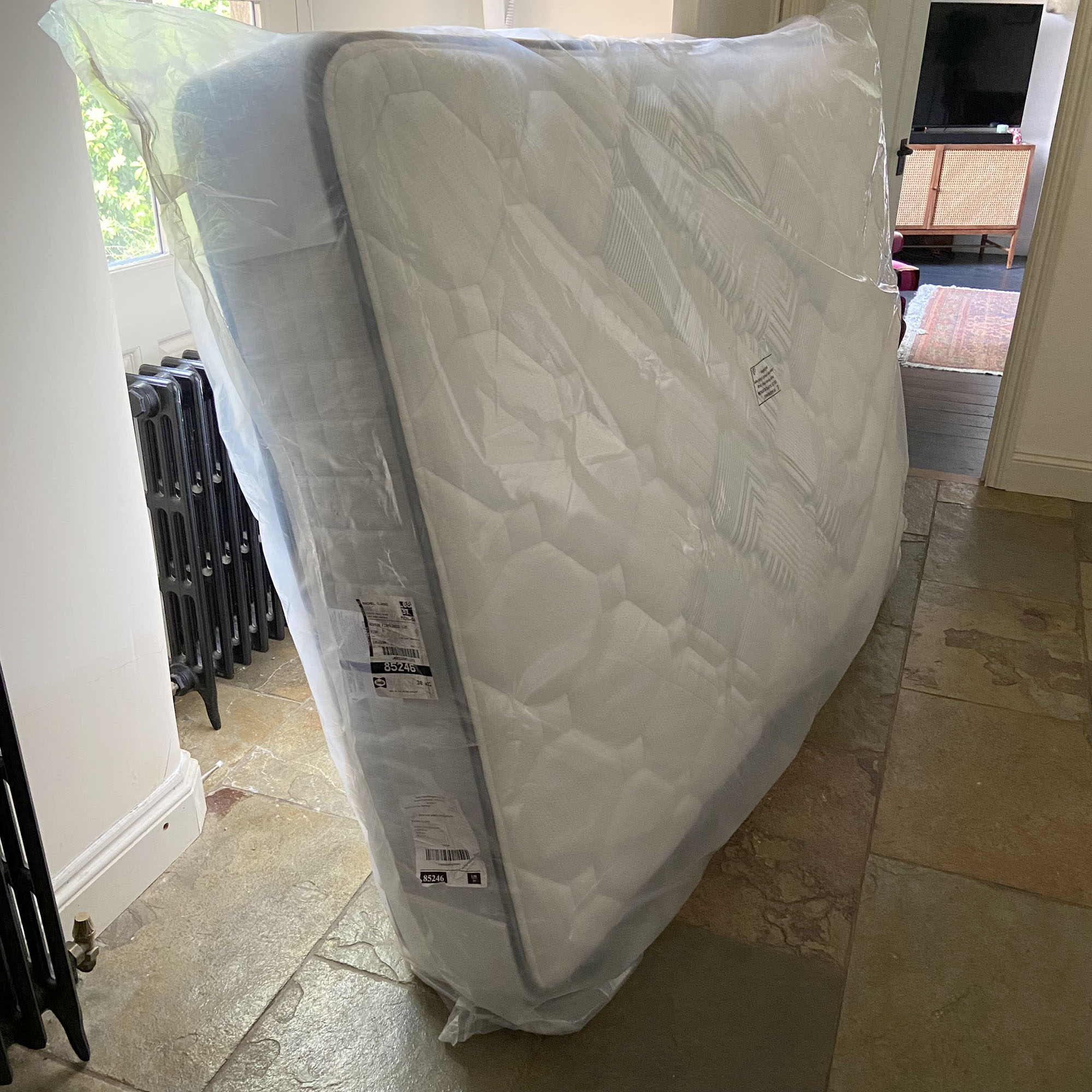
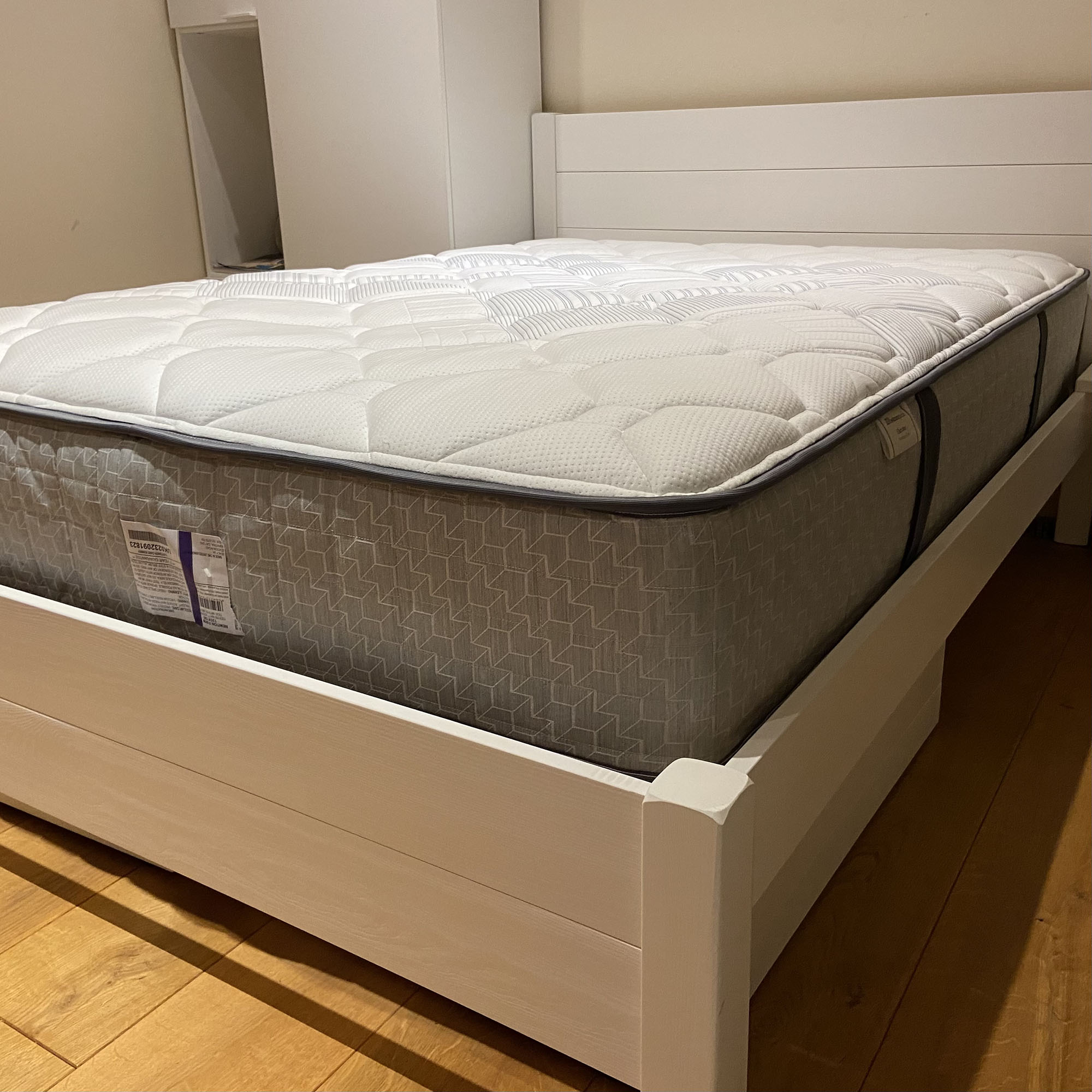
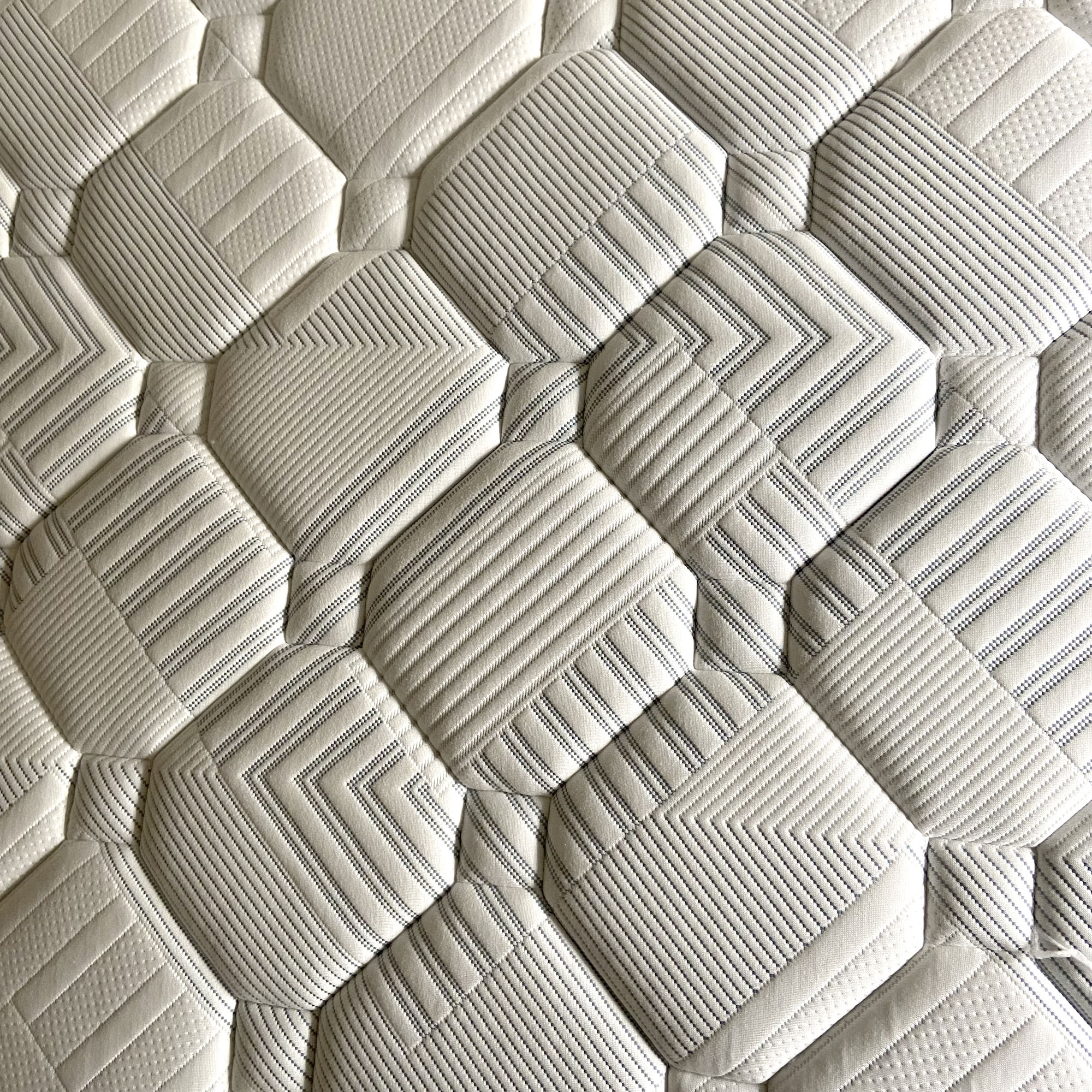
Specifications
Reasons to buy
Reasons to avoid
The Sealy Newton Posturepedic mattress is our top recommendation for the best firm mattress you can buy. This hybrid mattress mixes a latex comfort layer with open coil support to create a sleep surface with a higher tension than most.
Initially it took our tester a few days to get used to the firmer feel, especially compared to the memory foam mattress she'd previously been sleeping on, but she was soon sold, saying that whilst sleeping on the Newton Posturepedic she didn’t wake up with lower backache like she previously had been. That firmness makes it a great choice for front and back sleepers, although lighter weight side sleepers may just find it a little too firm.
In our tests, this mattress also offered excellent edge support and our reviewers found the latex comfort layer to offer better temperature regulation than memory foam. They also found the latex was a little more responsive when changing postition, with less of the 'lag' that can sometimes come as memory foam adapts and readapts to your contours in a new posture.
The downsides were that our reviewer noted that motion isolation could have been a little better, which is perhaps due to that continuous coil spring unit. However, she said this wasn't enough to negatively impact hers or her husband's sleep. In addition, this mattress is one of the few in our round-up not to offer a sleep trial, although it is available to test in store in various locations. It's also worth mentioning its flat delivery, as our tester initially struggled to get it up her narrow and winding staircase.
Find the full details in our Sealy Newton Posturepedic mattress review.
Best for back sleepers

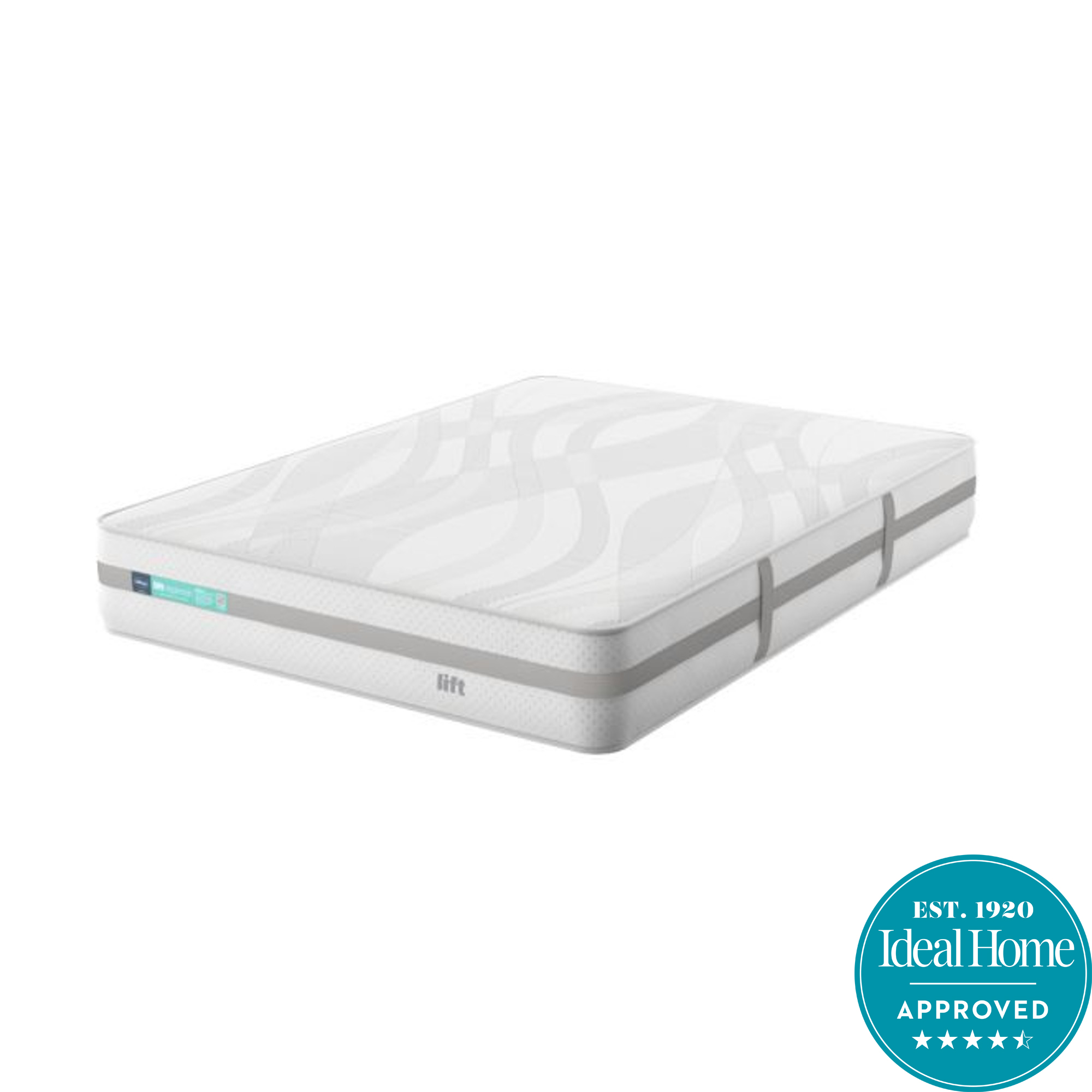
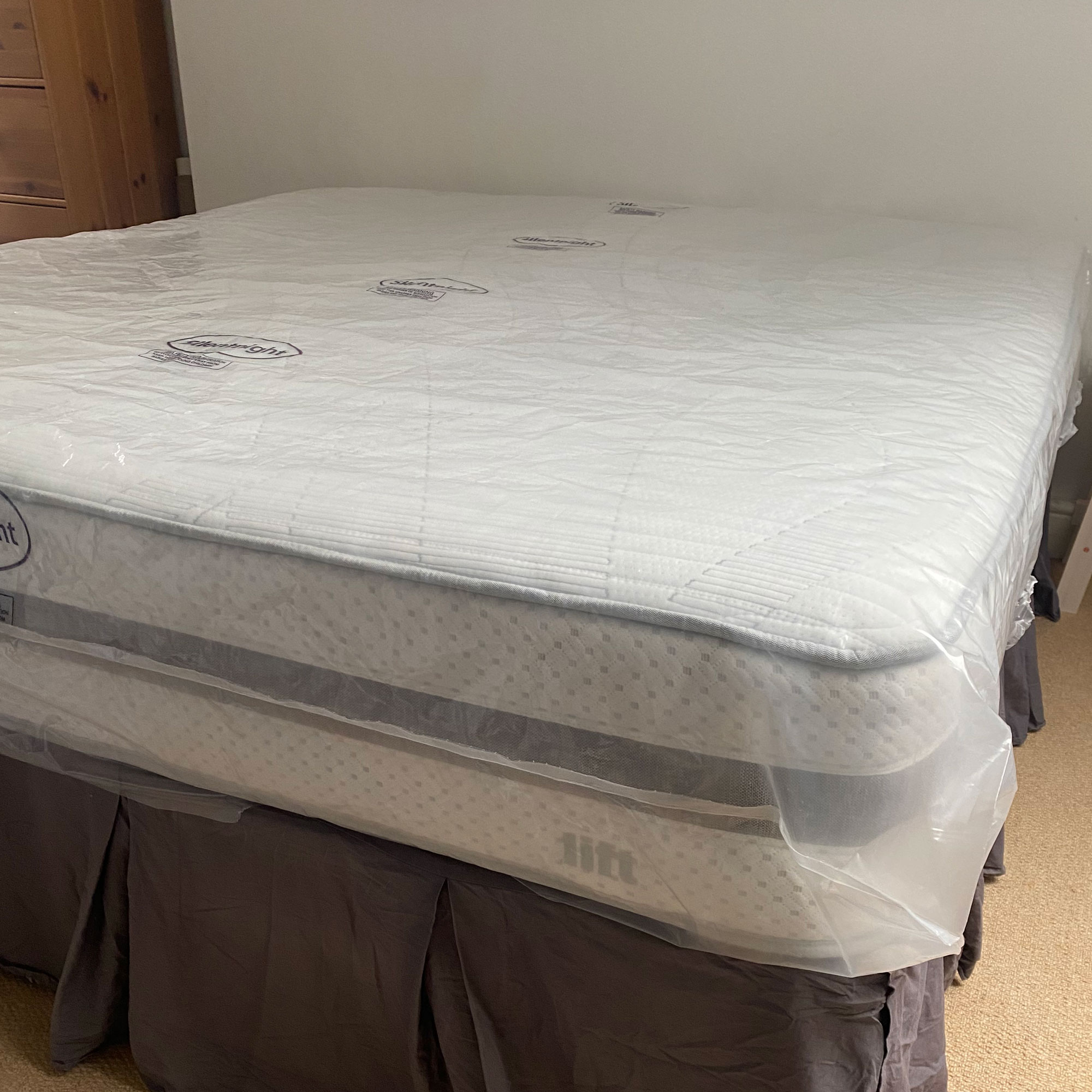
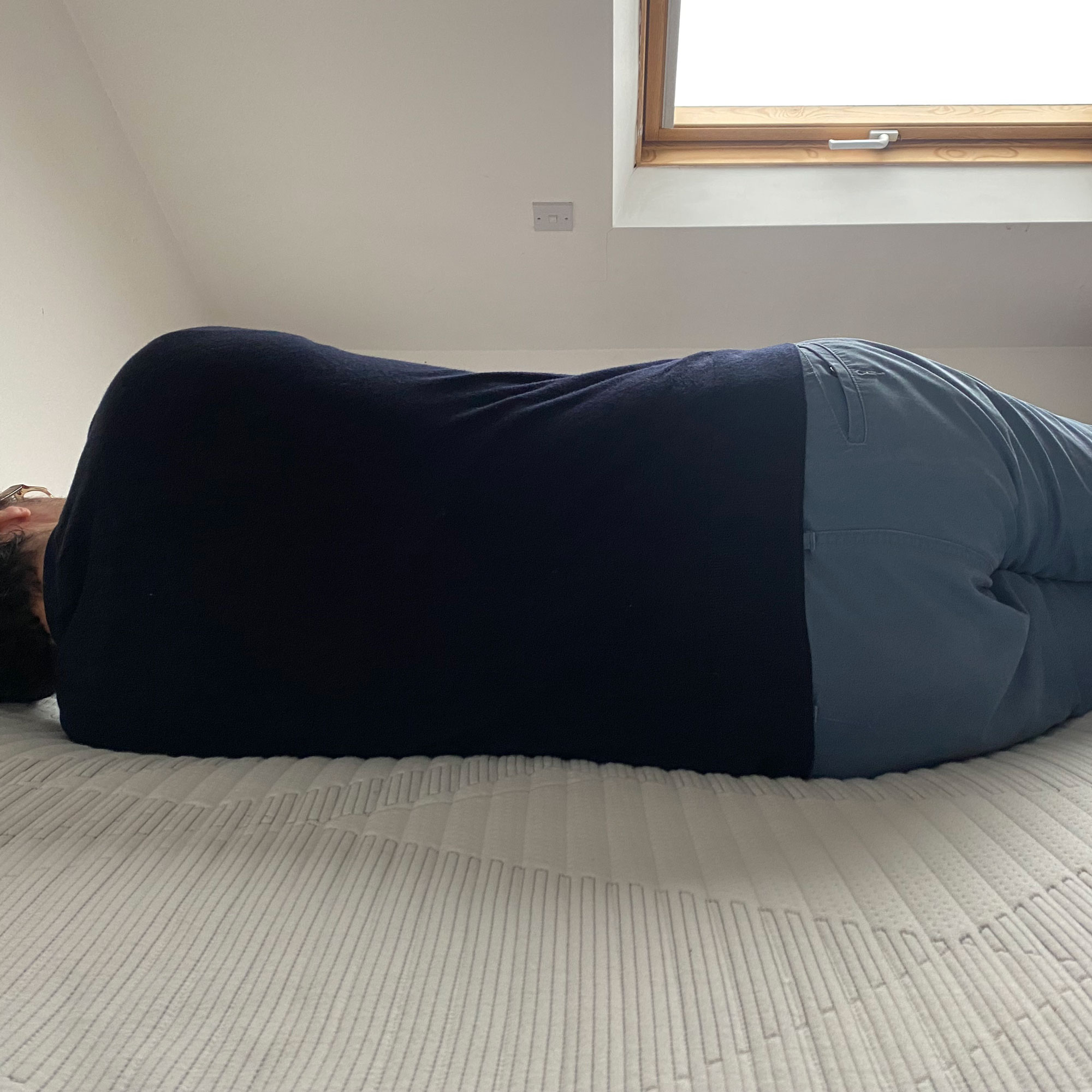
Specifications
Reasons to buy
Reasons to avoid
A latex hybrid mattress, the Silentnight Lift Replenish Hybrid 2000 mattress is available in a medium-soft or medium-firm feel, although our testers found both options felt more towards the firm end of the scale.
A more responsive alternative to memory foam, a mattress with a latex comfort layer is good choice for active sleepers who change position in the night, as unlike memory foam, latex offers more bounce, springs back into shape quicker, and doesn't cocoon your body like memory foam.
The medium-firm option in particular was a hit with our testers who preferred to sleep on their backs, offering a little give and a lot of support to keep the spine well aligned. Its firmer feel was also popular with our front sleeping testers, who need a mattress they lay 'on' rather than sinking 'into'. However, the medium-firm option was too firm for most of our side sleepers as it lacked enough cushioning to relieve pressure on the hip and shoulders when laid on their sides.
Our testers also noted that whilst the latex felt more responsive than memory foam, this comfort layer still offered great motion isolation, with the movement of their partner barely noticeable in the night. They also praised the mattress' edge support and its breathability and temperature regulation.
The only downsides were the mattress' weight, and the fact it's delivered flat which can make things more tricky for those with awkward access on delivery day.
Find out more in our Silentnight Lift Replenish Hybrid 2000 mattress review.
Best IKEA mattress
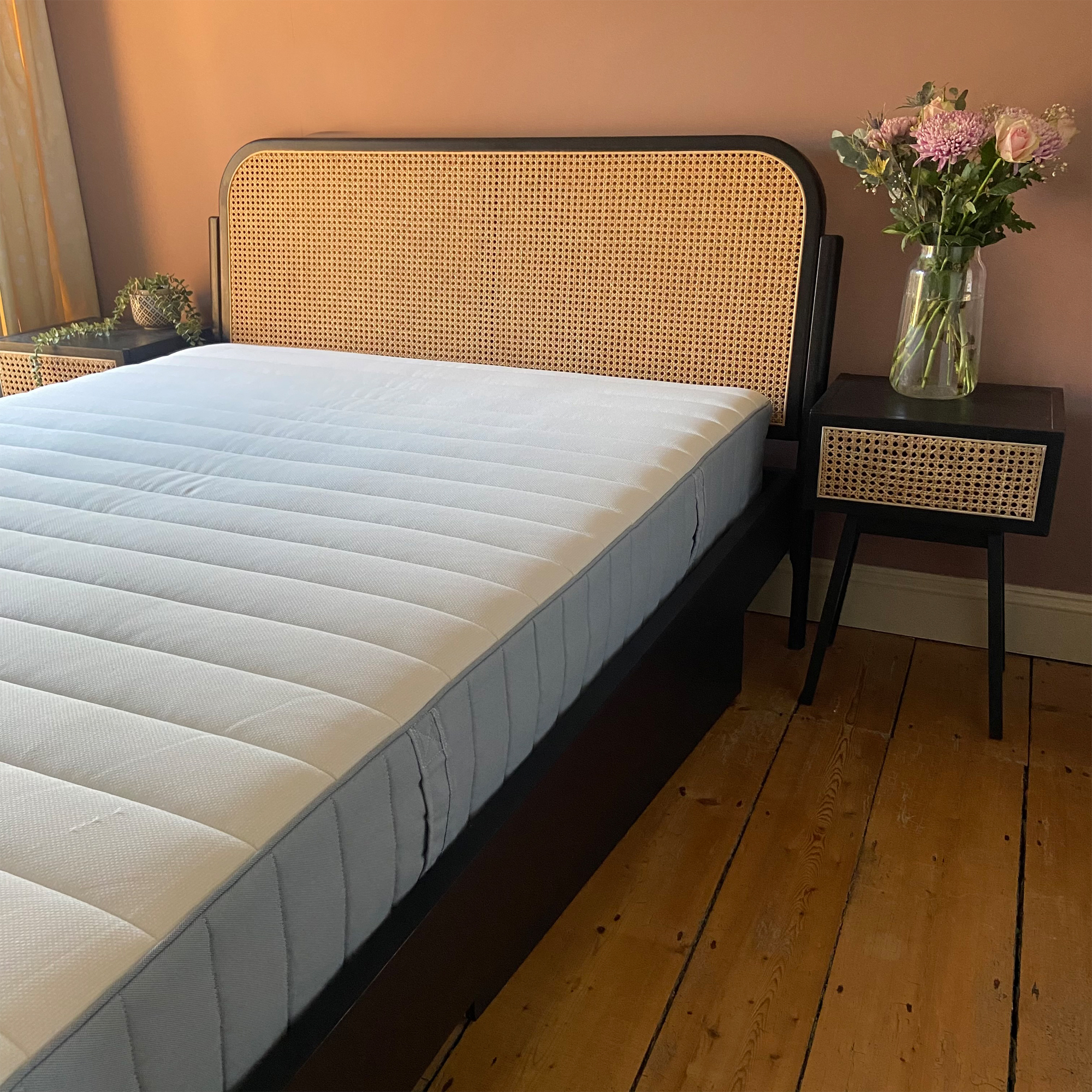
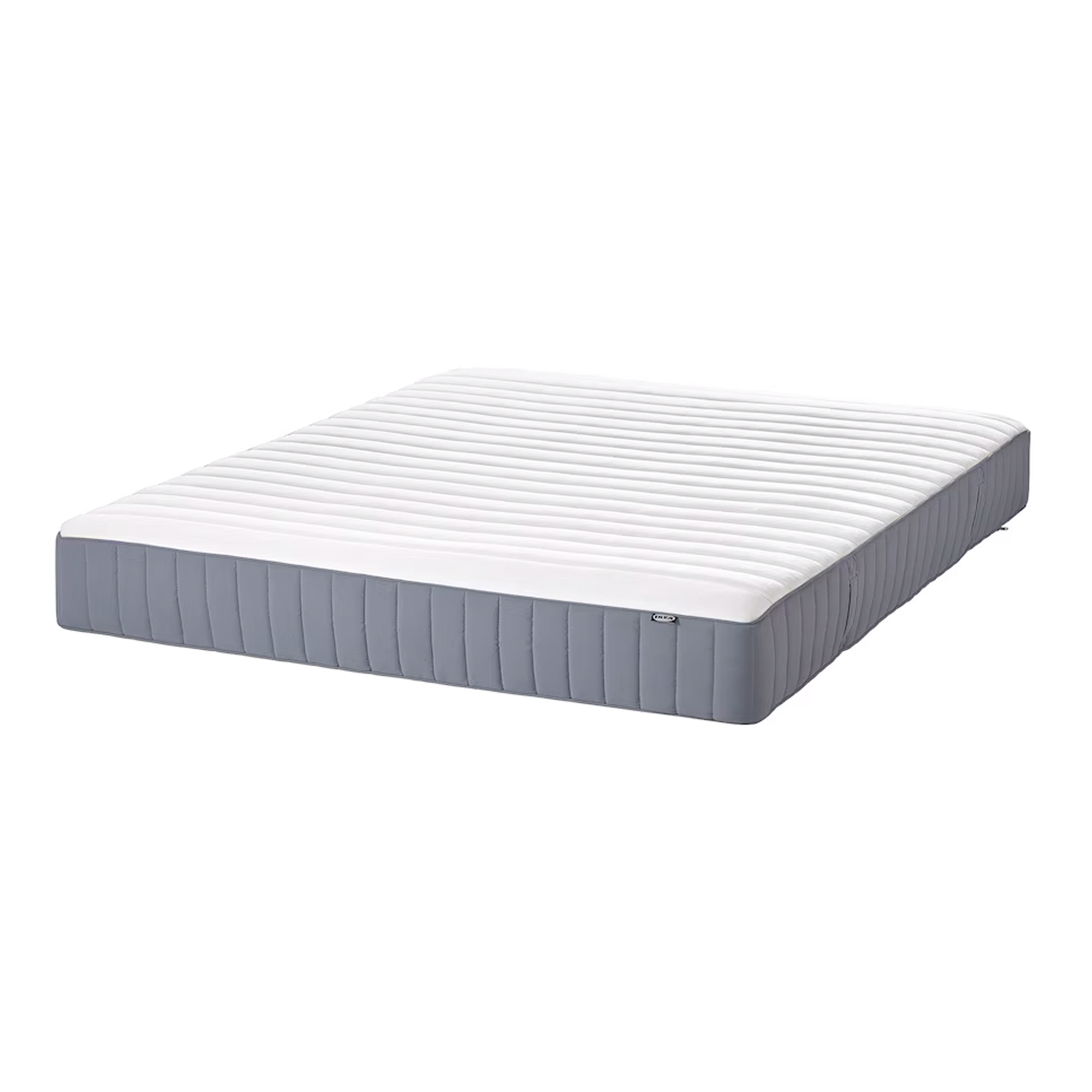
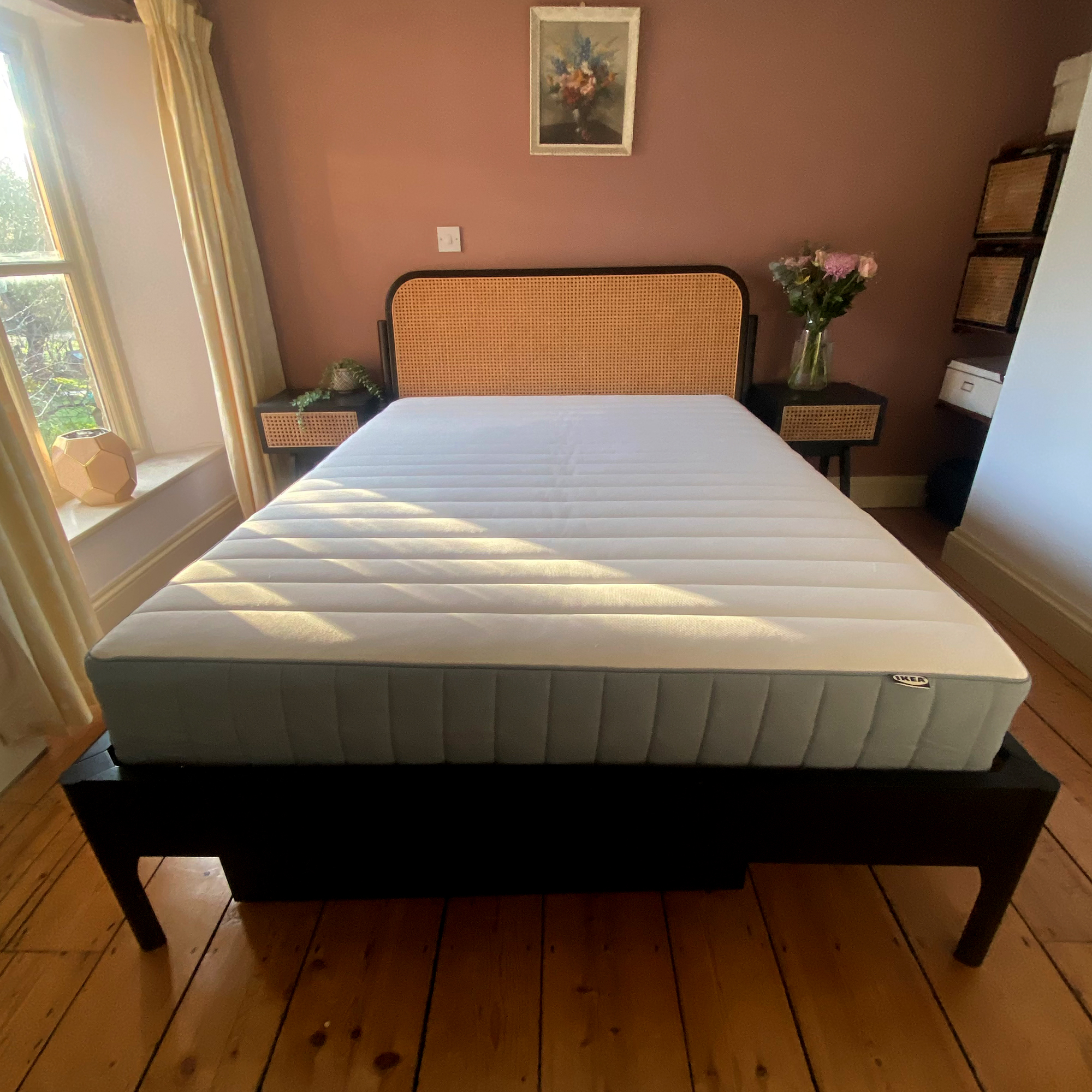
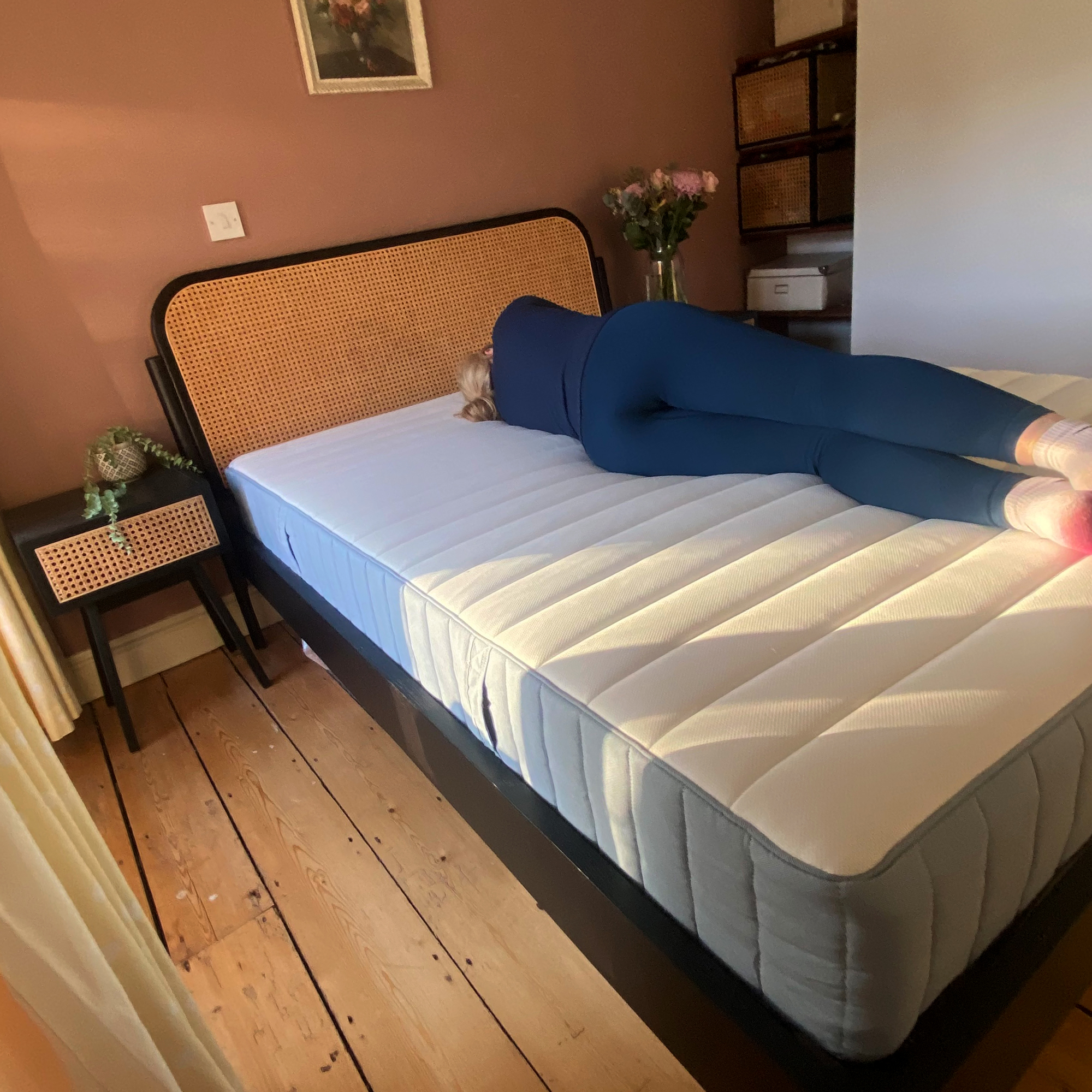
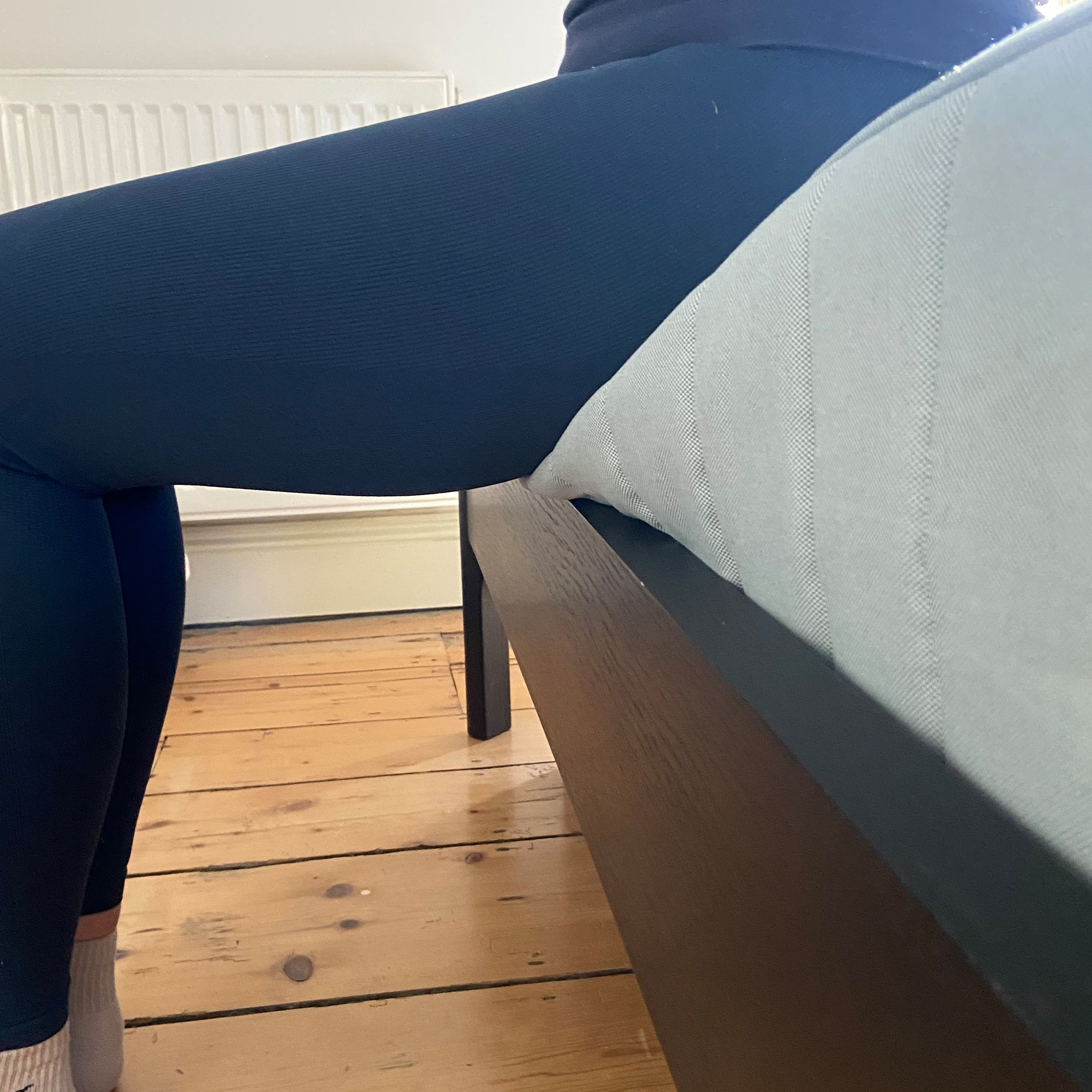
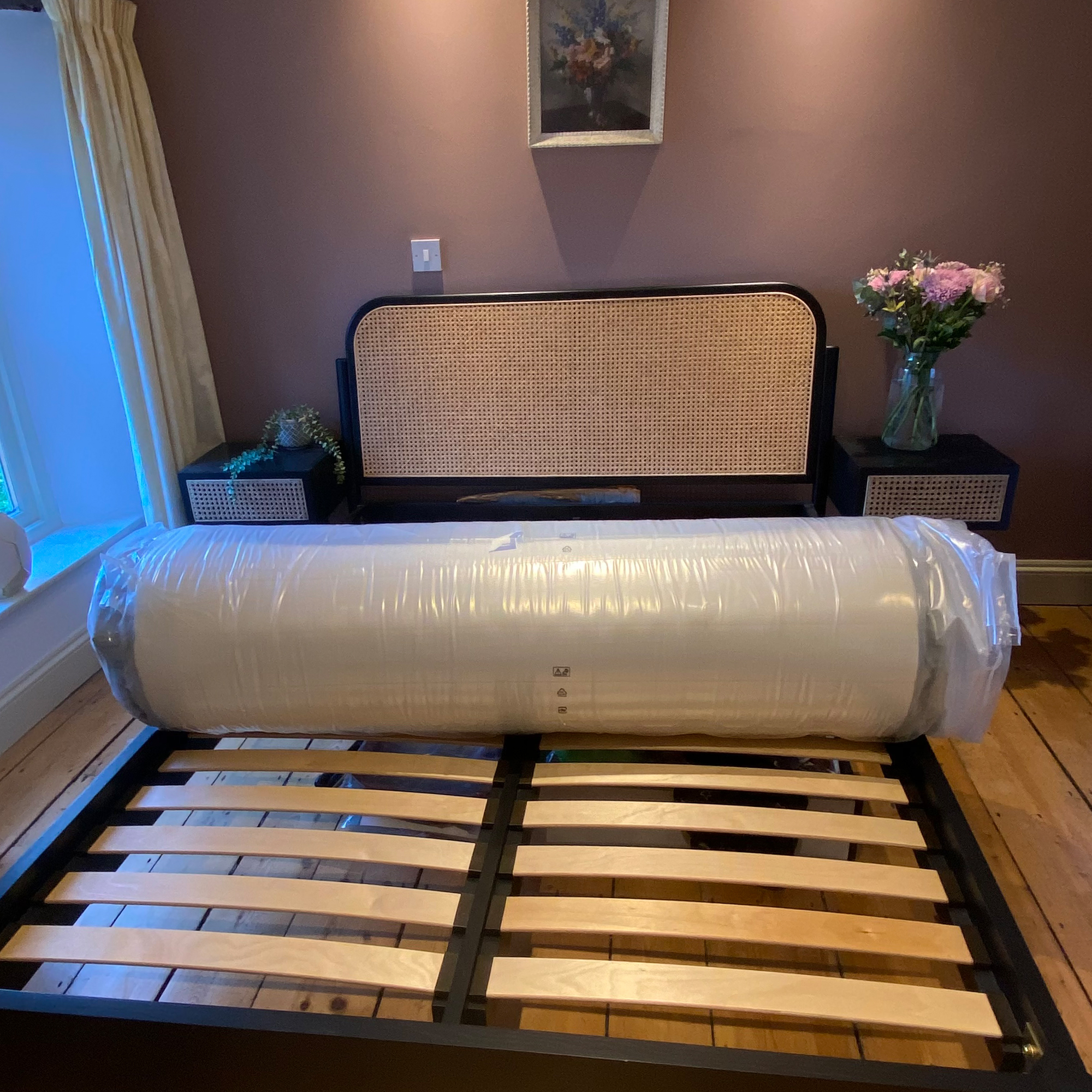
IKEA VALEVÅG pocket sprung mattress
Our expert review:
Specifications
Reasons to buy
Reasons to avoid
The VALEVÅG is IKEA's bestselling mattress, and after climbing on and off every mattress in my local IKEA showroom, I could see why; I felt it was the most comfortable IKEA mattress in the store. That said, I found both its medium-firm and firm tension options felt much softer than I expected. If you're after a mattress with firm support, this isn't it.
But then, this mattress is *very* affordable, my jaw actually dropped when I saw its price tag of just £219 for a double and £279 for a king-size, and I'm yet to find a mattress at that price point that does offers firm support.
When our reviewer, Rachel, tested it at home for a month, she agreed the tensions felt far softer than advertised, but was also pleasantly surprised to find she enjoyed its softer feel. 'In line with its price, this mattress looks quite basic, but on testing, its no-frills design pleasantly surprised me,' she says. 'The more I slept on it, the more I liked it. The cushioned top layer provided a decent level of comfort for my hip and shoulder when I lay on my side, and I felt the mattress gave a decent level of support. That said, I'm roughly nine and a half stone, so heavier sleepers may find its support lacking.'
What Rachel liked less was the mattress's lack of edge support and poor motion isolation; 'when I went to bed to read before my husband, I definitely noticed when he got into bed and moved around to plug in his phone and get comfy with his Kindle.'
'After testing multiple mattresses at similar price points, such as the Dreams, Zinus, ****' I found this the most impressive sub-£300 mattress. Like all of IKEA's products its a very good value buy. But, if you're budget can stretch further, the Simba Hybrid Essential remains my best budget buy'.
Our IKEA VALEVÅG pocket sprung mattress has more detail.
Mattress comparison at a glance
Mattress | Price (Double) | Ideal Home Rating | Brand Trustpilot Score | Sleep Trial | Delivery Options |
|---|---|---|---|---|---|
£799 | 5 | 4.4 | 200 nights | room of choice + white glove | |
£1,400 | 5 | 2.9 | 200 nights | white glove | |
£599 | 4 | 4.4 | 200 nights | room of choice + white glove | |
£1,999 | 4.5 | 3.8 | 100 nights | white glove | |
£1,049 | 4.5 | 2.8 | 200 nights | doorstep only | |
£1,525 | 4.5 | 4.1 | varies by retailer | varies by retailer | |
£1,149 | 4.5 | 4.4 | 200 nights | room of choice + white glove | |
£1,400 | 4.5 | 4.5 | 40 night (exchange only) | room of choice | |
£1,179 | 4.5 | 4.1 | varies by retailer | varies by retailer | |
£219 | 3.5 | 1.5 | 365 day exchange | room of choice |
How we test mattresses
As Ideal Home's Sleep Editor, I've laid on more than 100 mattresses to create this shortlist. From those 100 mattresses, I've chosen the 30 I deem to offer the best combination of comfort, support, and value for money to put through Ideal Home's mattress testing process.
During this process, we test each mattress in real-life conditions. After all, there is a big difference between testing a mattress for ten minutes in-store and sleeping on it night after night at home.
As such, our review team has slept on each mattress included in this guide (and many more) for at least two weeks in their own home, to share how each mattress really feels to sleep on.
We ask our reviewers to feedback on comfort and temperature regulation, test motion isolation by getting a buddy to roll over next to them and see if the movement can be felt through the mattress, test edge support by sitting and lying on the edge of the mattress, test responsiveness by seeing how much bounce the mattress has and how easy it is to change position on, and test ease of care by rotating or flipping the mattress.
We also consider whether the mattress comes with a sleep trial, assess the mattress delivery process, research any third-party reviews, and take into account value for money.
You can learn about our full testing process on our 'how we test mattresses' page.
Our expert testing panel

I'm Amy, and I've spent the last four years testing products from all the leading mattress brands. I’ve slept on hybrid, memory foam, and sprung mattresses, researched mattress construction, and spoken to a wide range of sleep experts – from osteopaths and physiologists to sleep scientists and product developers – to determine the key factors needed for a good night’s sleep.

Zoë is an interiors writer who specialises in sleep content. She's written for The Independent, The Evening Standard, Sunday Times Style, and regularly writes about all things sleep for Ideal Home, including testing mattresses.

Rachel is a 44-year-old mother and freelance reviewer who tests out affordable mattresses for Ideal Home to find the best budget-friendly buys.

Molly is one of the Ideal Home team's Content Editors and Certified Experts. Her and her partner (a self-certified hot sleeper) have tested out multiple Emma mattresses for this guide.

Rachael is a freelance journalist who has been writing about home, tech, and sleep-related content for the likes of Tom’s Guide, Creative Bloq, Independent, and more, for the past 15 years. She regularly reviews mattresses and sleep products for the Ideal Home team.

Jen is a mother of two who has 10 years of experience as an editor and product reviewer specialising in home appliances, smart tech, and mattresses. Her and her 3-year-old daughter test out childrens' mattress for the Ideal Home team.
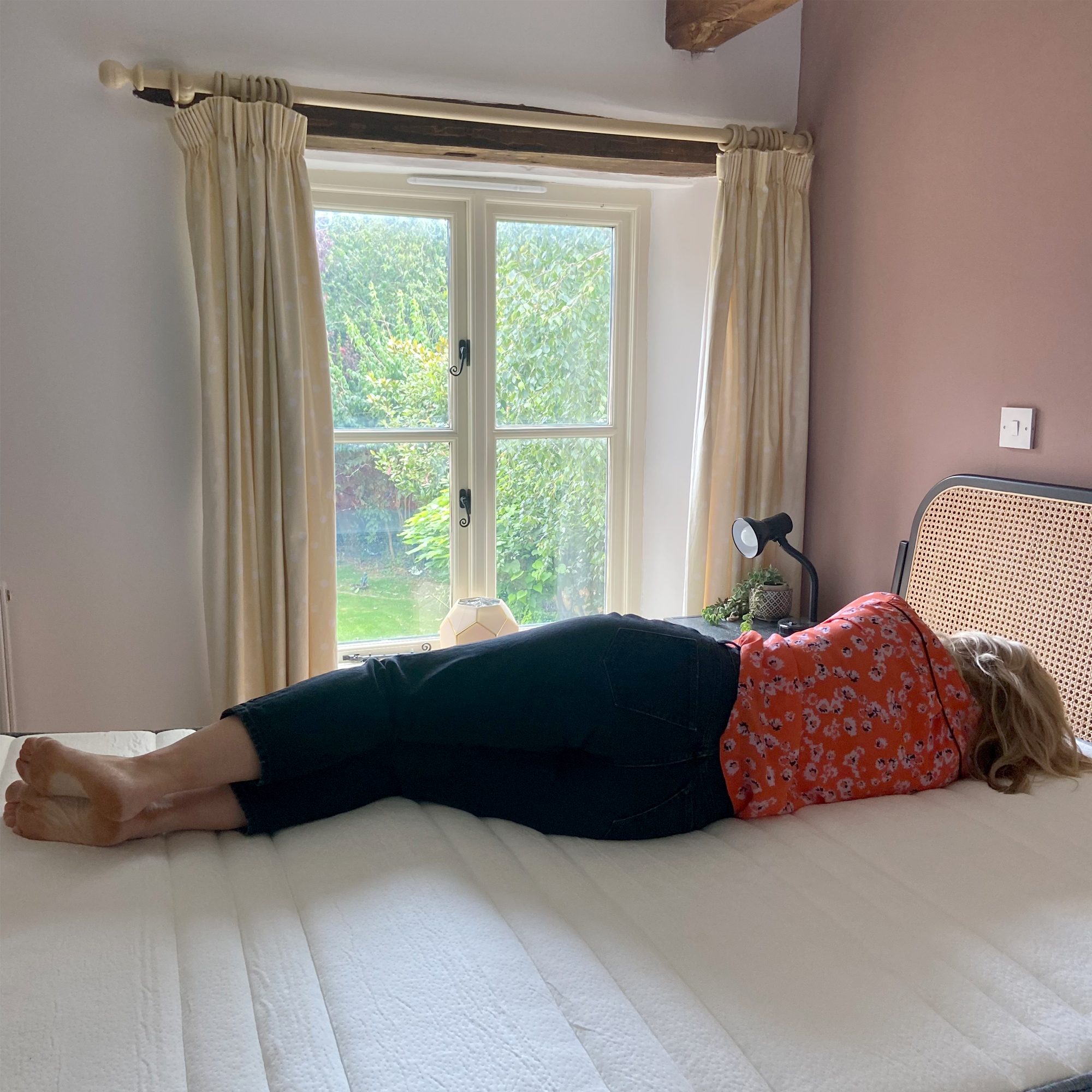
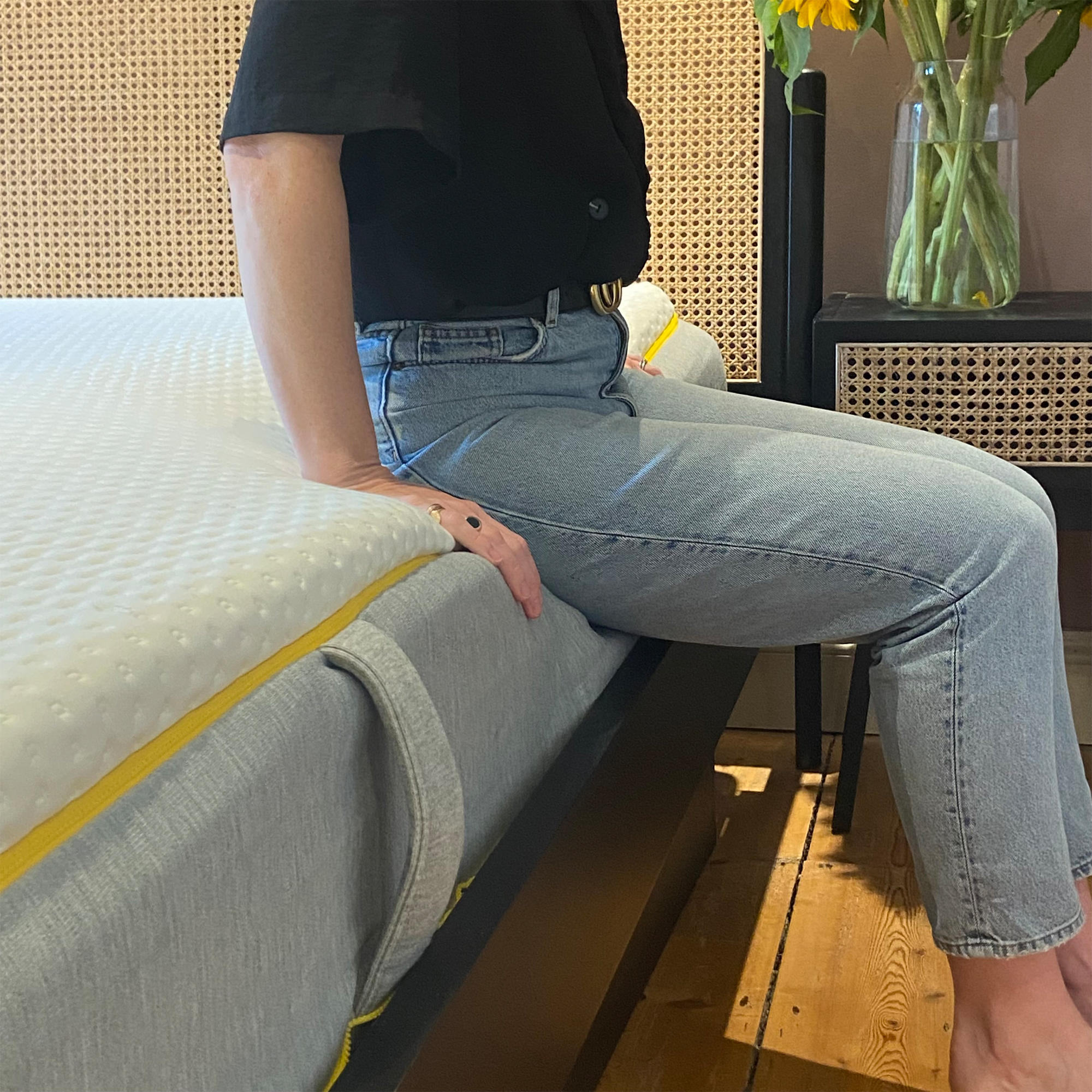
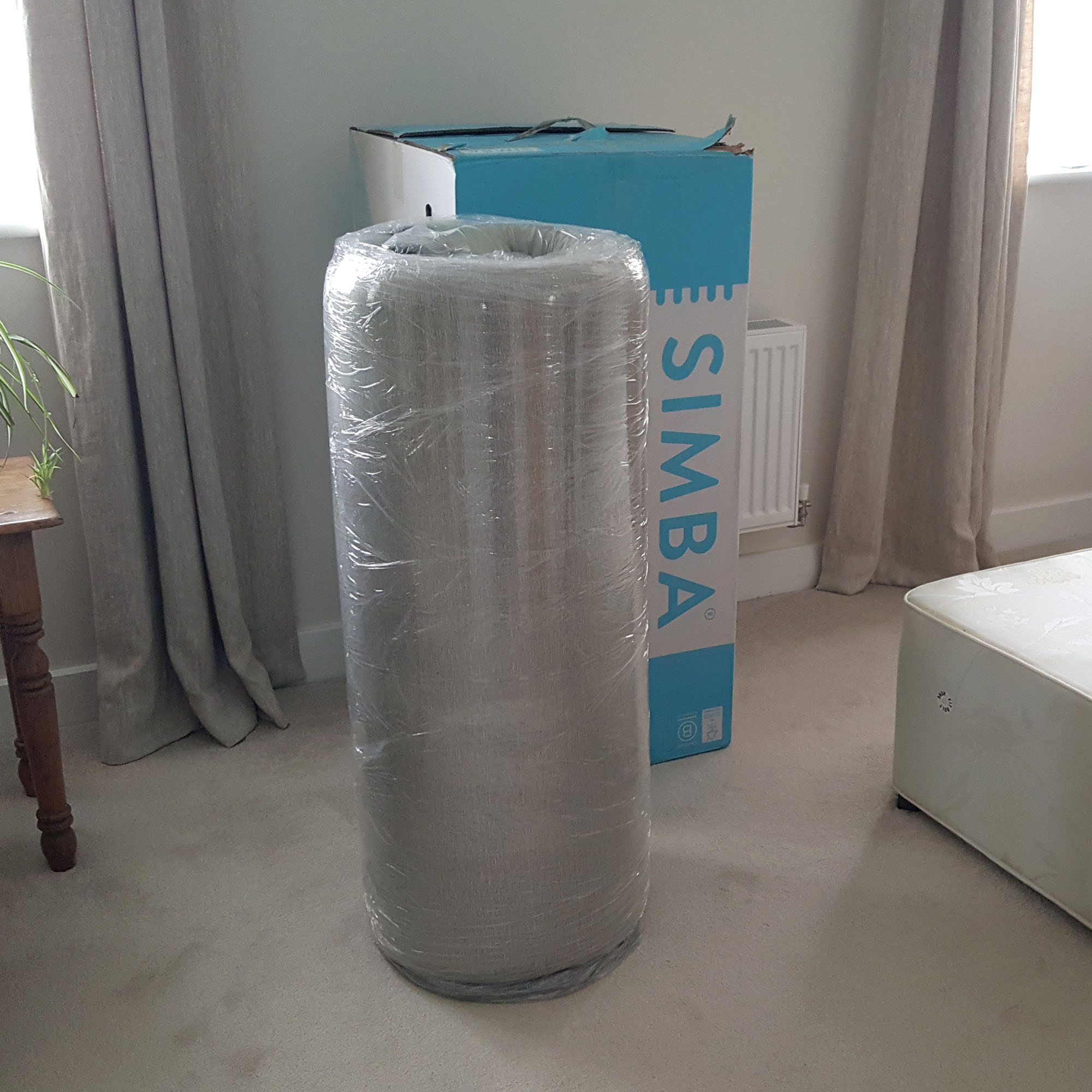
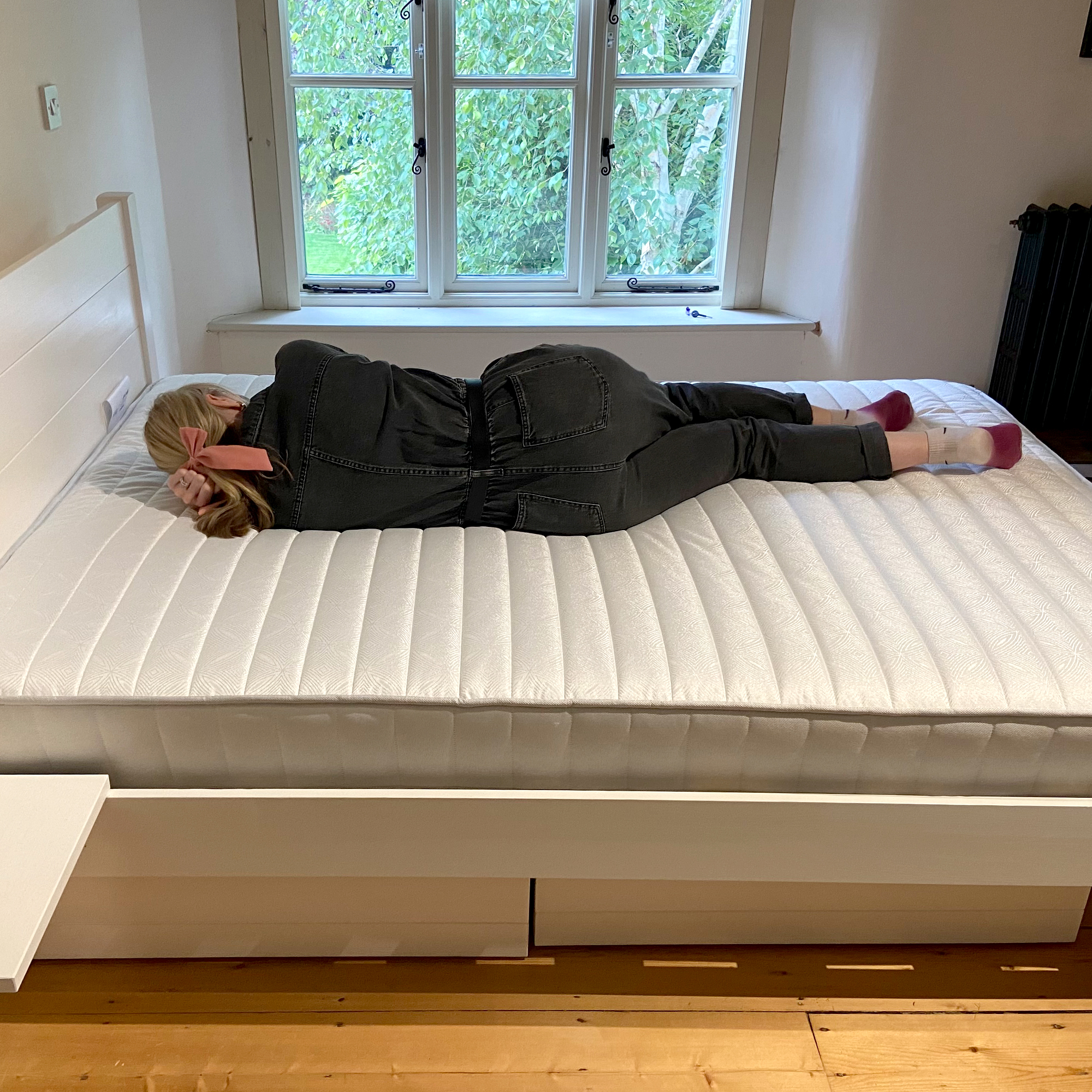

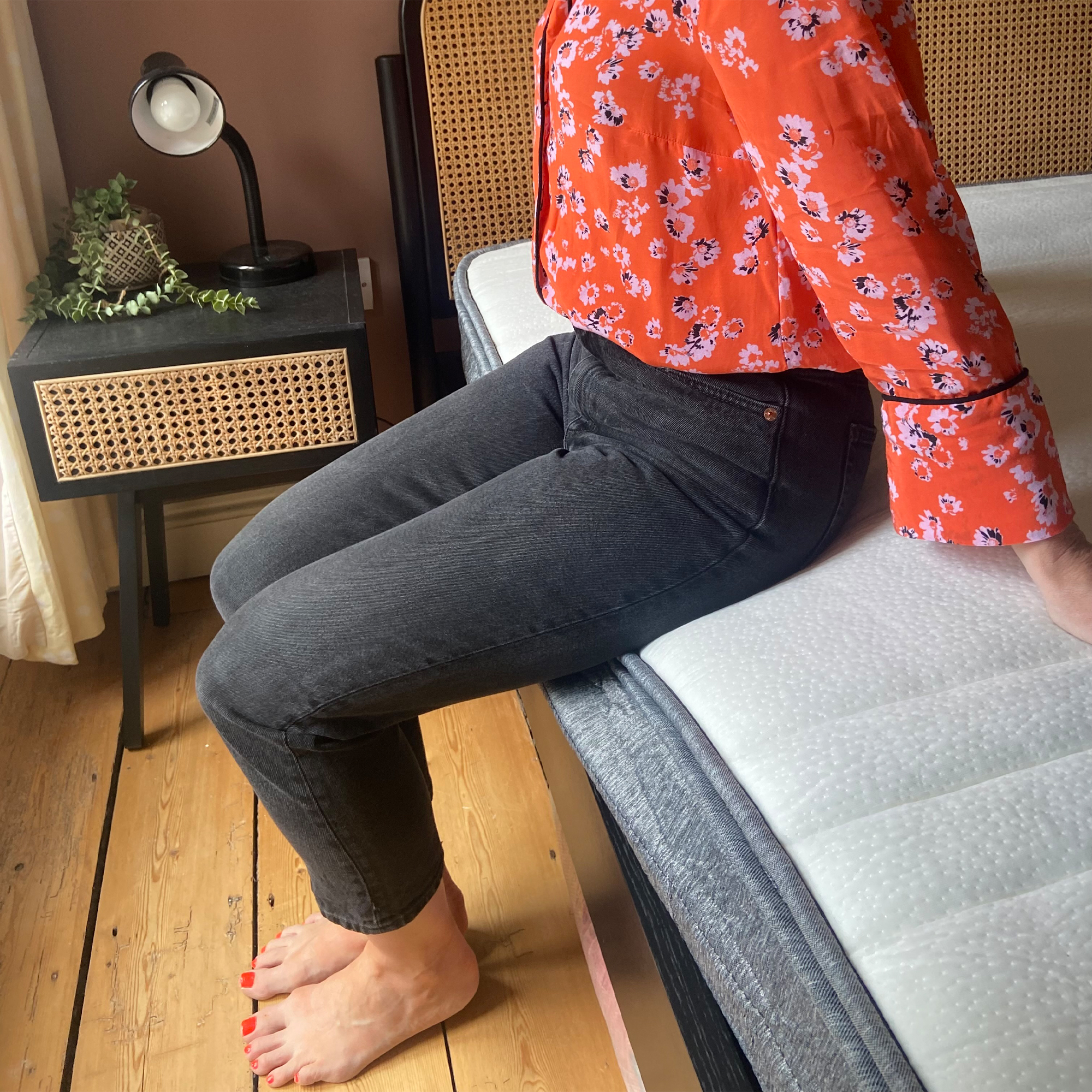
How to choose a mattress
Finding the best mattress for your most comfortable night's sleep can be tricky. That's because we each have different needs and preferences for a mattress.
The best way to find the right mattress is to start by testing out some options in-store to get a feel for what feels comfortable. Our guide to how to test a mattress in-store has some practical pointers.
I've also rounded up some key considerations to factor in when you're choosing the best mattress for your body below. And first up, is your usual sleeping position.
- Sleeping position: If you're a back sleeper a pocket spring or hybrid mattress in a medium-firm to firm tension is likely to offer the support you need. In contrast, side sleepers need a more cushioned sleep surface that allows the shoulder and hip to sink into the mattress; a mattress with a latex, pillow top, or memory foam surface in a medium to medium-firm tension can be a good choice as it will cushion the joints. And, front sleepers need a firm mattress that doesn't allow the hips to sink too low. (However, stomach sleeping may be best avoided if you can. 'Sleeping face down is generally advised against, as it significantly increases the likelihood of straining your neck muscles and irritating your lower back', explains Dave Gibson, registered osteopath, sleep expert, and founder of The Sleep Site).
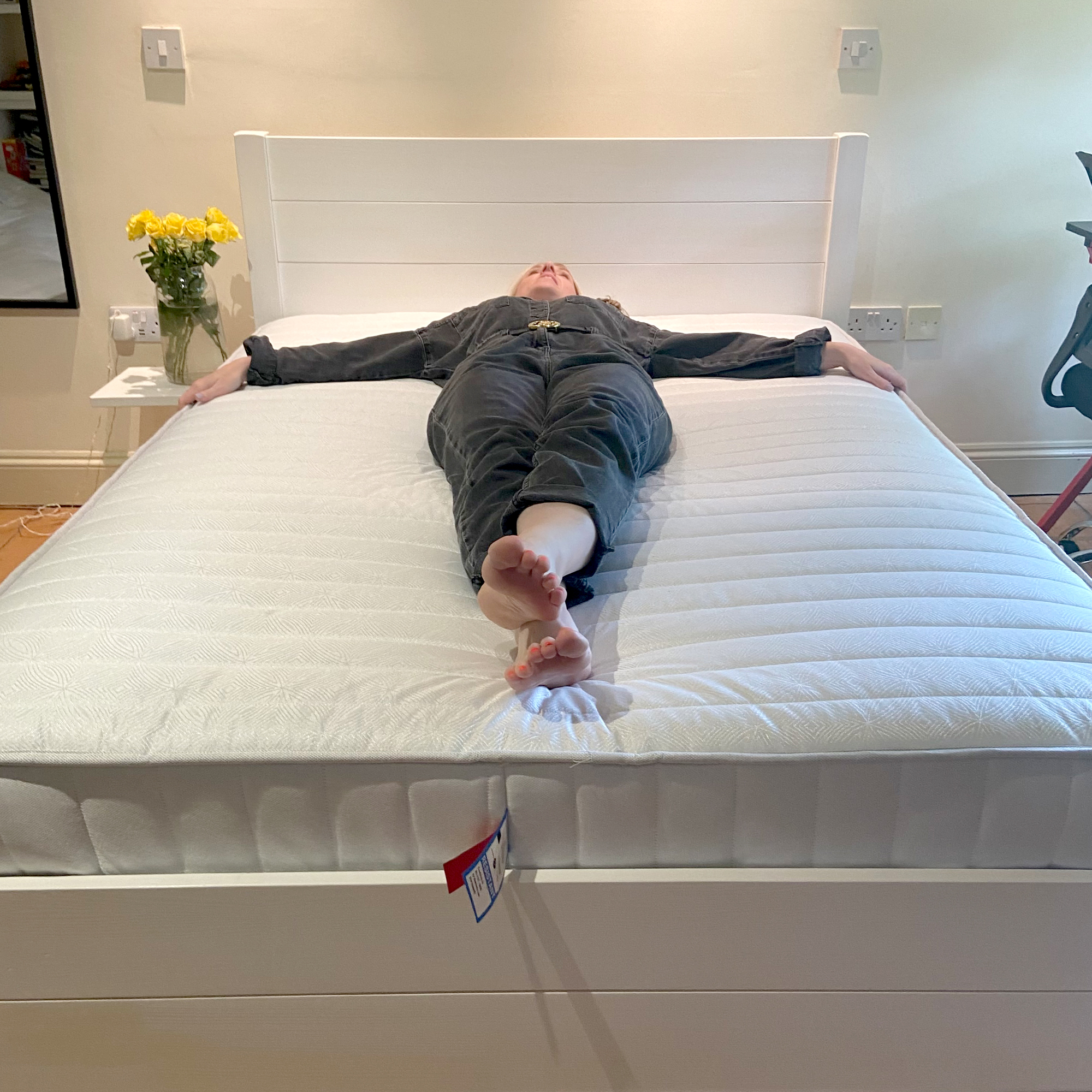
- Motion isolation: If you sleep with a partner, look for a mattress with good motion isolation. This means that when one of you rolls over or tosses and turns in bed, those movements won't vibrate through the mattress and disturb your co-sleeper.
- Responsiveness: If you're an active sleeper who changes position a lot in the night, or you have any mobility issues, the responsiveness of a mattress can be important. This means how easily the surface of the mattress allows you to change position in bed. You may want to steer clear of memory foam which moulds to your body to cradle it and can make turning over more difficult.
- Edge support: A mattress with good edge support will have an even tension across the whole mattress surface. This means that when you sit or lay on the edge of the mattress it shouldn't dip down too much. This increases the usable sleeping area of the mattress and makes it easier to push off the bed and stand up.
- Weight: Perhaps surprisingly, our weight can affect whether a soft, medium, medium-firm, or firm mattress is best for us. As osteopath Dave Gibson explains, 'heavier individuals may require a firmer support, while lighter individuals might find a softer mattress more comfortable'. Our guide to what type of mattress is best for heavier people has more info.
- Aches and pains: 'Research generally suggests that a medium-firm mattress is best for alleviating lower back pain' says osteopath Dave Gibson. Alternatively, if you're a side sleeper and find your shoulder or hip joints become sore or get pins and needles during the night, you may sleep better on a mattress a pillow top, latex, or memory foam top layer to relieve pressure on the joints. (If your aches and pains are new or temporary, you may also find one of the best mattress toppers can transform the feel of your existing mattress).

- Temperature regulation and breathability: In a study published by the National Library of Medicine, researchers found that being too hot at night can contribute to poor sleep quality. A mattress that offers good breathability makes it easier for your body to maintain a steady temperature and prevents overheating. Breathable mattresses tend to be filled with natural materials, in particular wool, which is well-known for its temperature-regulating properties. In contrast, synthetic materials, like memory foam, lack breathability and can be a bad choice for hot sleepers.
- Ease of care: Mattresses come in two types, one-sided mattresses that will need rotating every few months to ensure even wear and tear, and two-sided mattresses that can be both rotated and flipped upside down. If you live alone or struggle to lift heavy weights a one-sided mattress can be easier to care for, but some people think a two-sided mattress has better longevity.
- Mattress size: If you have a small bedroom you may not have as much choice in mattress size as you'd like. However, when choosing the right mattress size, bigger is usually better, especially if you share a bed. As sleep expert Dave Gibson points out, couples would need to opt for 'a super king to give you the same room as two single mattresses'.
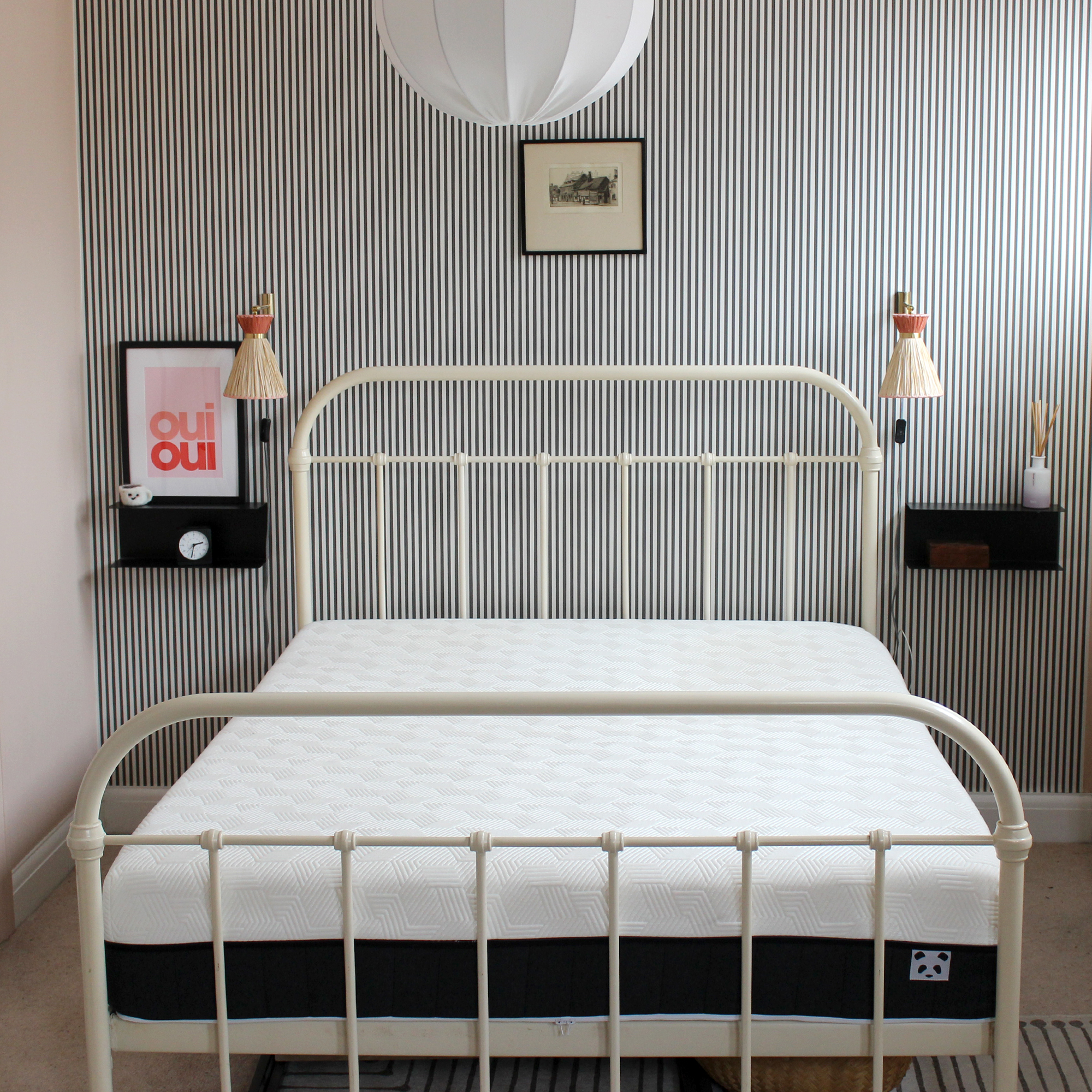
Once you've tested a mattress in-store (or found one online that looks like it could fit the bill), see if the brand offers a sleep trial so that you can continue to test out the mattress at home, on your own bed. This is important because, as sleep expert Dave Gibson explains, 'it can take about four weeks to fully adjust to a new mattress'.
On top of that, whether you have a sprung divan bed base, an ottoman bed, or a slatted bed frame, your bed base can affect how a mattress feels, and your bed at home may be different from the one in the mattress showroom.
It's also worth checking what the delivery process is. Will your new mattress be delivered as a mattress-in-a-box (super useful for those of us with awkward access) or flat? Our guide to everything you need to know about mattress delivery has more detail.
Plus, you might want to know if the retailer you're buying your mattress from offers collection and disposal of your old mattress. You can organise this separately – our guide to how to dispose of a mattress explains how – but it's often easier to have the old mattress taken away on the day of delivery.
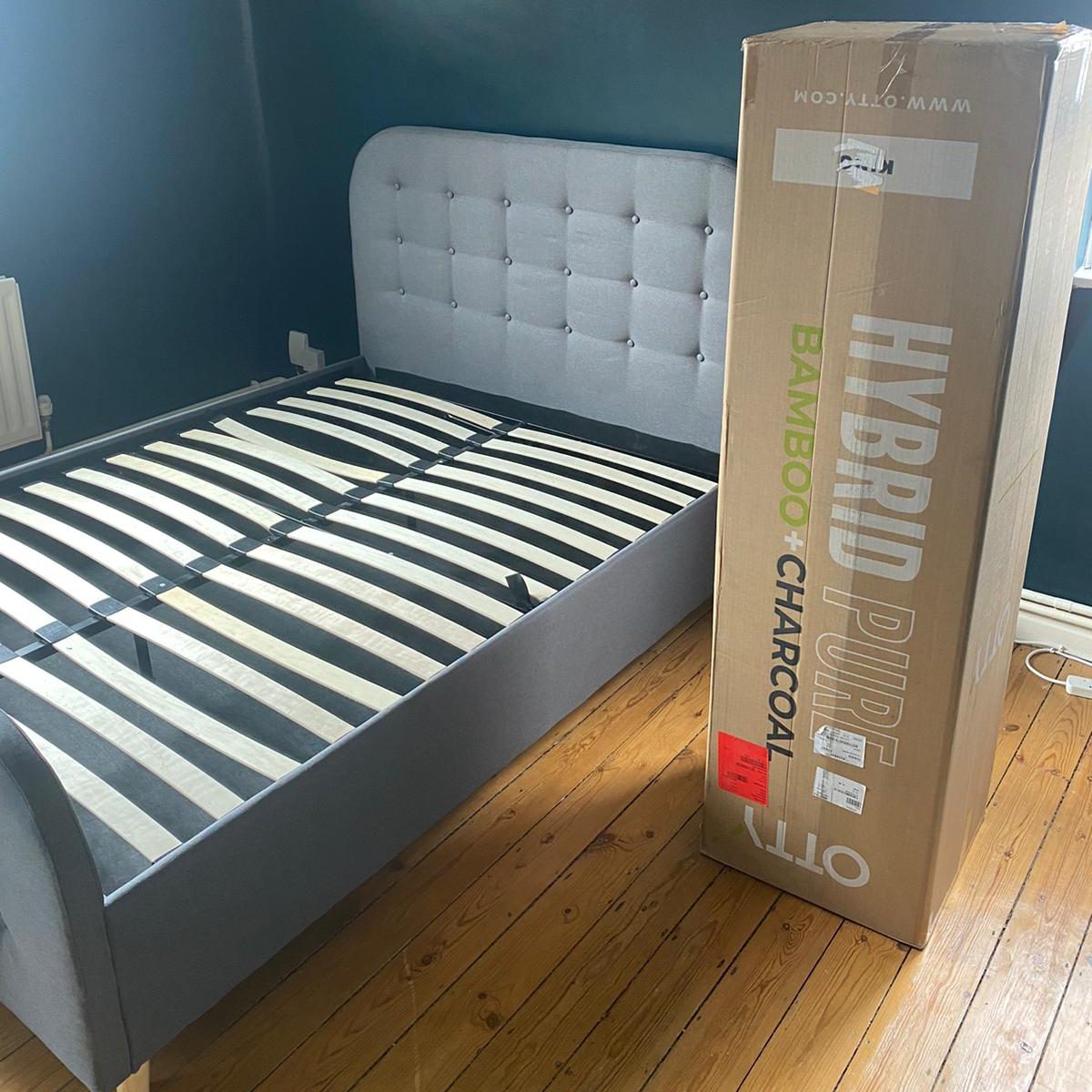
FAQS
What is best overall rated mattress?
After testing multiple mattresses, our review team thinks that the Simba Hybrid Original mattress is one of the best mattresses you can buy.
The Hybrid Original offers a great mix of cushioning and support at a reasonable price point, and Simba’s customer service is impressive, with the brand offering a 200-night sleep trial, a range of delivery options, and a recycling service for your old mattress.
Which mattress is best, spring or foam?
Our guide to spring versus foam mattresses, has more detail, but neither type of mattress outperforms the other, they're just different.
Modern foam mattresses and memory foam mattresses tend to be the most affordable, are very cushioning, can be delivered boxed for convenience, and offer great motion isolation. However, they can offer less support, cause overheating, and aren't usually environmentally friendly.
Traditional open-coil spring mattresses or pocket spring mattresses usually offer far better breathability and temperature regulation, good bounce, and can be a much more environmentally friendly choice when made using natural materials. However, at the lower end of the price scale, some sprung mattresses can lack good motion isolation.
There are also now hybrid mattresses which many people think offer the best of both worlds, combining the pros and cons of foam and sprung mattresses.
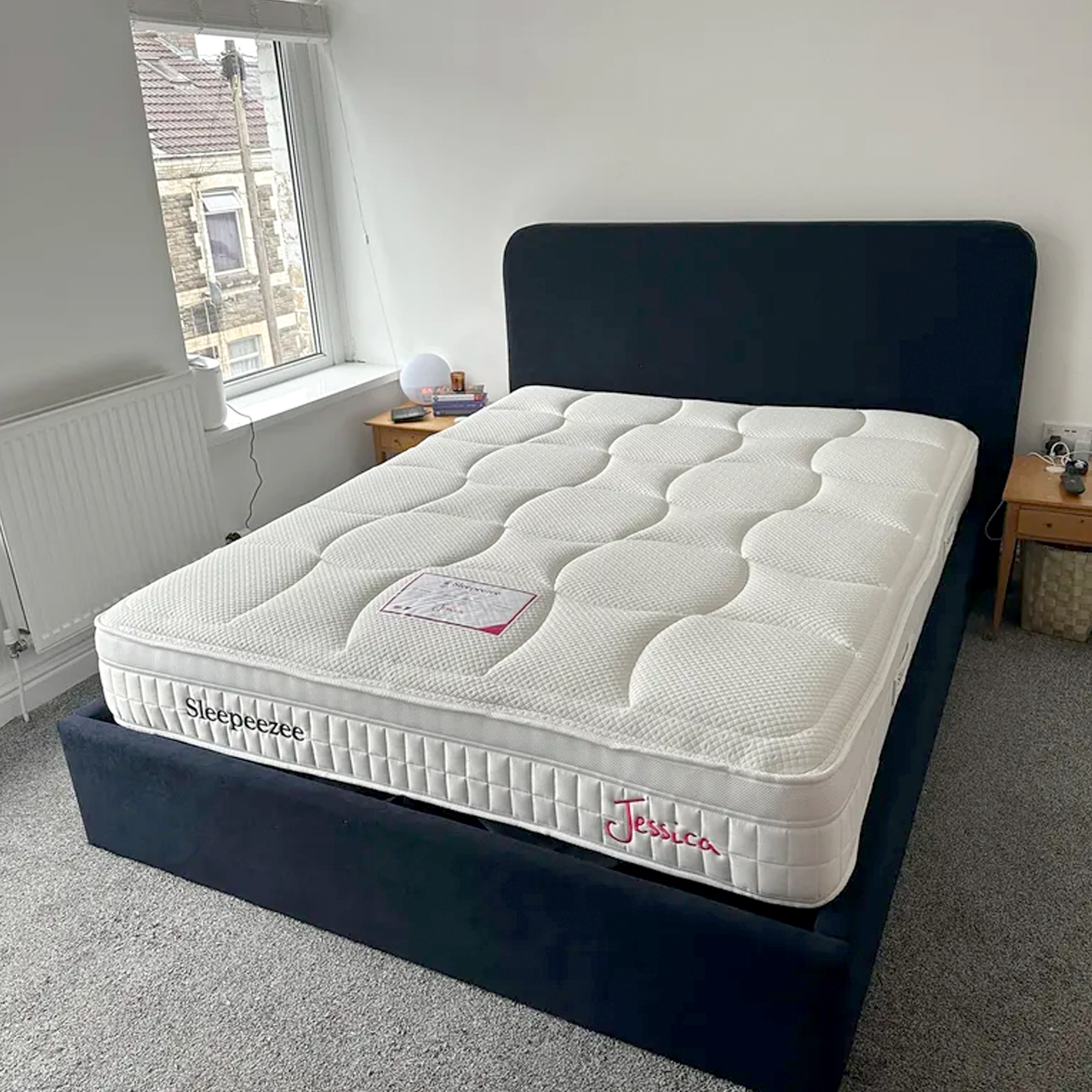
How much should you spend on a mattress?
You can get a budget mattress for around £300-£400 for a double, but during our tests, we've struggled to find a really good mattress for that price.
Instead, I'd recommend budgeting between £600-£800 for a good value mattress that has longevity. That should get you a good quality memory foam or hybrid mattress. Natural materials will cost more and set you back upwards of £1200 for the same size mattress.
Is an expensive mattress worth it? Having tested multiple mattresses at all ends of the price scale, in my opinion, yes. After all, experts say that a good mattress should last you between seven and ten years, and that means you could be sleeping on it for up to 3650 nights. Spending £1200 works out at an investment of 32 pence per day on a good night's sleep.
Plus, you don't necessarily need to pay full price. Our mattress deals page keeps track of all the latest discounts, with savings particularly common during the January sales and the month of Black Friday in November. Time your purchase during a sale and you could save a significant amount.
Which is the best mattress brand?
After four years of testing mattresses from a wide range of companies, there are some brands that I’ve found to reliably deliver a great night’s sleep.
If you’re looking for an affordable mattress Simba, Silentnight, and Sleepeezee all regularly score highly with our review team. Sealy is great choice for a firmer mattress, and Tempur offers some of the best all-foam memory foam mattresses if you prefer a soft tension.
However, if you have more budget to spend, I would always opt for a natural mattress for its enhanced breathability and more eco-friendly materials. Hypnos, Harrison Spinks, and naturalmat are all great brands to consider.
Get the Ideal Home Newsletter
Sign up to our newsletter for style and decor inspiration, house makeovers, project advice and more.

Amy is Ideal Home’s Sleep Editor and the Ideal Home Certified Expert on Sleep. She's spent the last four years researching and writing about what makes for the best night’s sleep during the day and testing out sleep products to find the best-in-class by night. So far she’s clocked up over 10,000 hours of pillow, duvet, and mattress testing experience.
Our go-to for all things sleep-related, she’s slept on and under bestselling products from Simba, Emma, Hypnos, Tempur, Silentnight, Panda, and many many more.
As a hot sleeper, Amy is always on the lookout for the most breathable bedding, but she also leads a wider team of testers to ensure our product testing encompasses both hot sleepers, cold sleepers, front sleepers, back sleepers, side sleepers, and everything in-between.
-
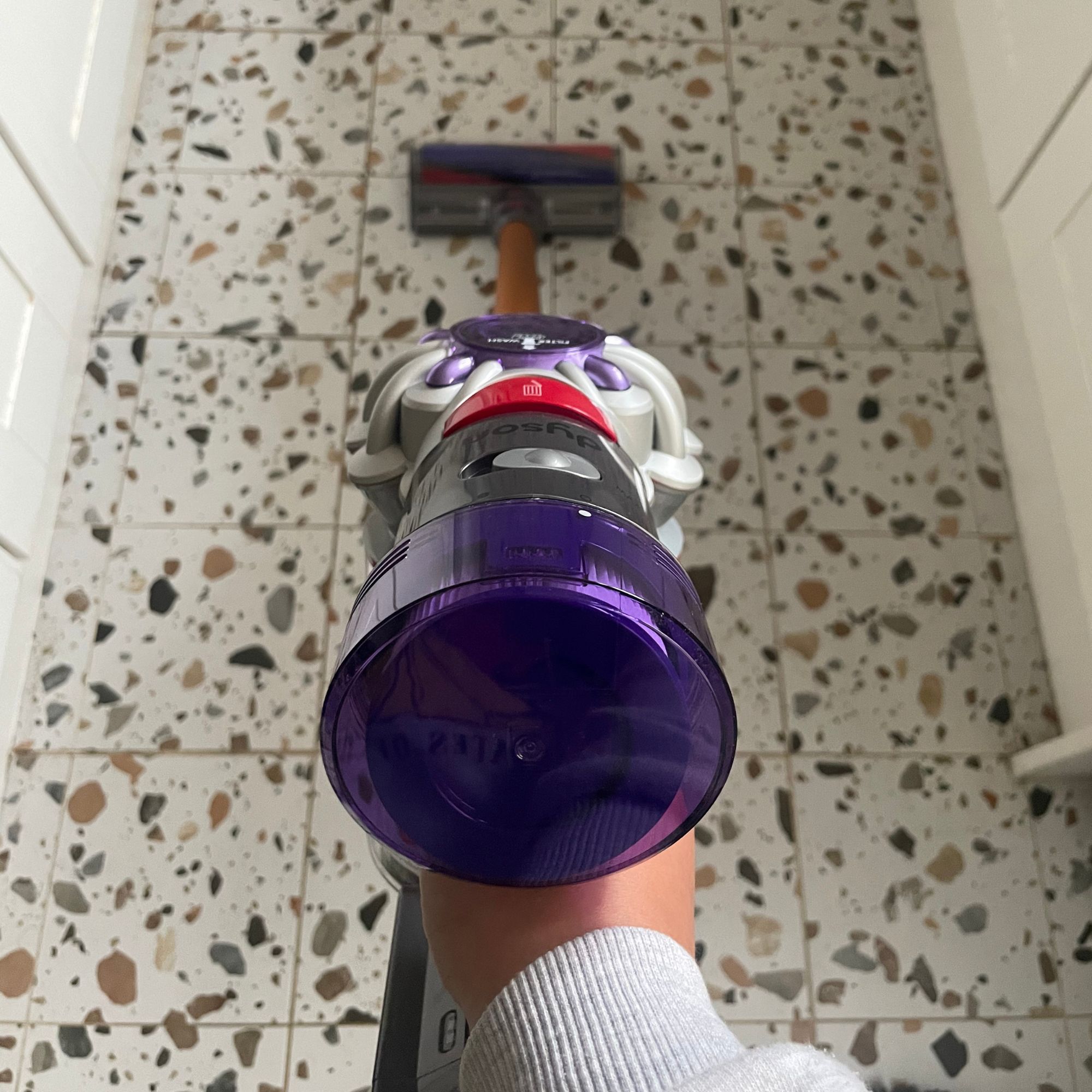 I asked a Dyson engineer how you can avoid these common Dyson vacuum cleaner problems — and how to make the most of your machine
I asked a Dyson engineer how you can avoid these common Dyson vacuum cleaner problems — and how to make the most of your machineFrom a loss of suction to poor battery life, I asked the questions to get the answers you need
By Lauren Bradbury
-
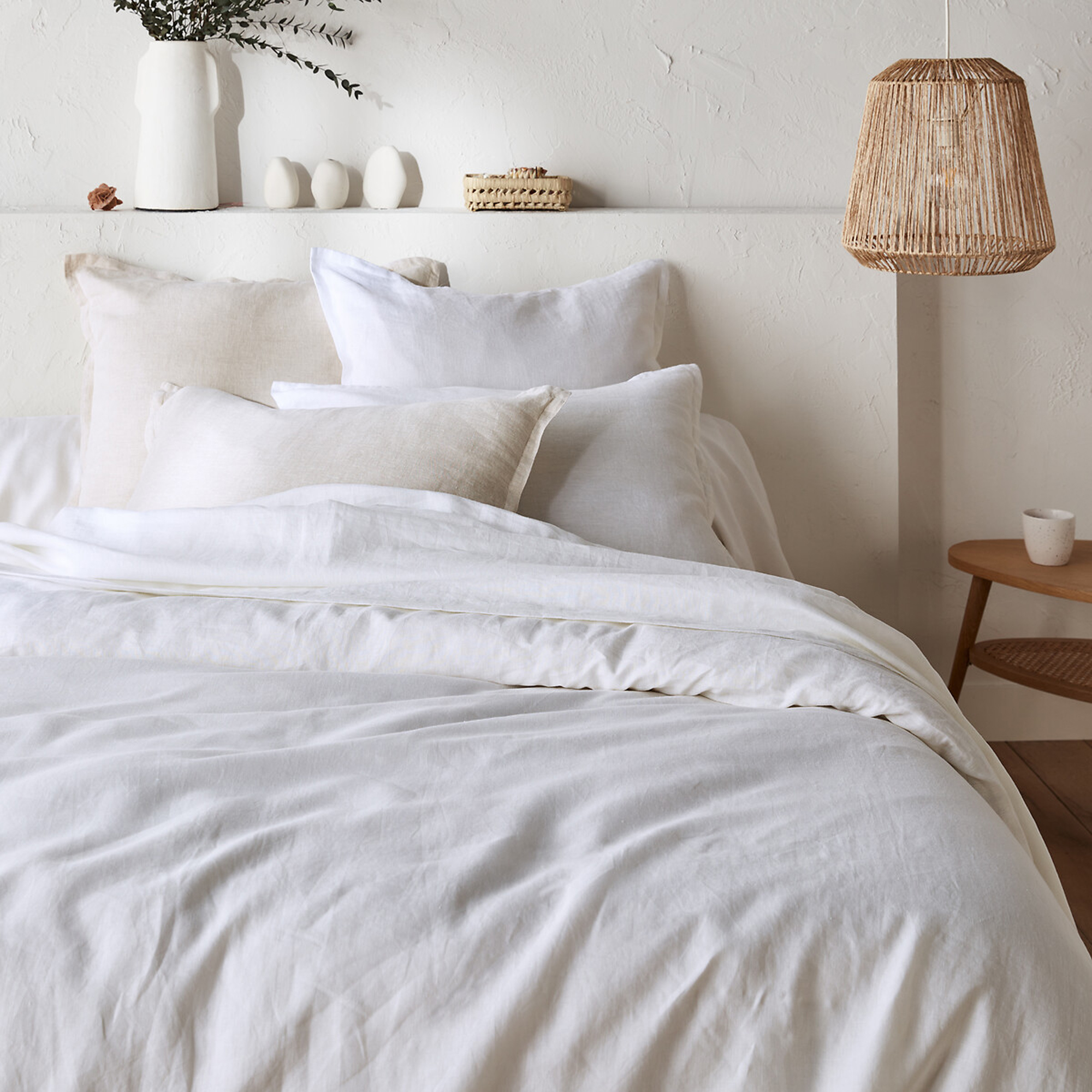 'I've now bought 3 different colours' – my favourite affordable linen bedding is currently half-price, and the 5-star reviews speak for themselves
'I've now bought 3 different colours' – my favourite affordable linen bedding is currently half-price, and the 5-star reviews speak for themselvesThe half-price linen bedding that owners can't stop raving about
By Amy Lockwood
-
 5 brilliant budget alternatives to paving slabs that won't cost the earth
5 brilliant budget alternatives to paving slabs that won't cost the earthLooking to pave your garden on a budget? Try these stand-ins...
By Sophie King